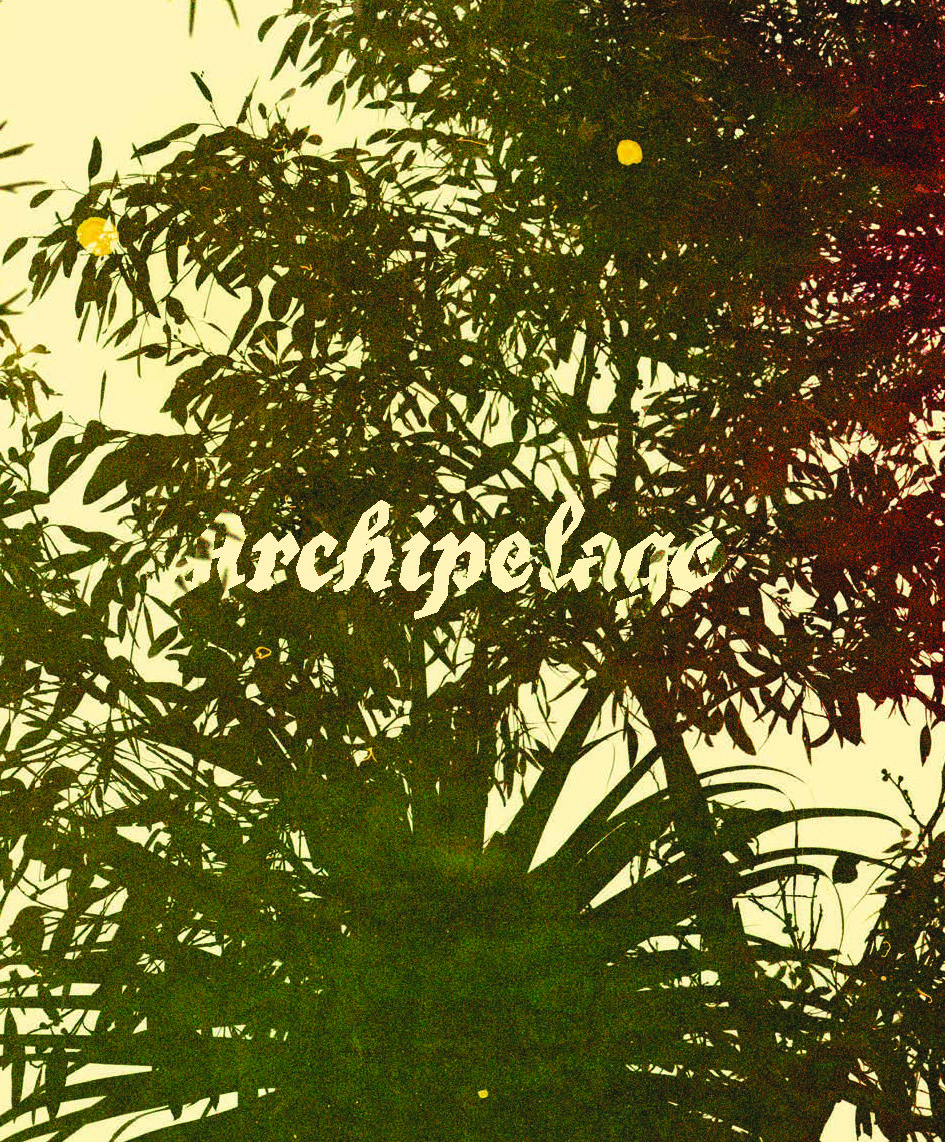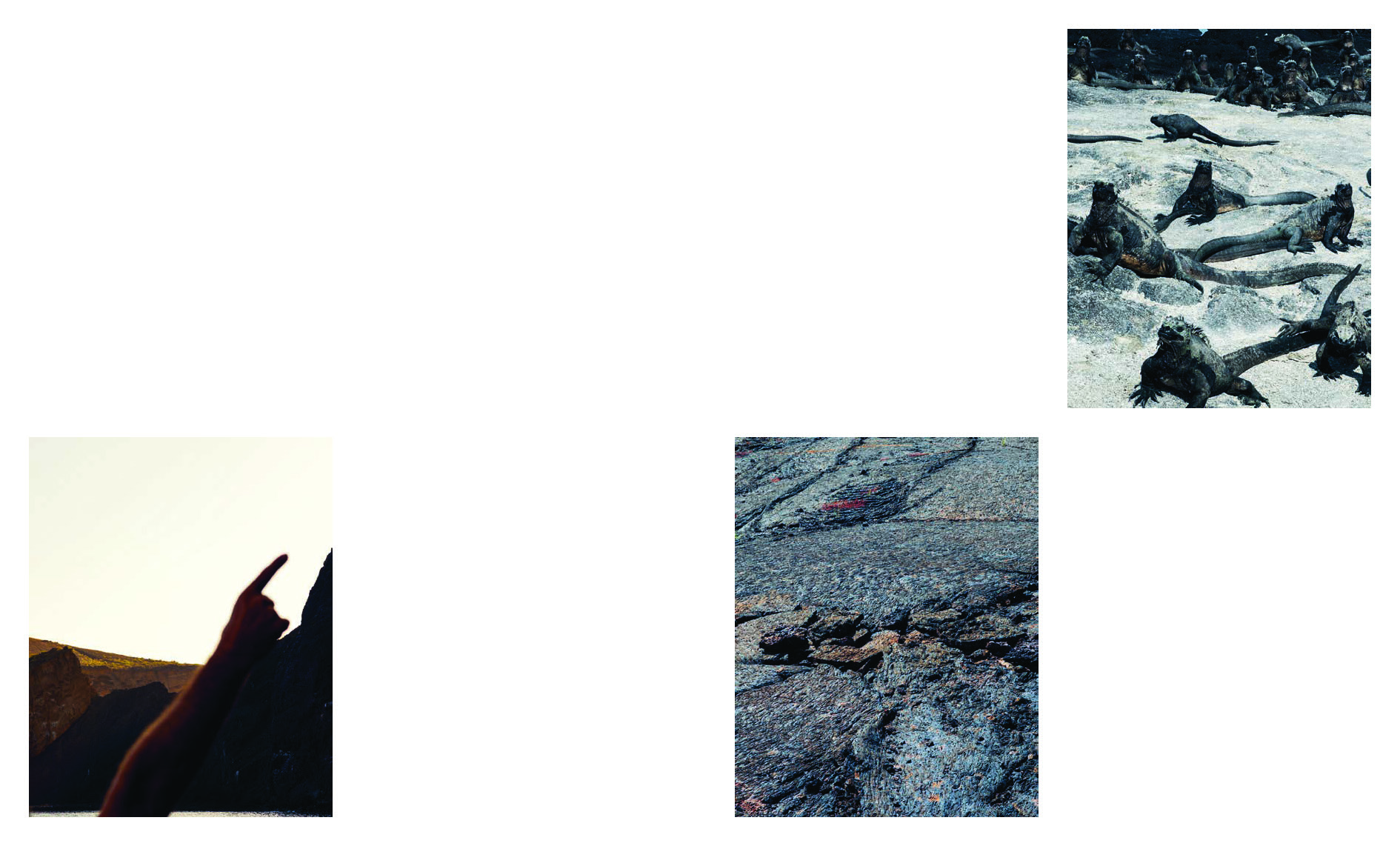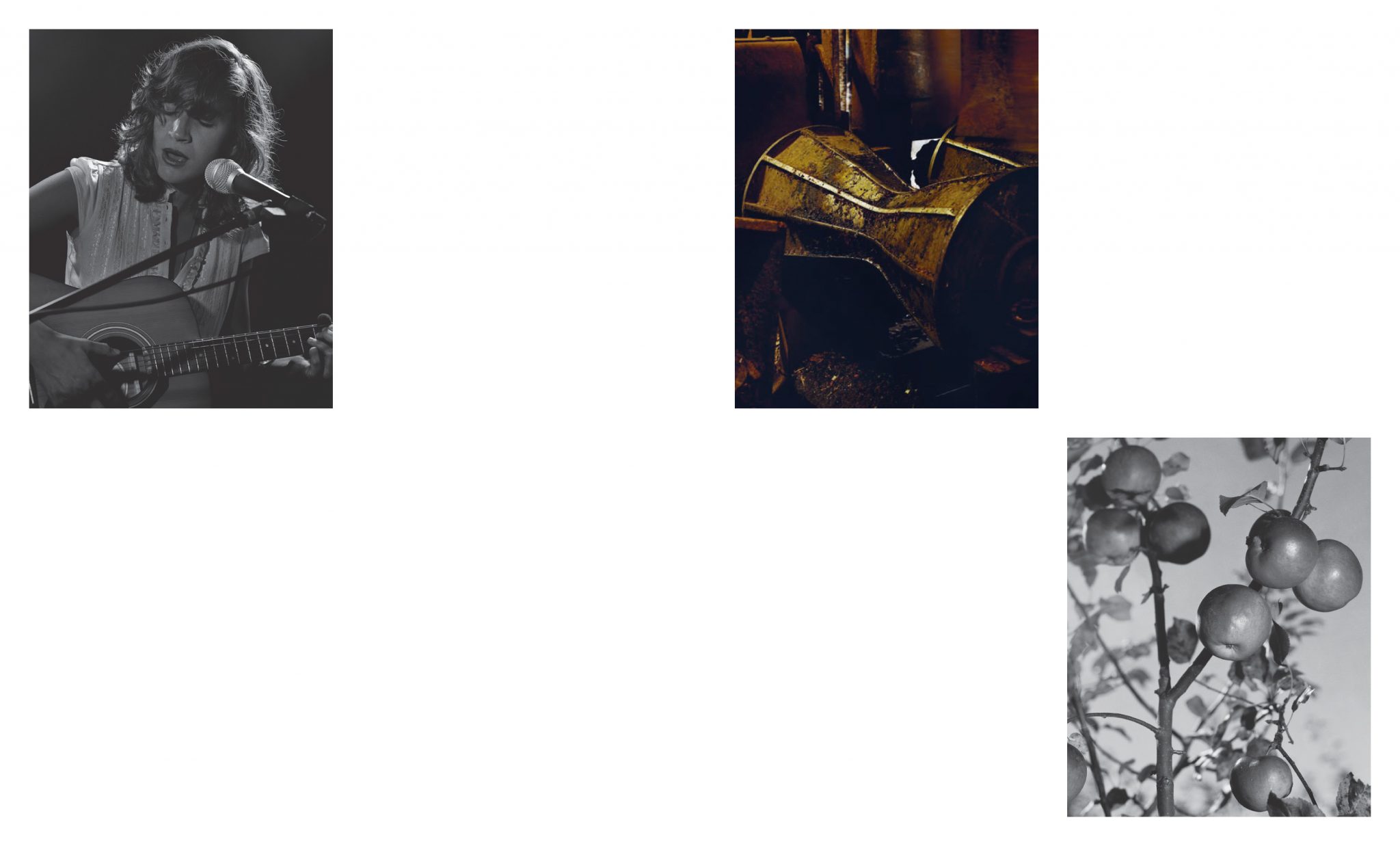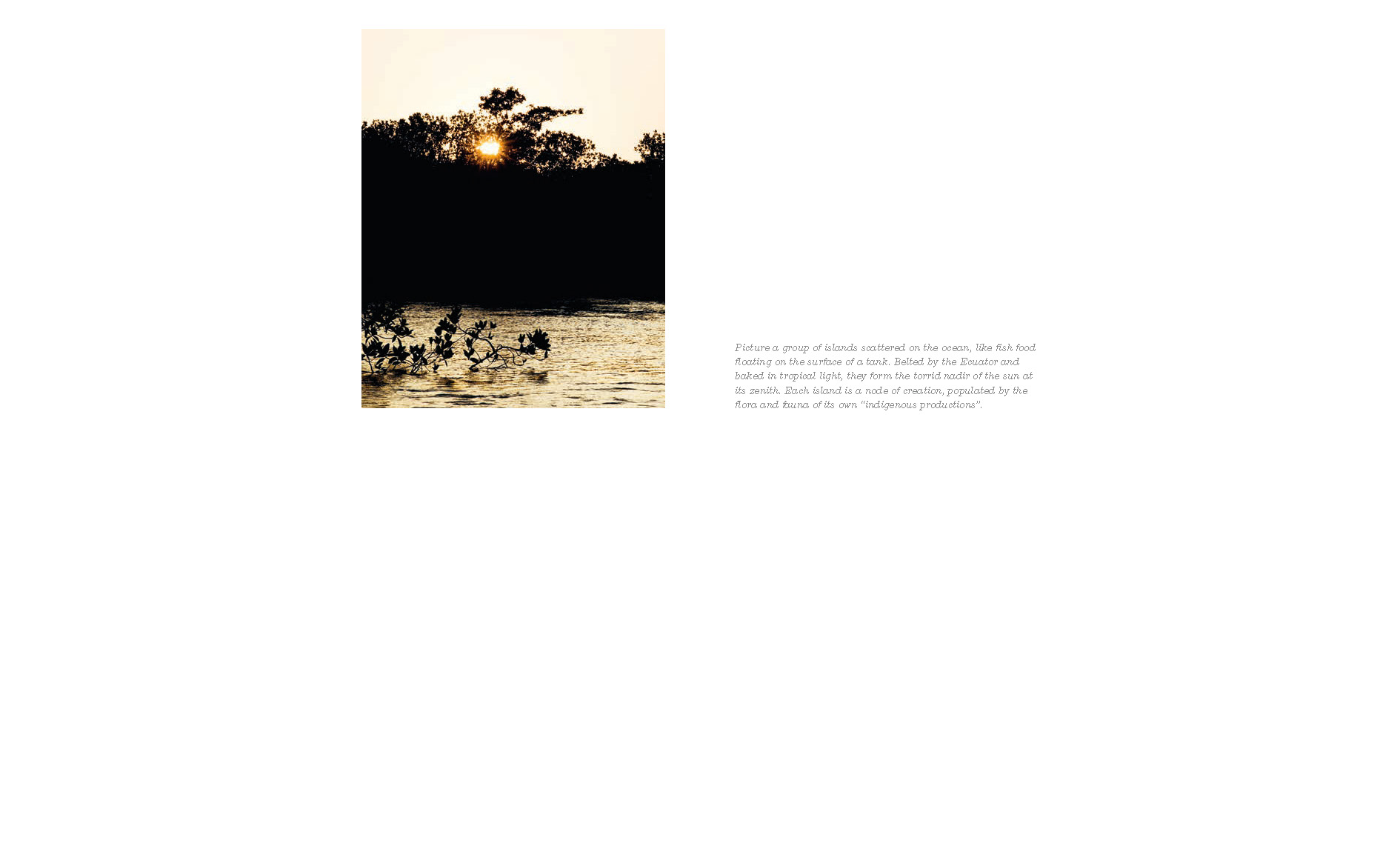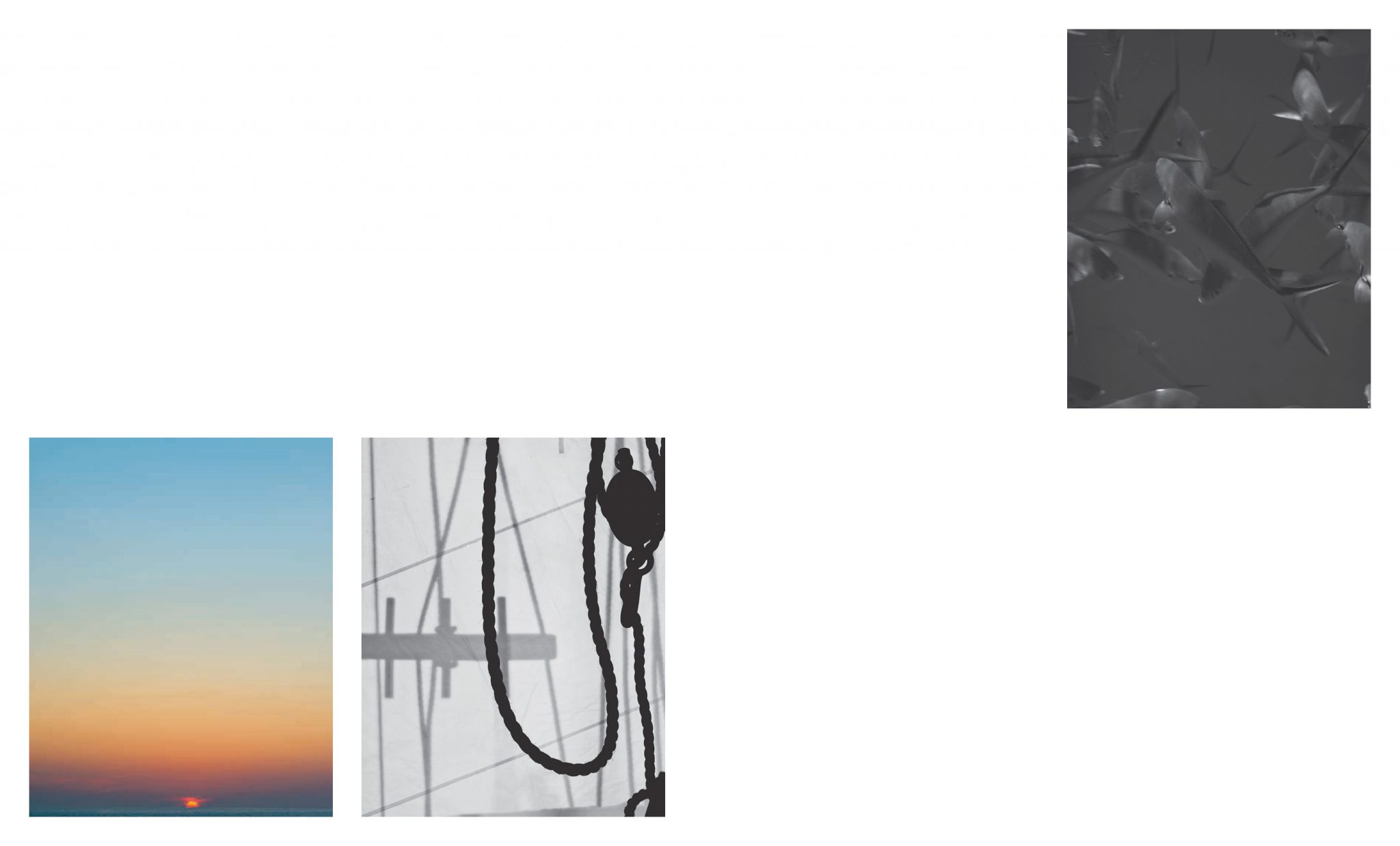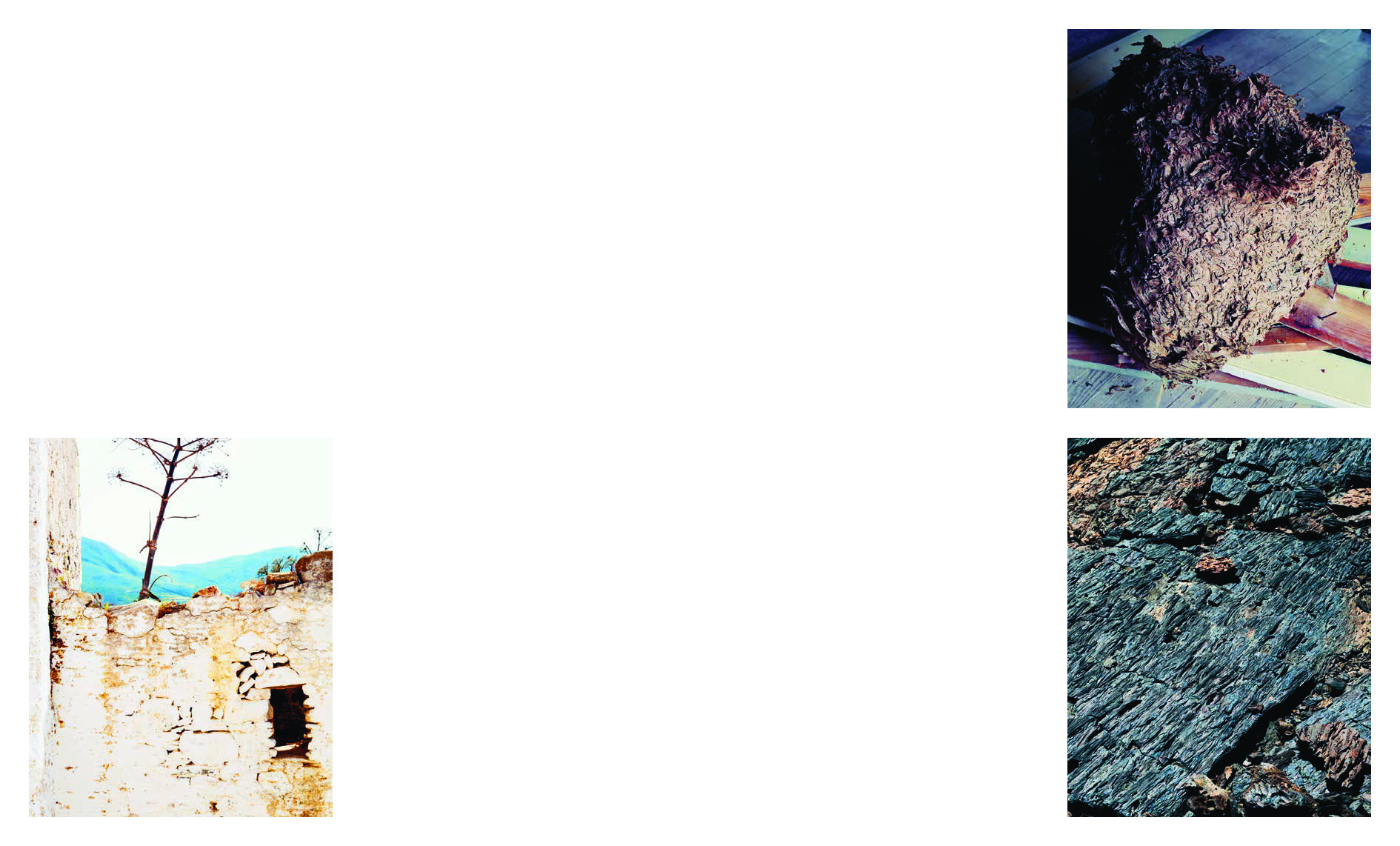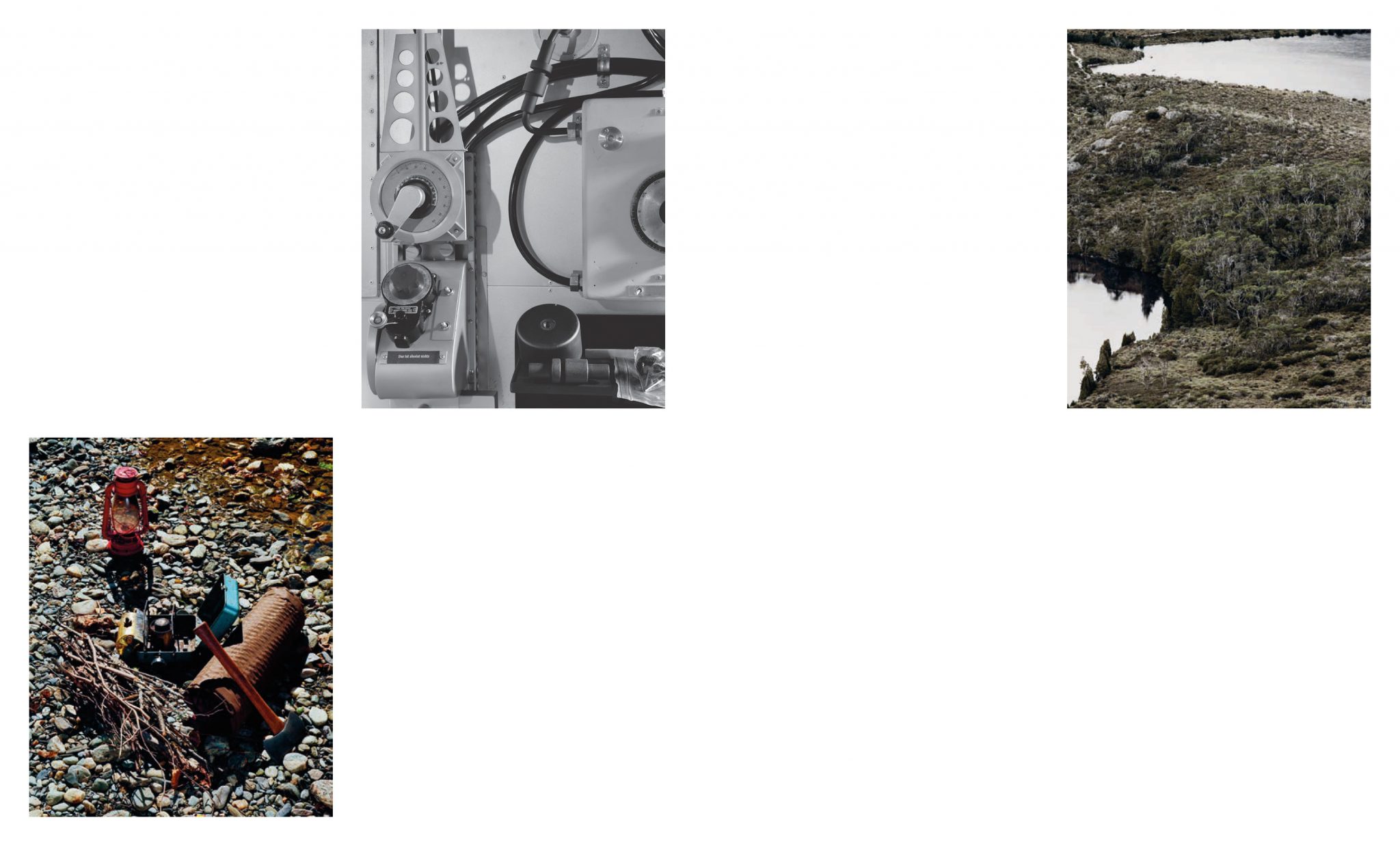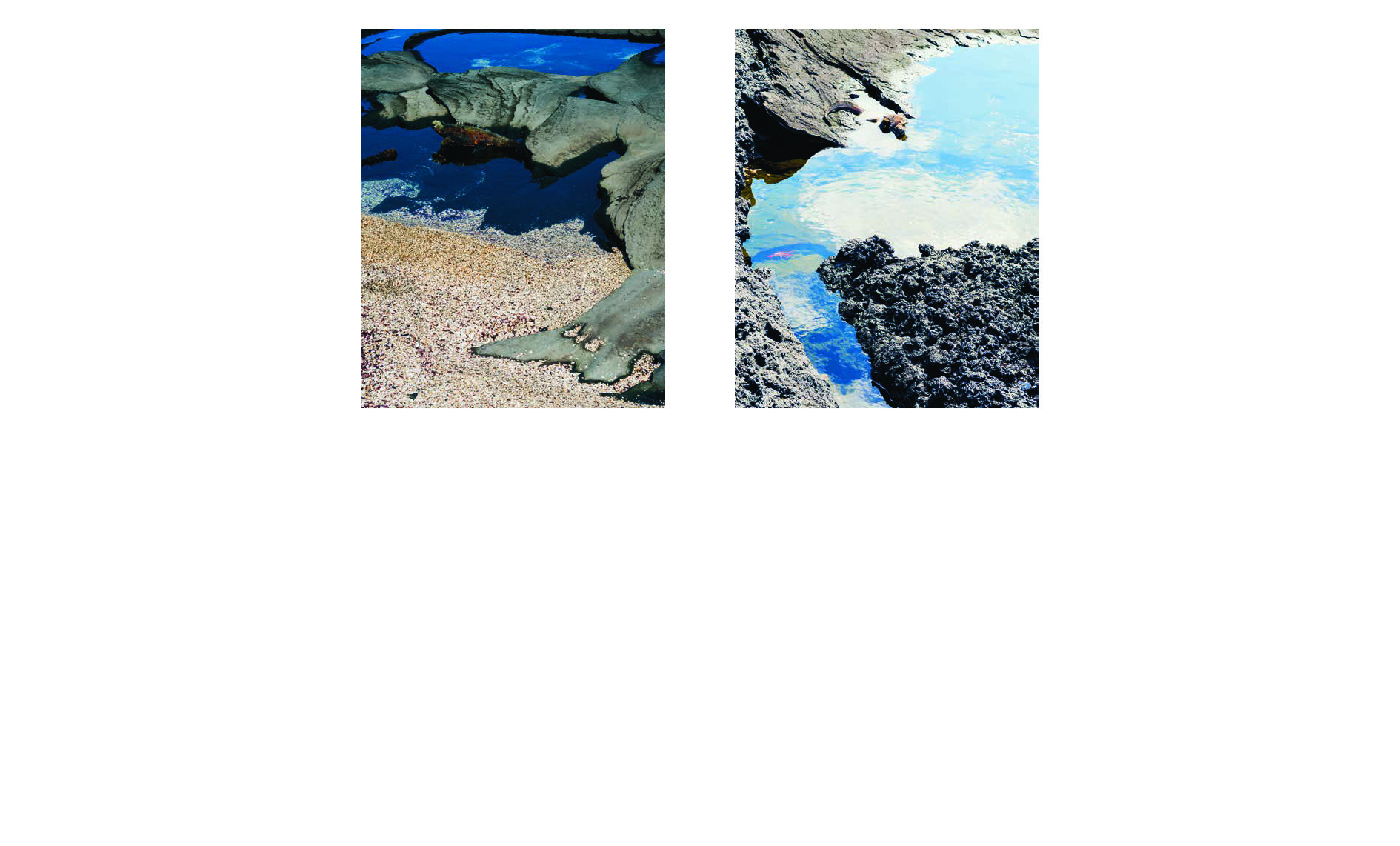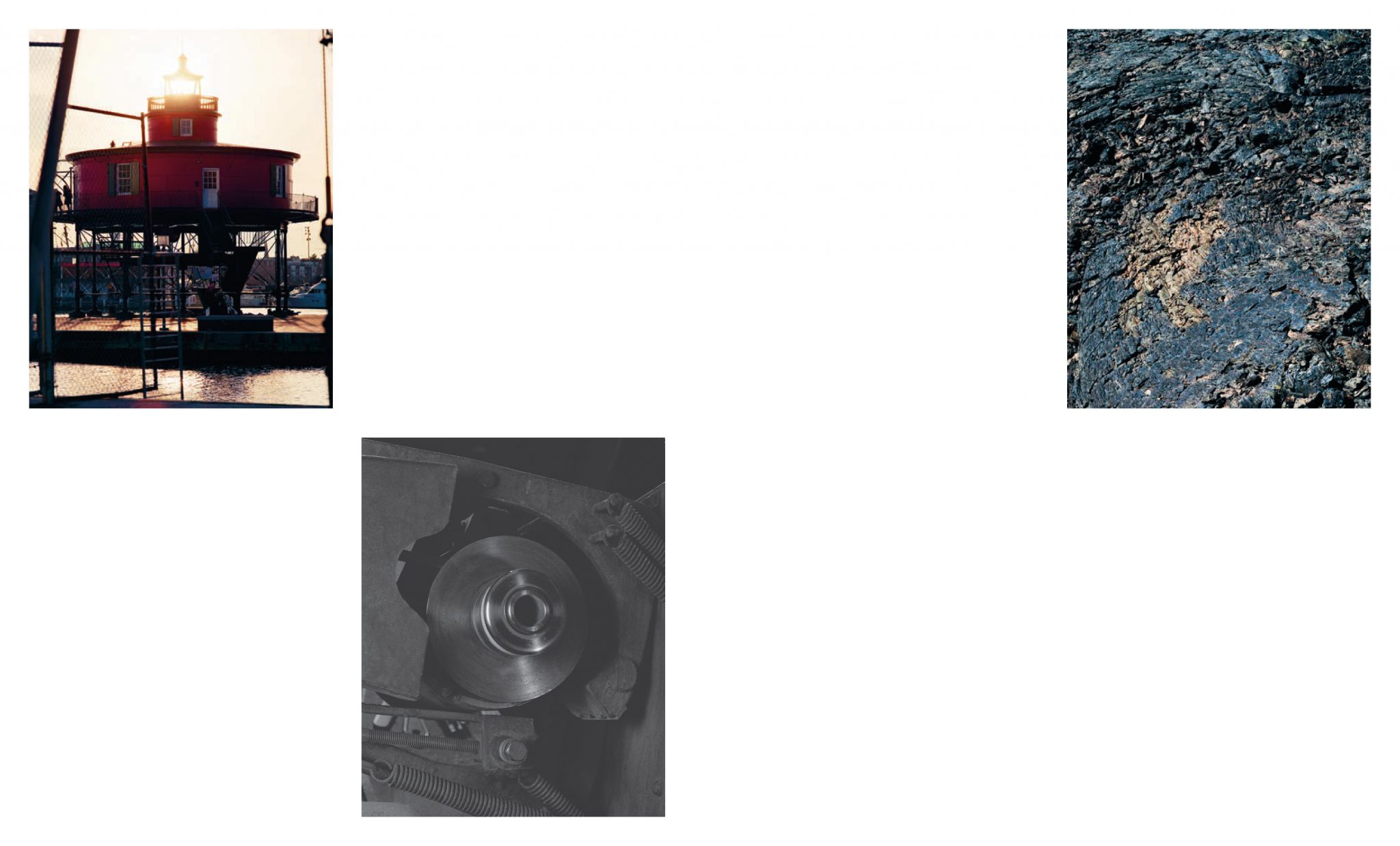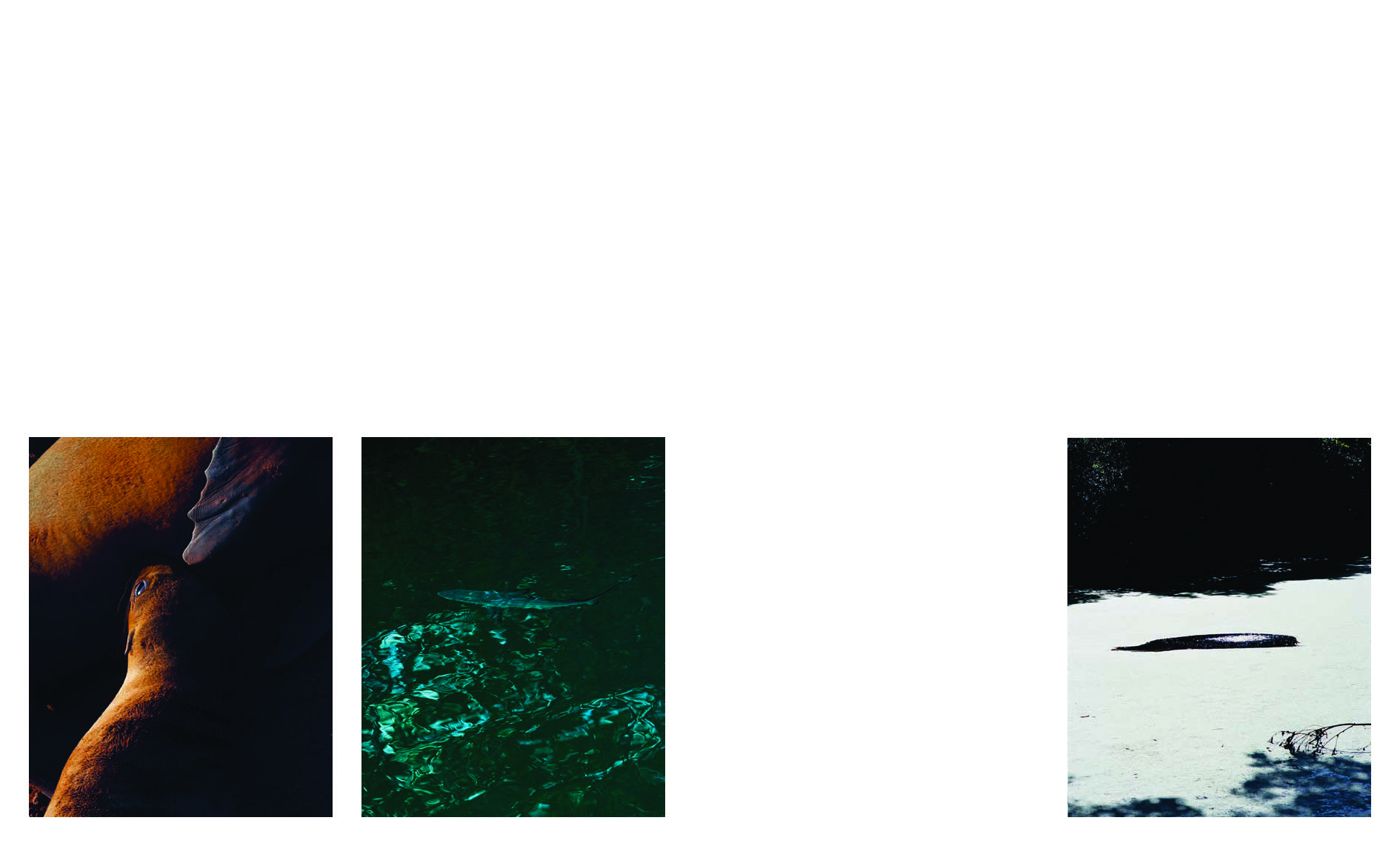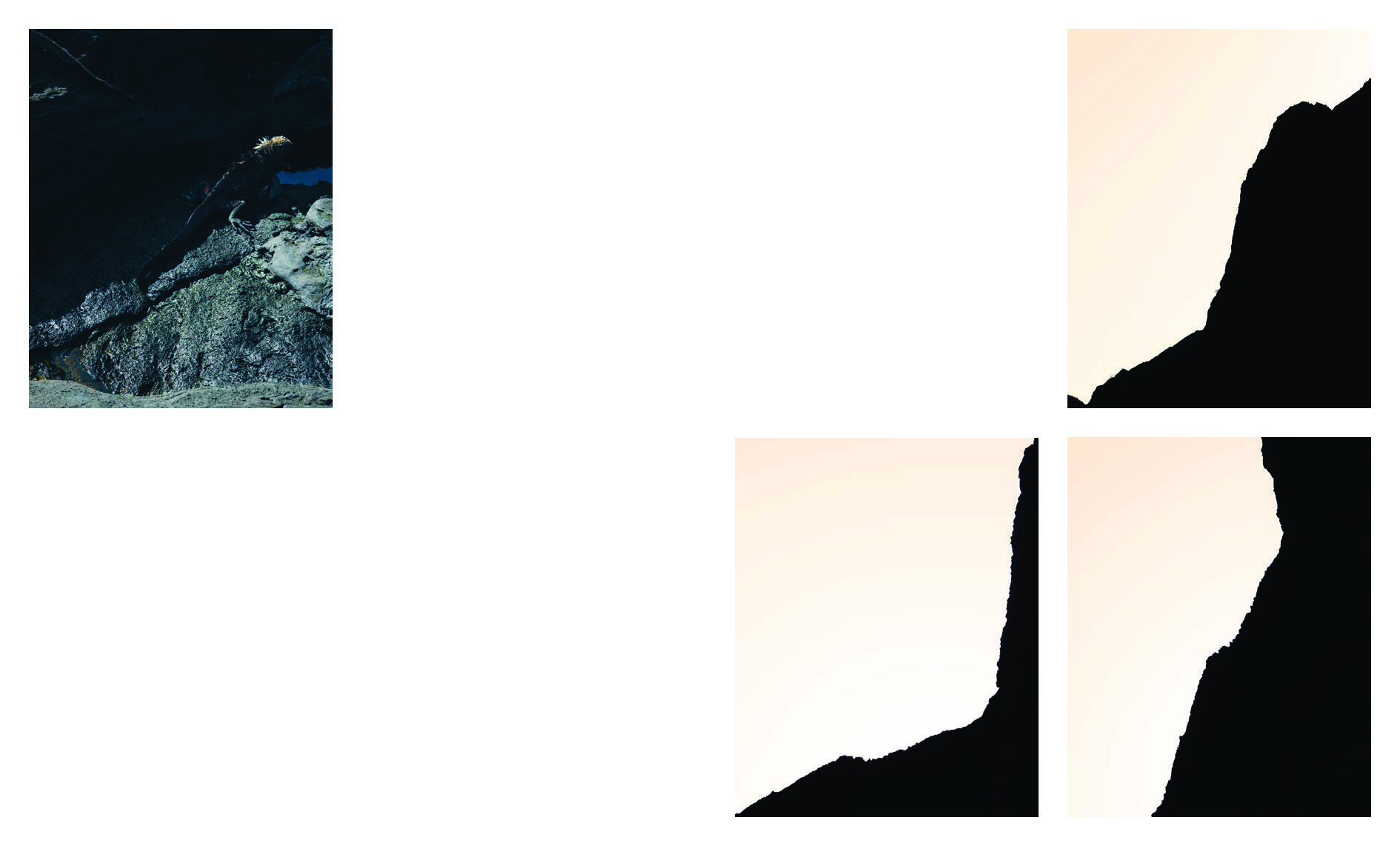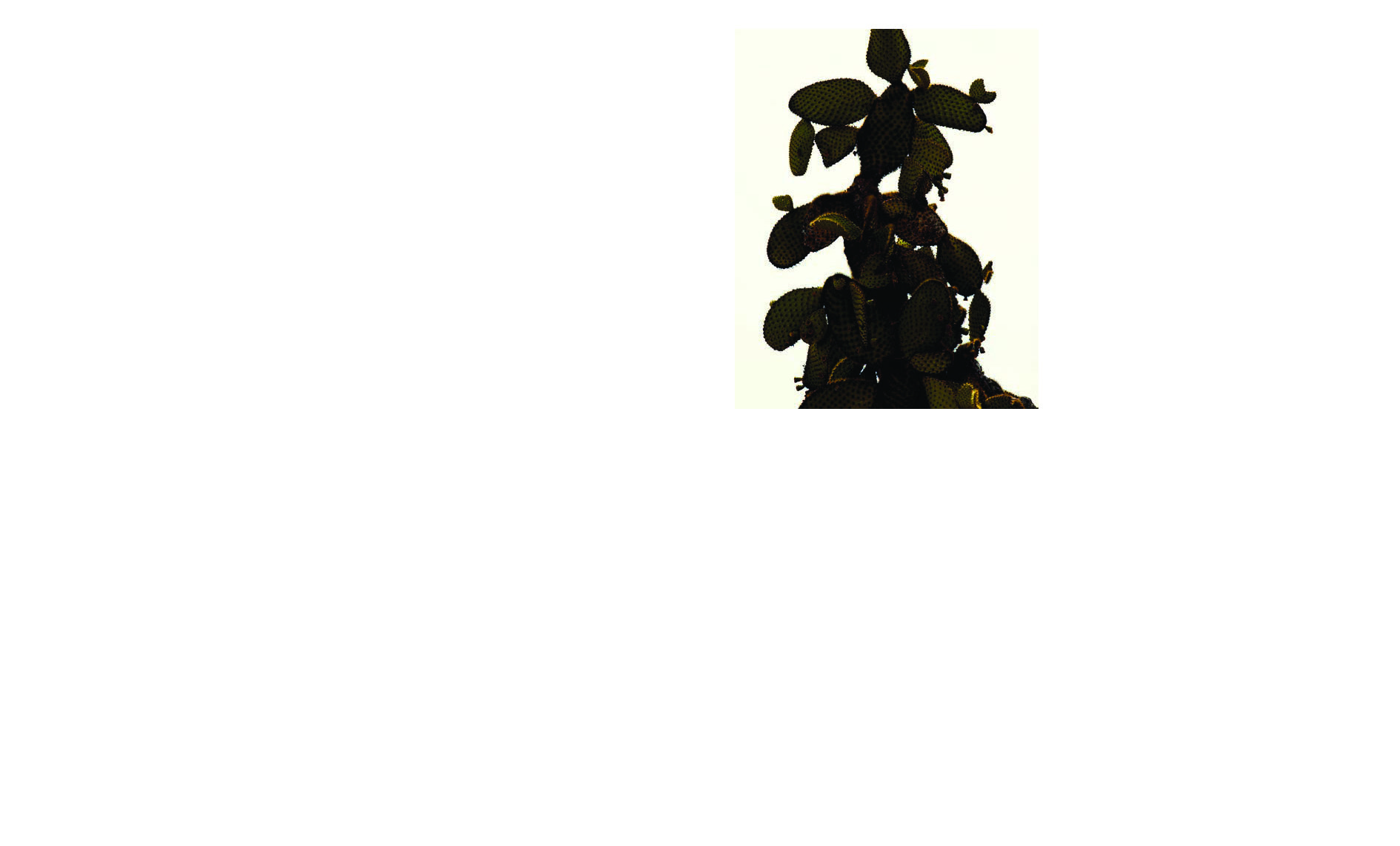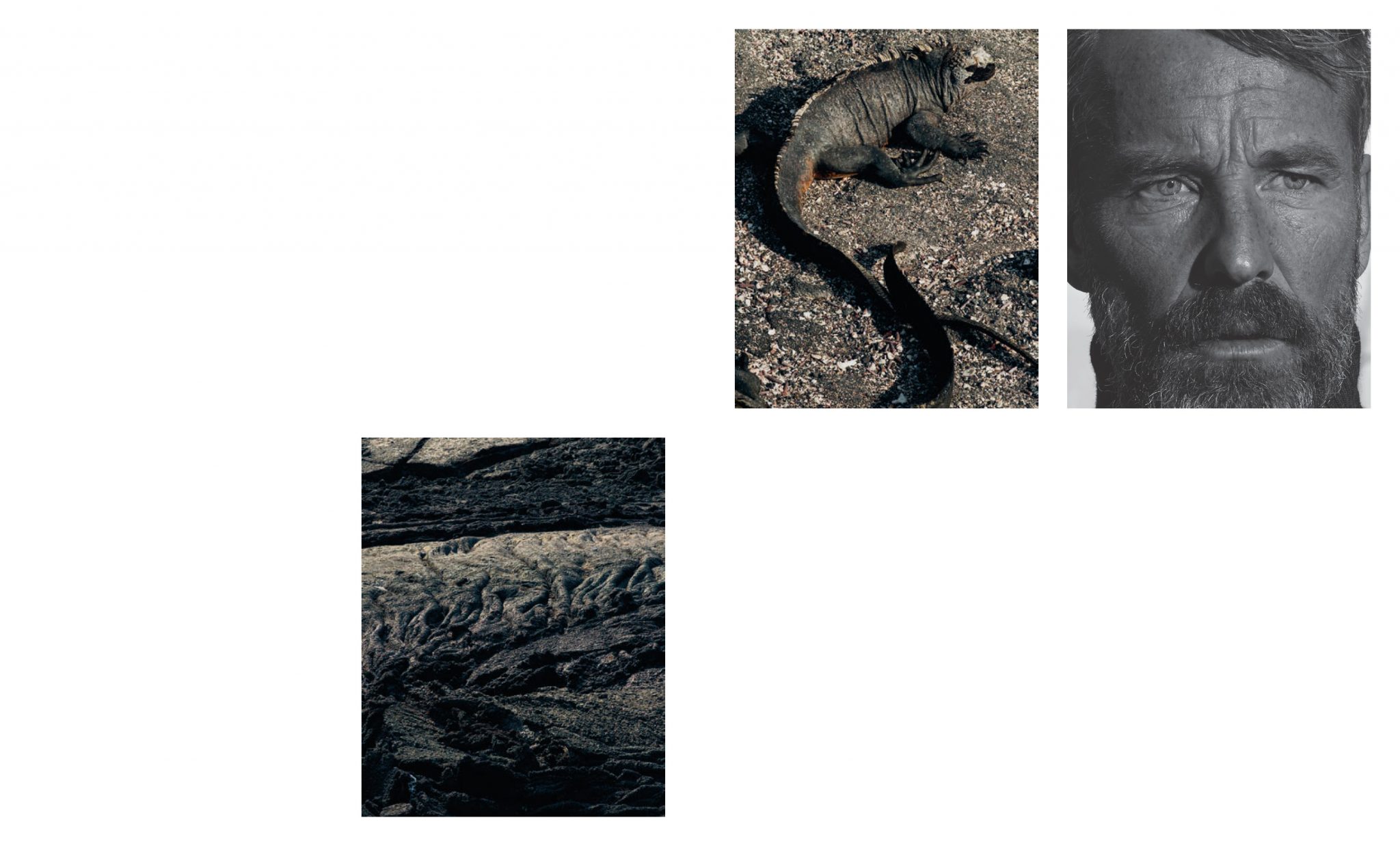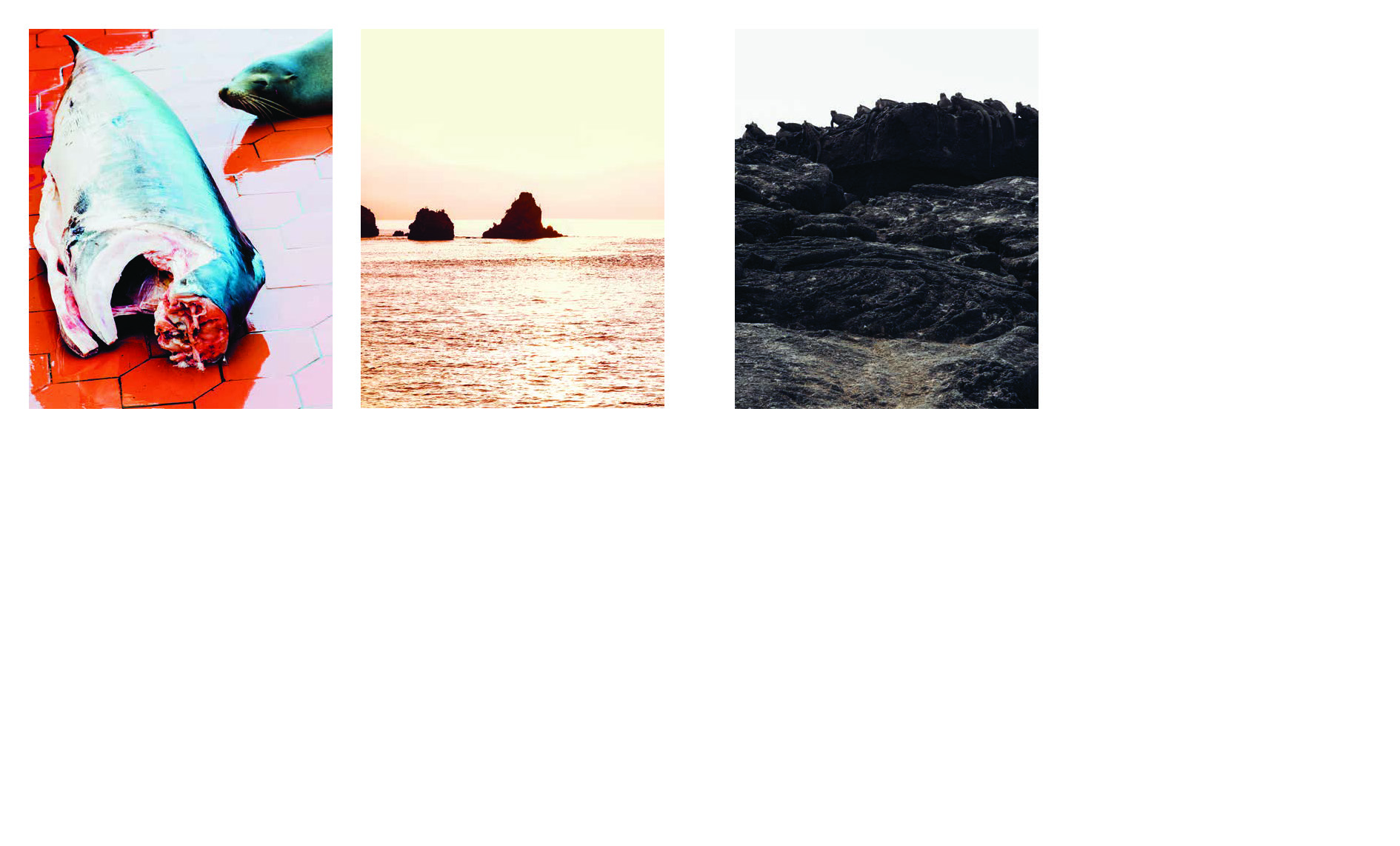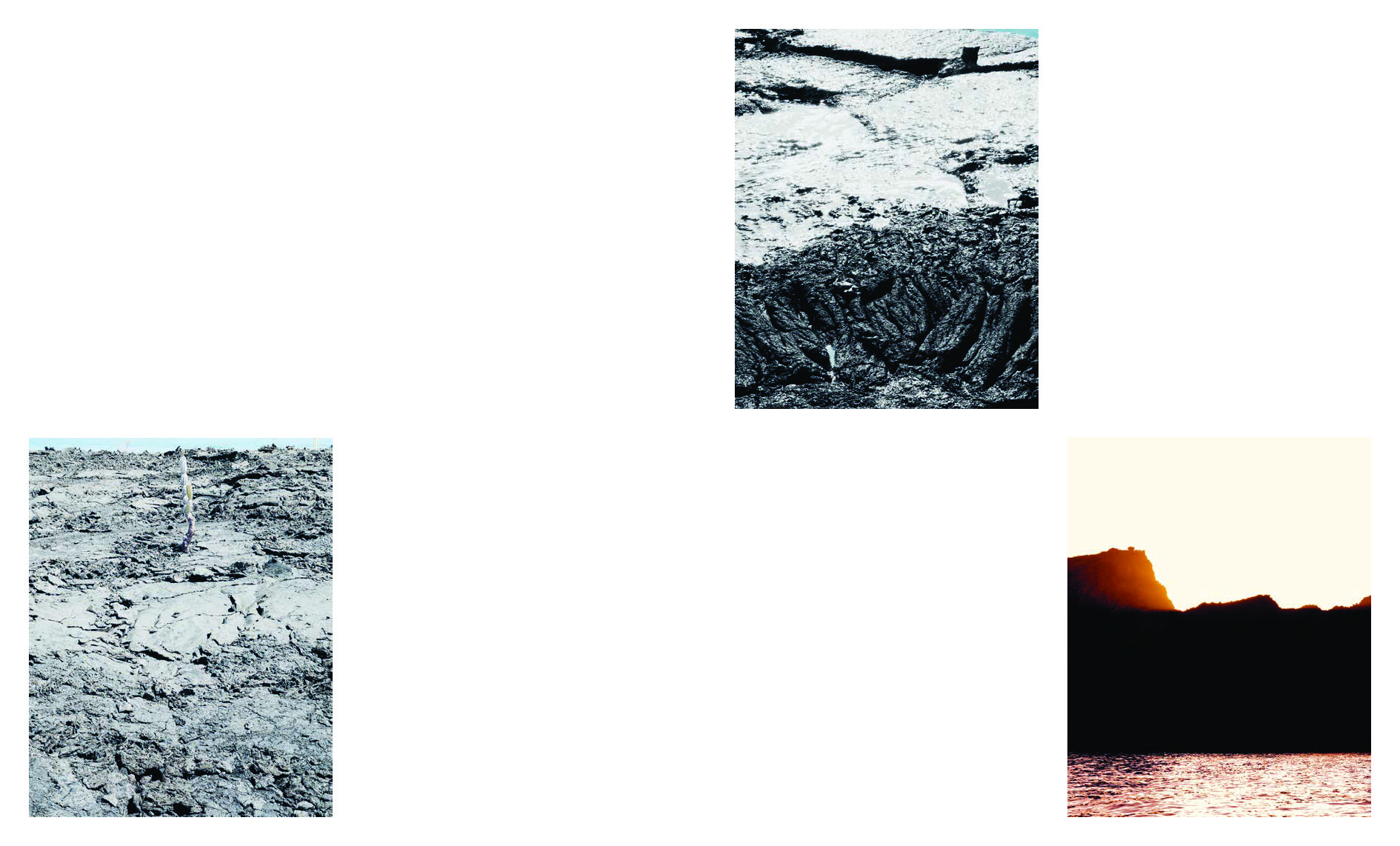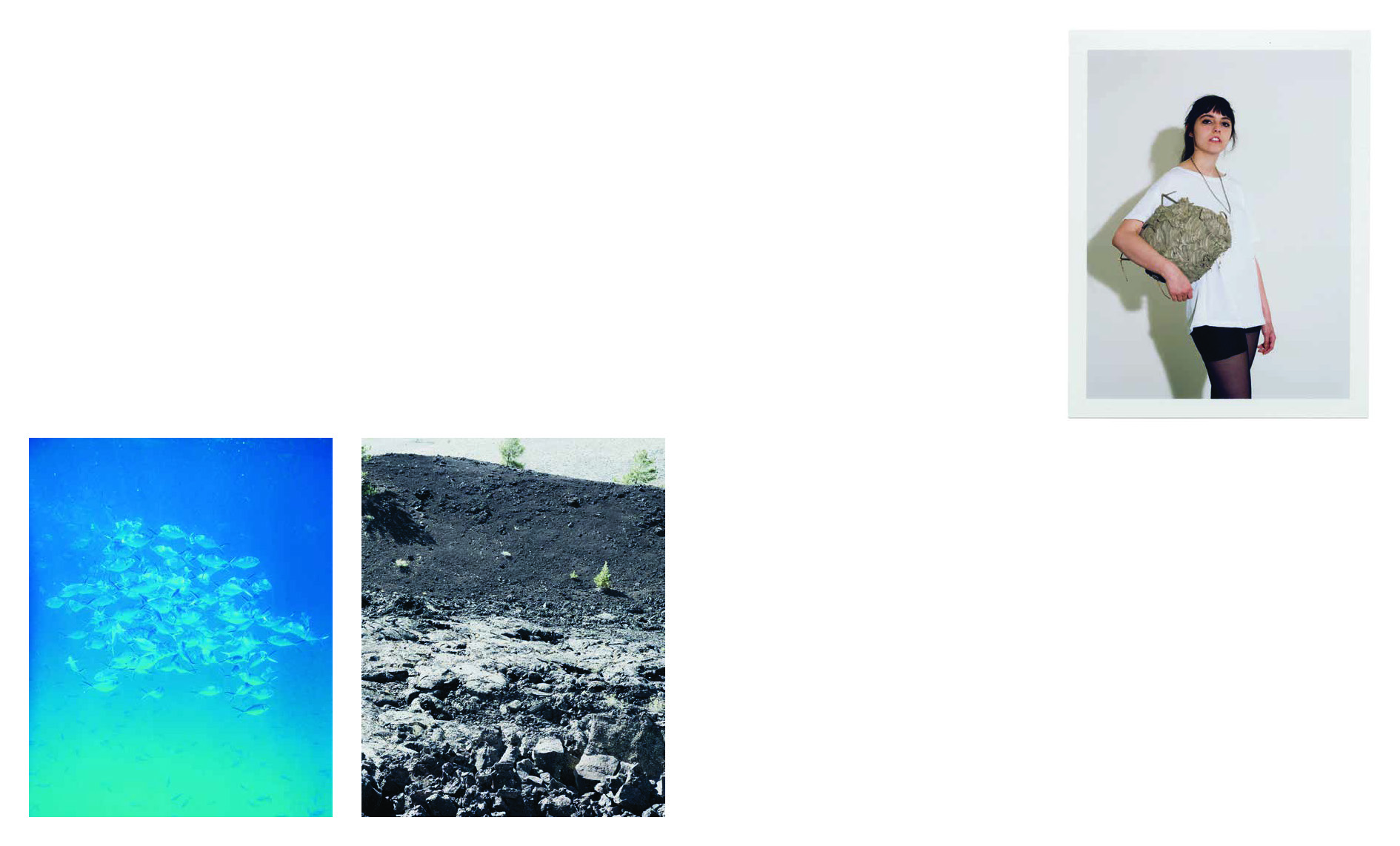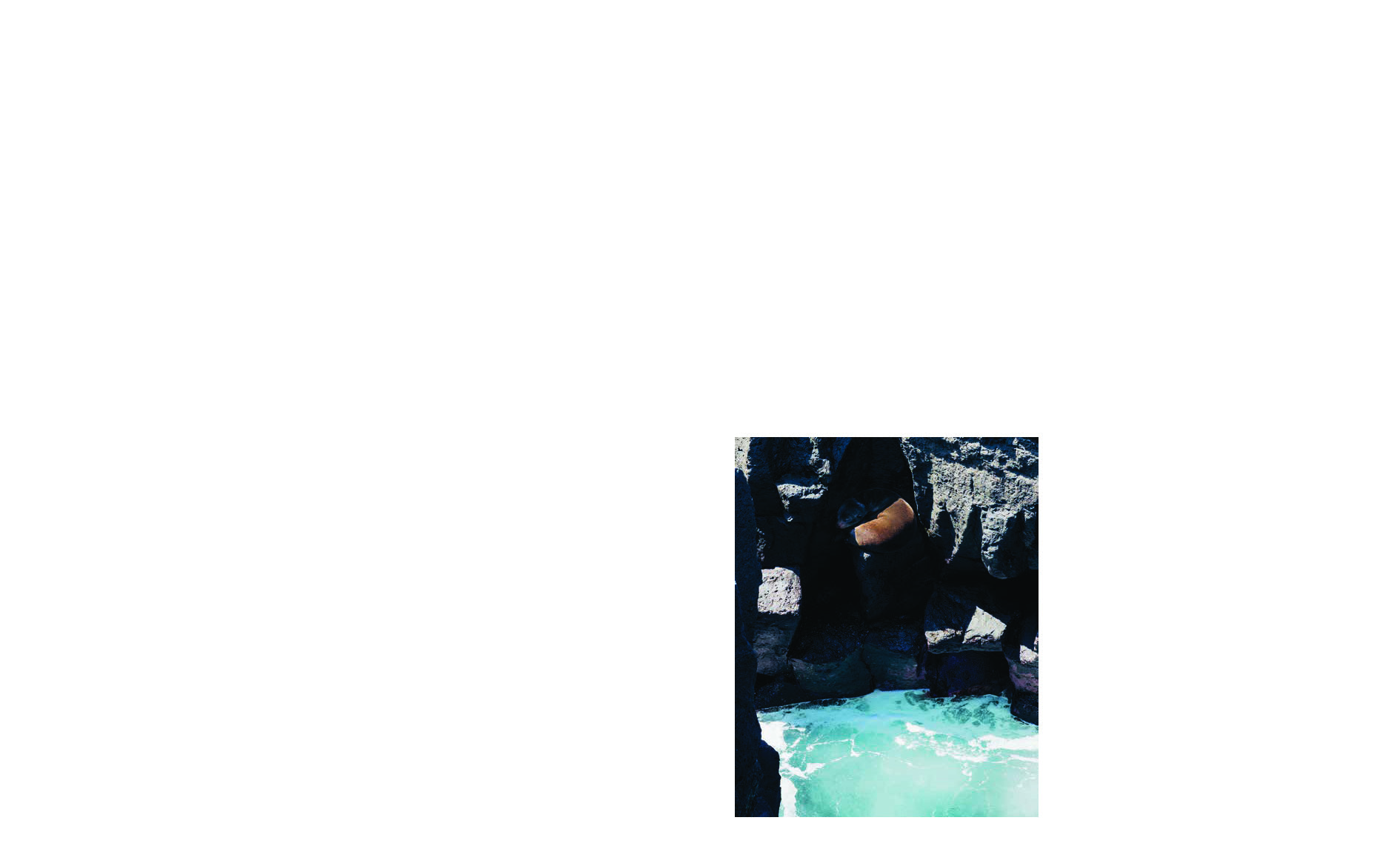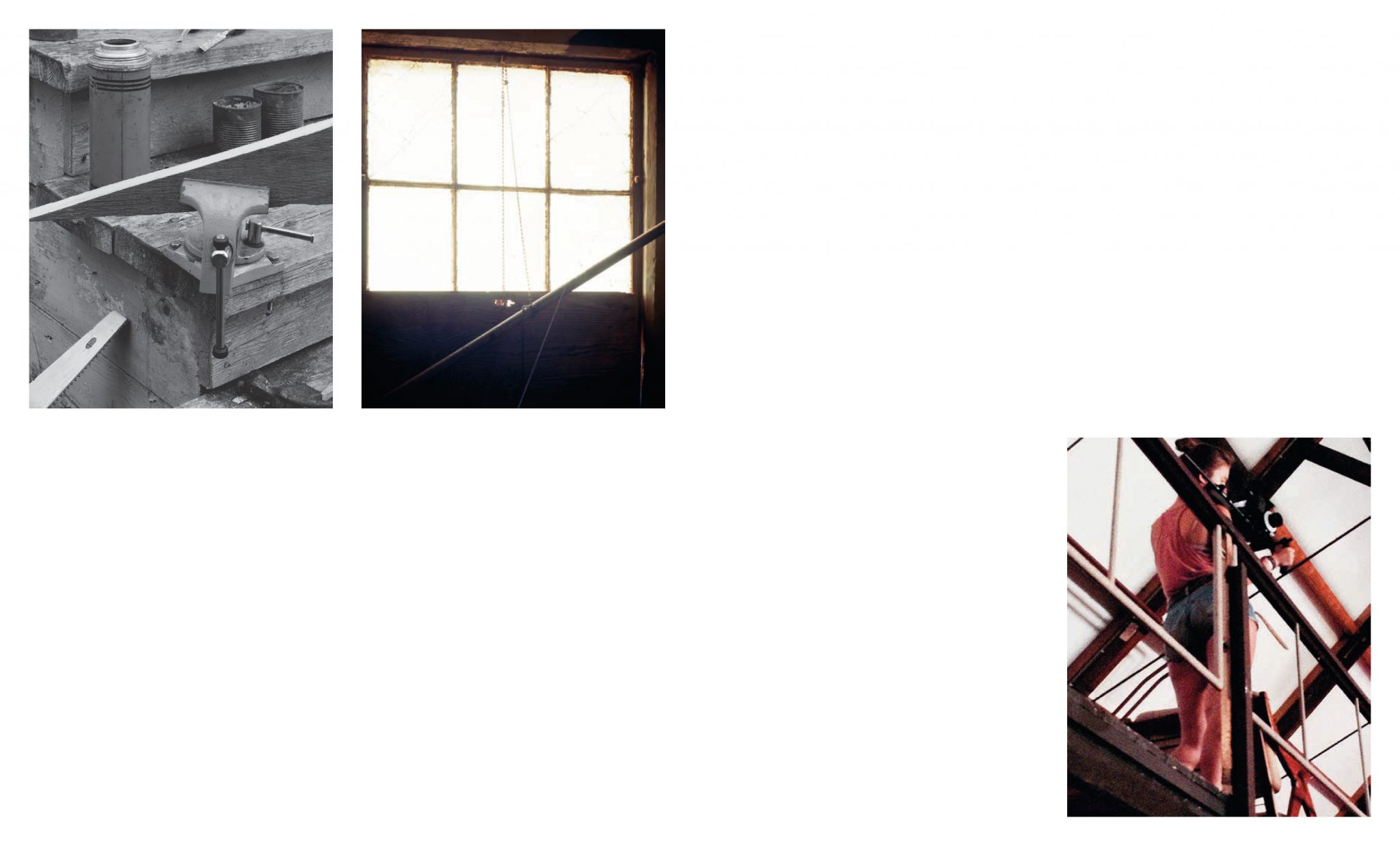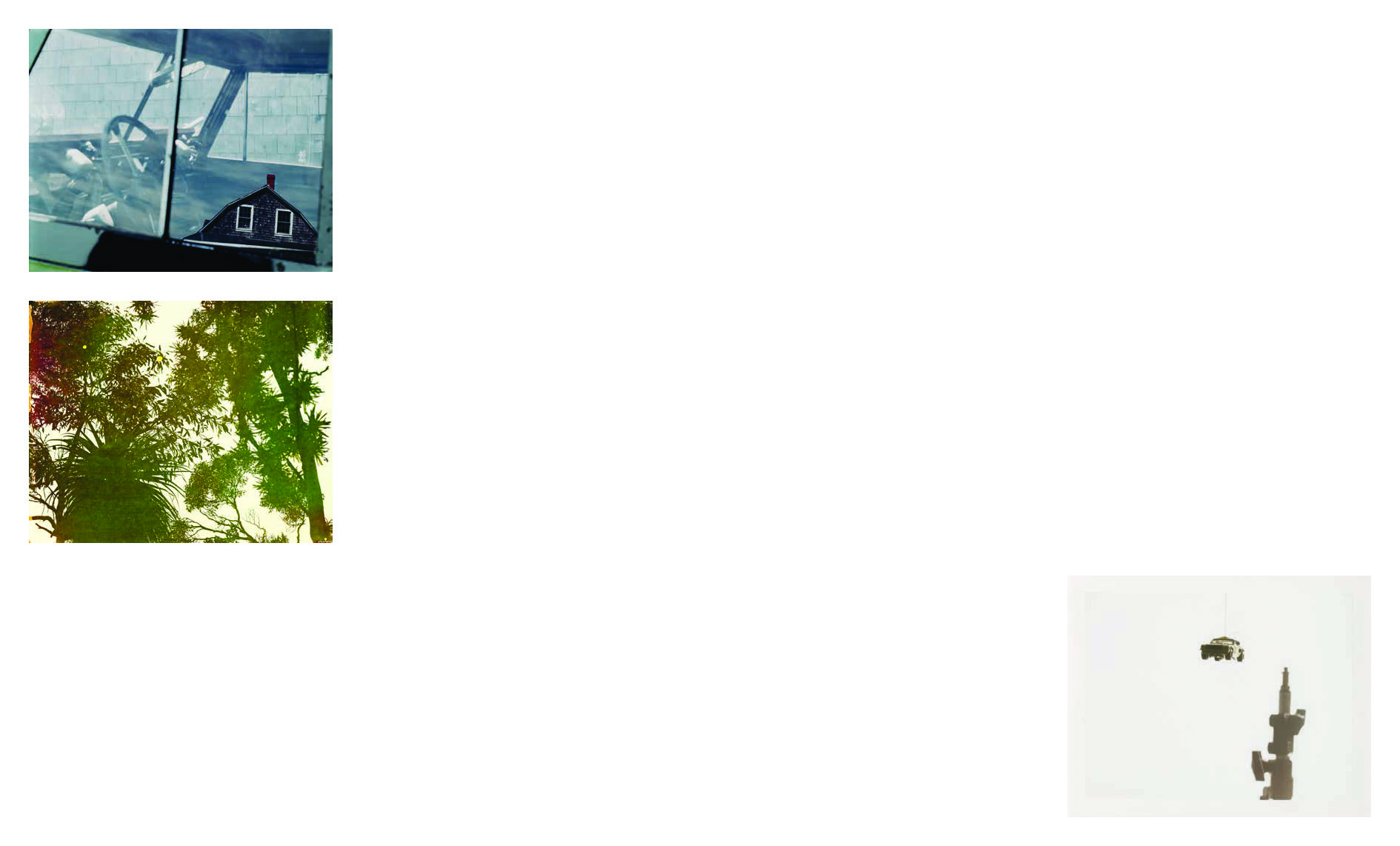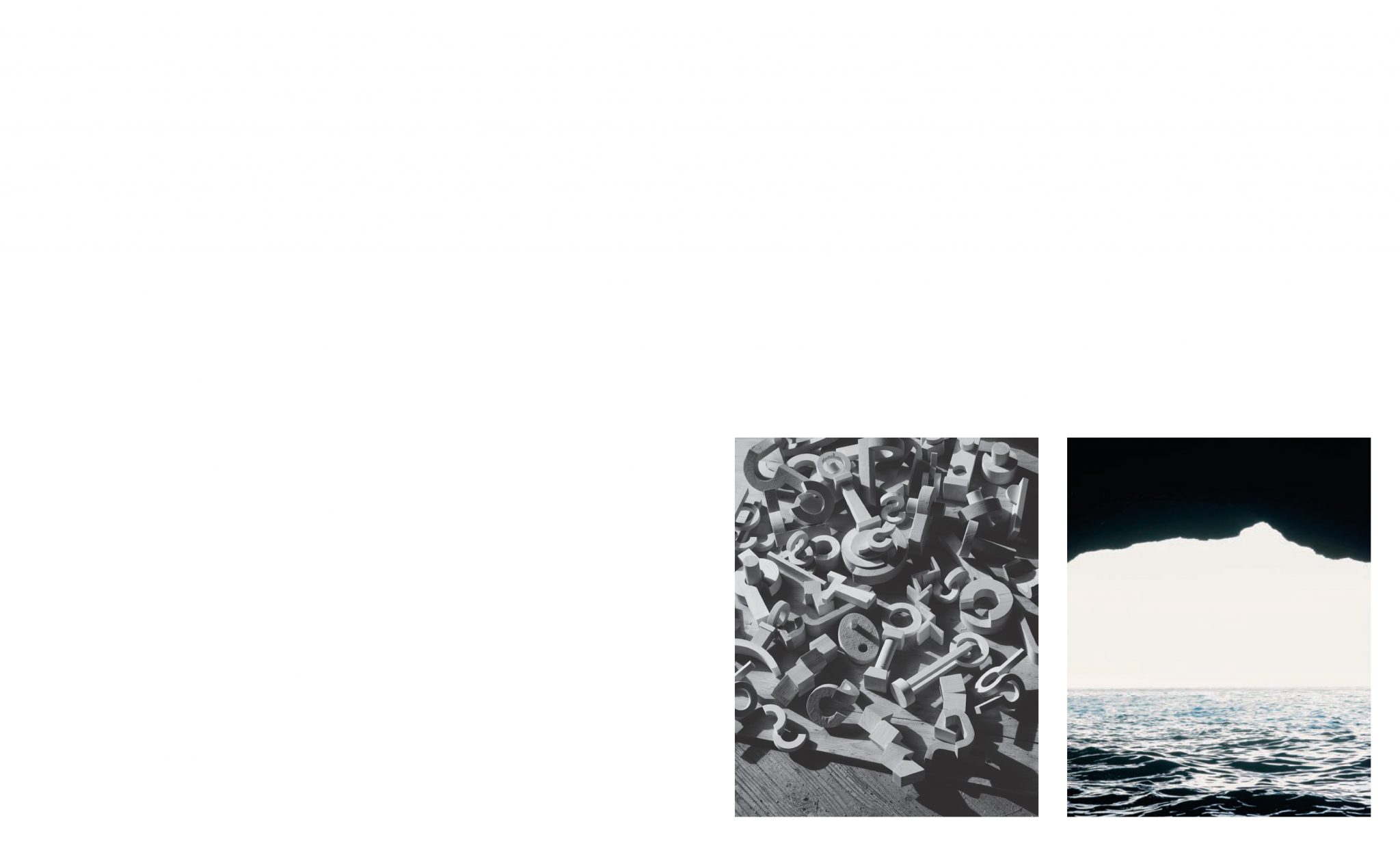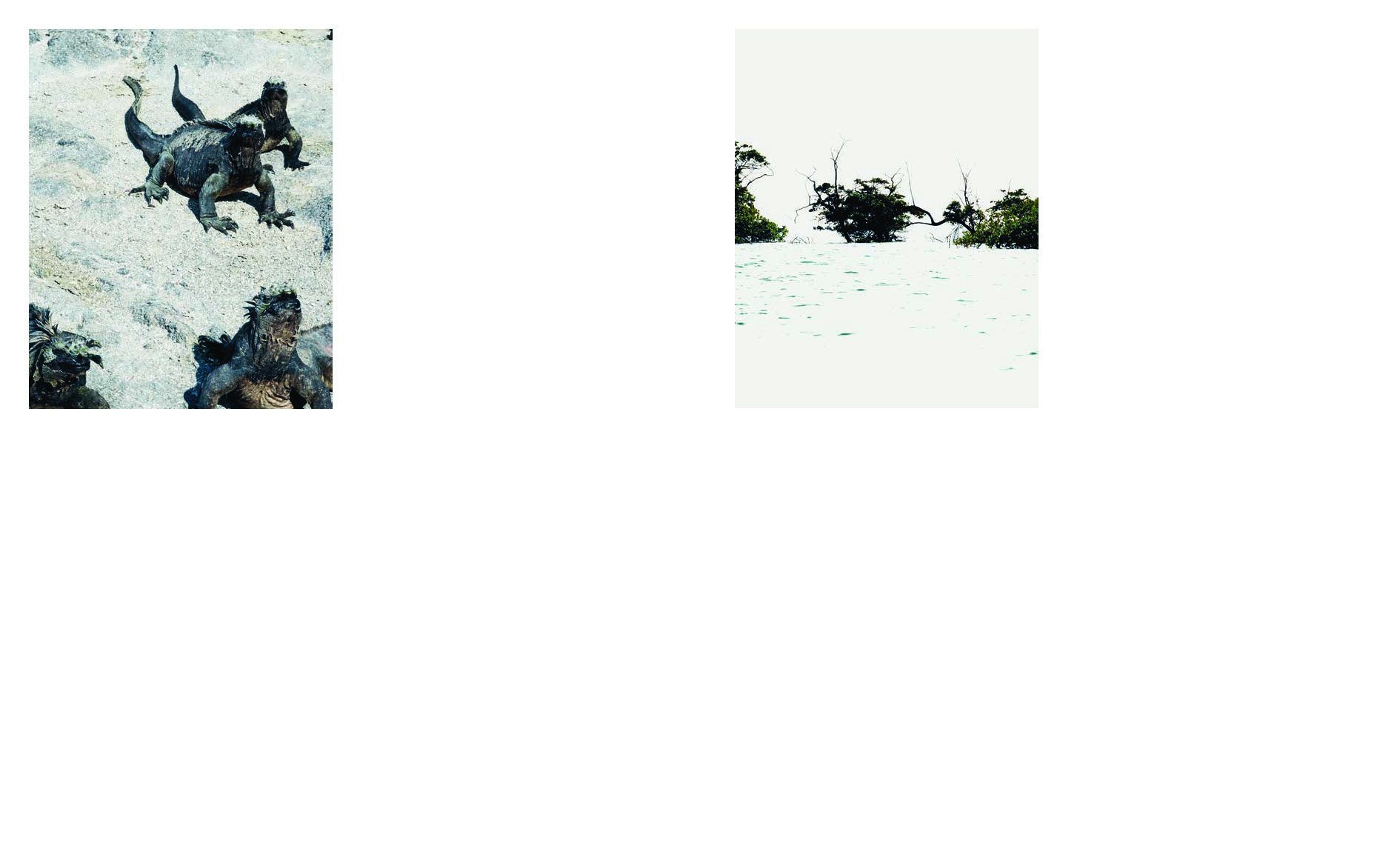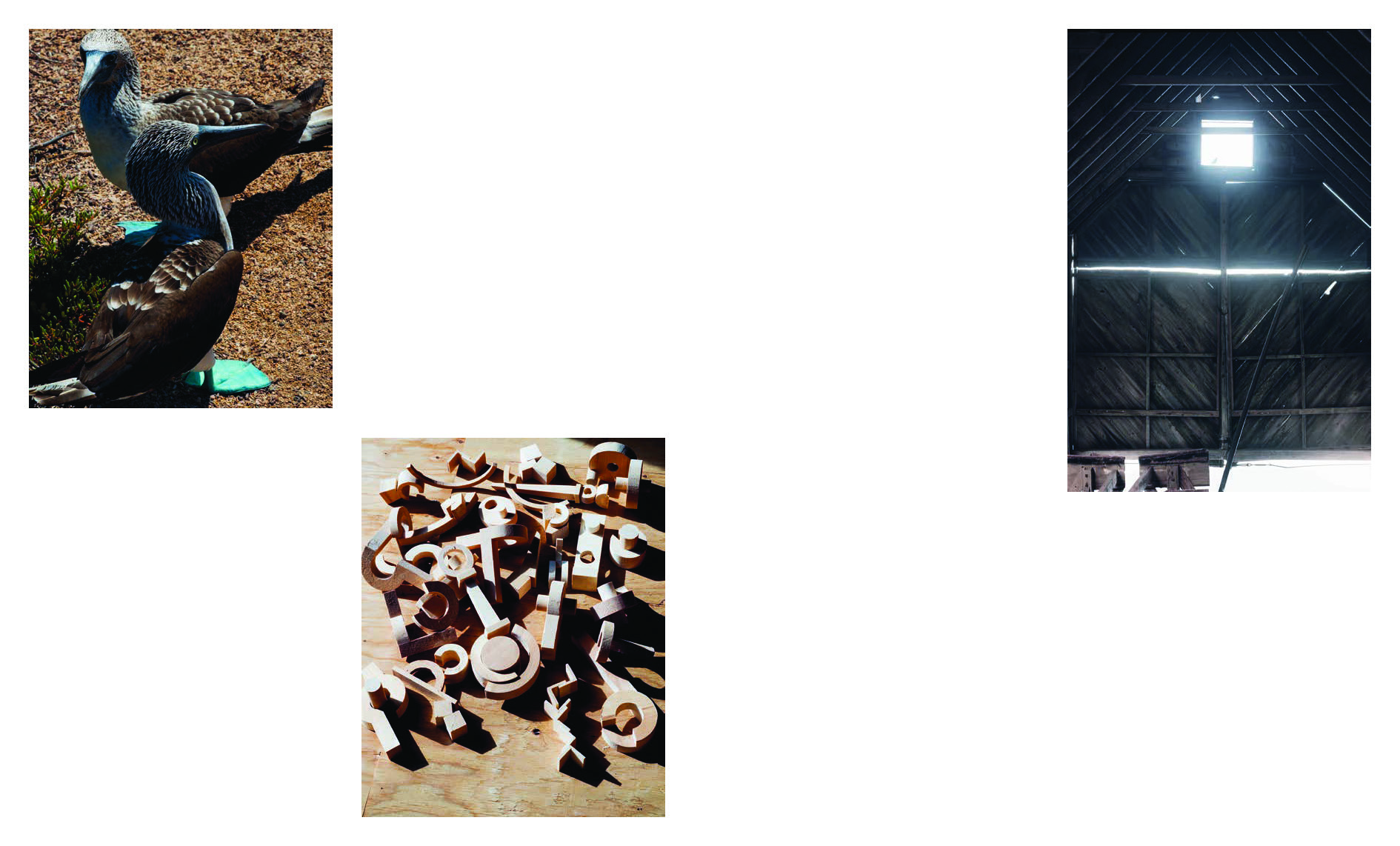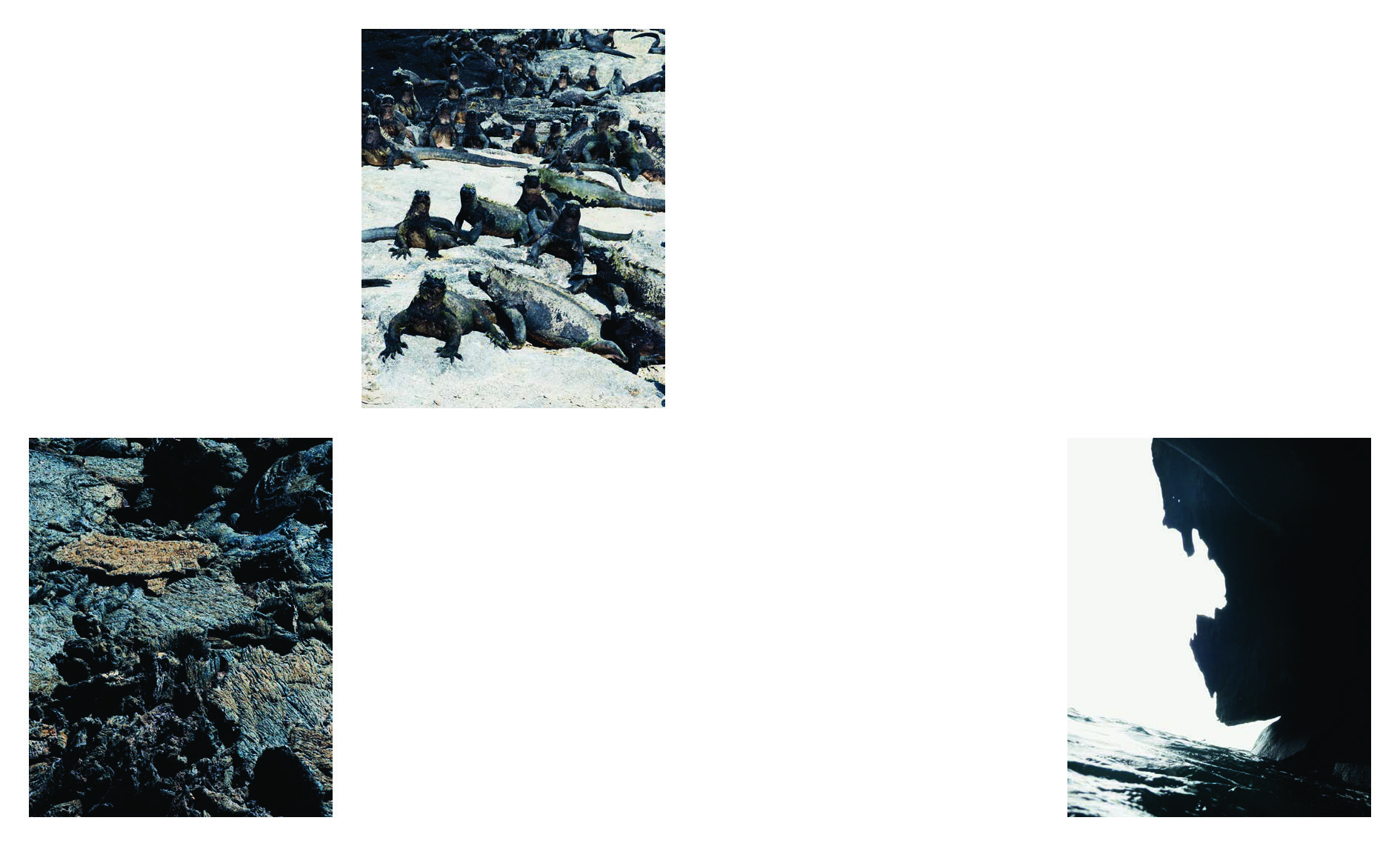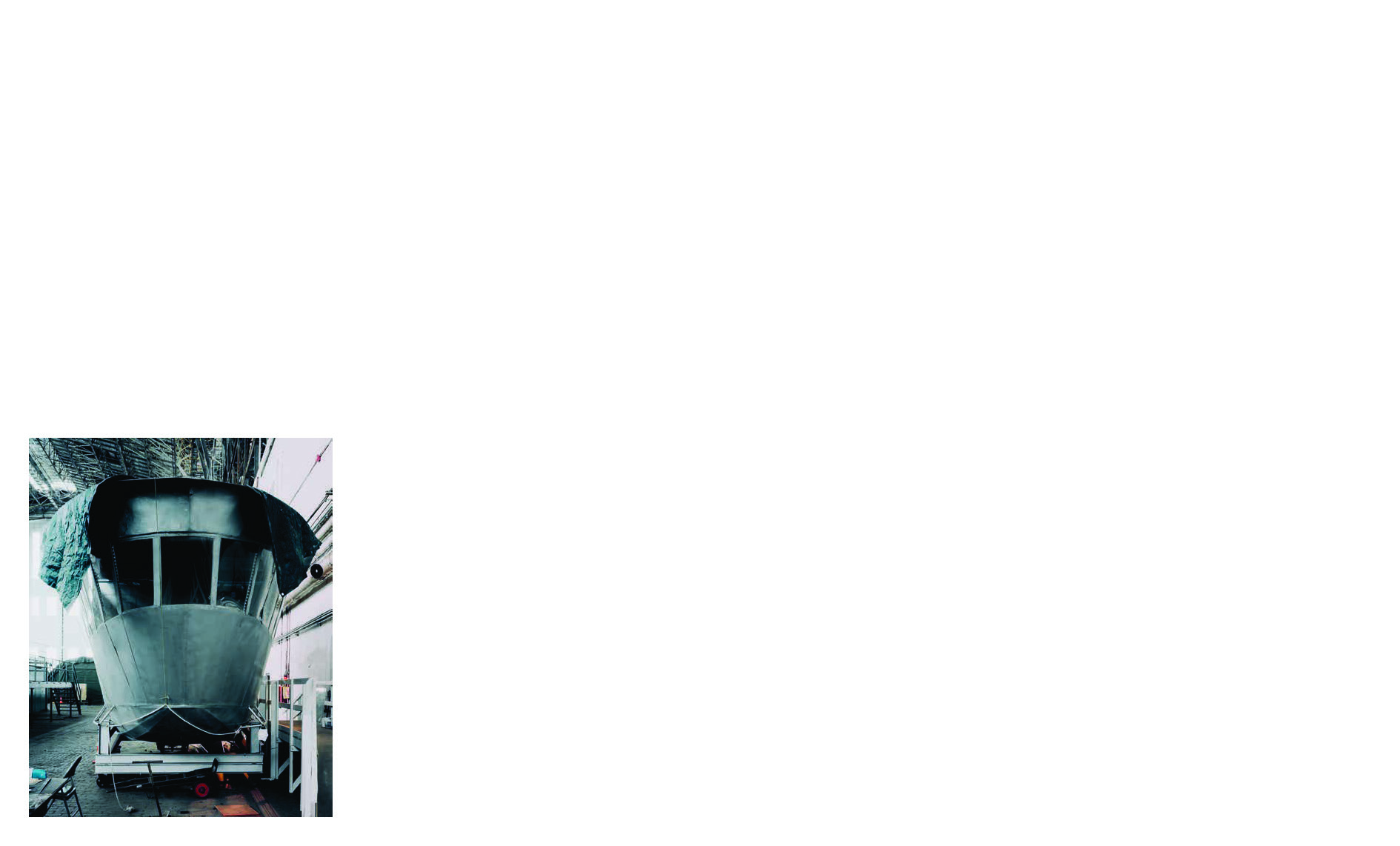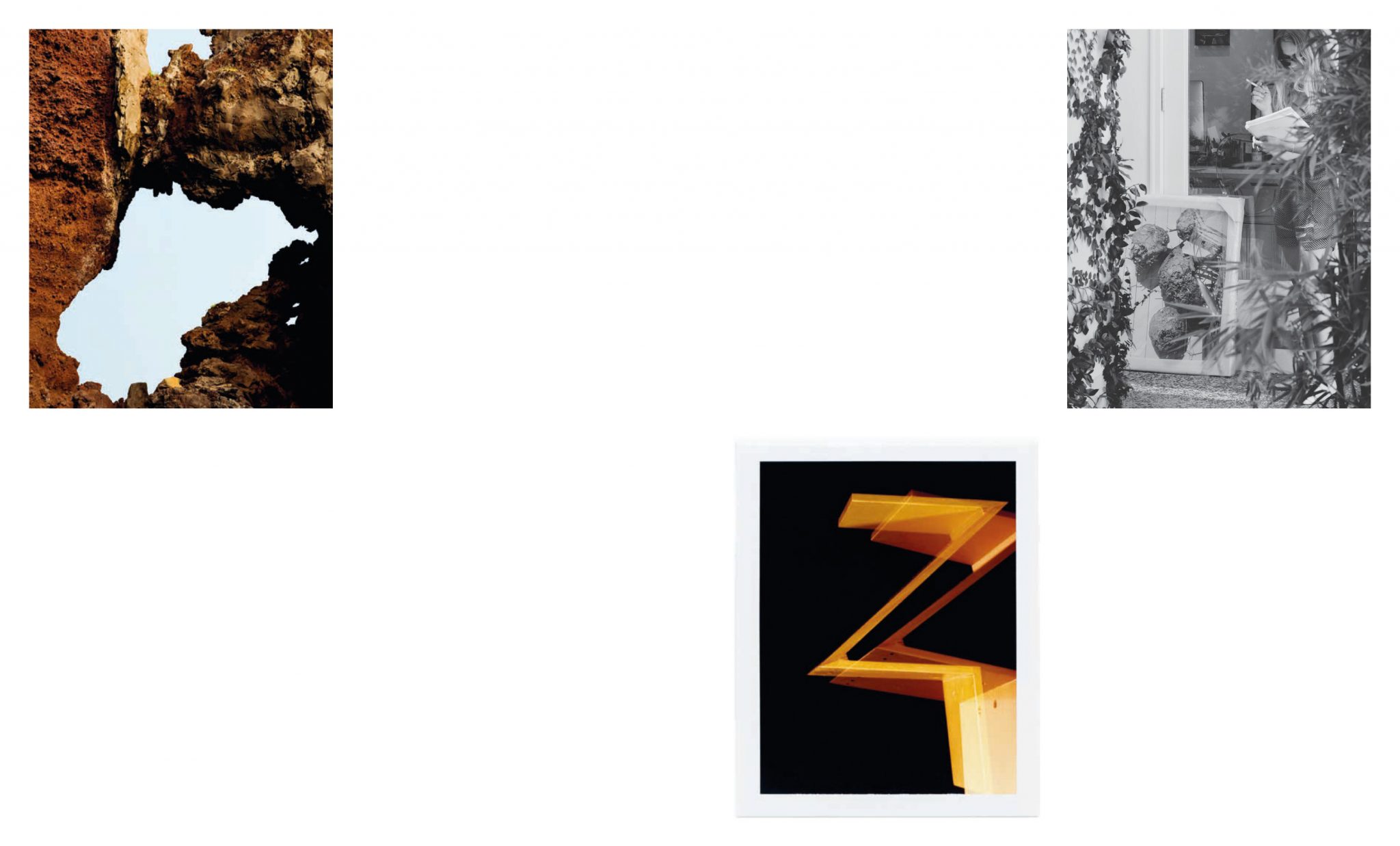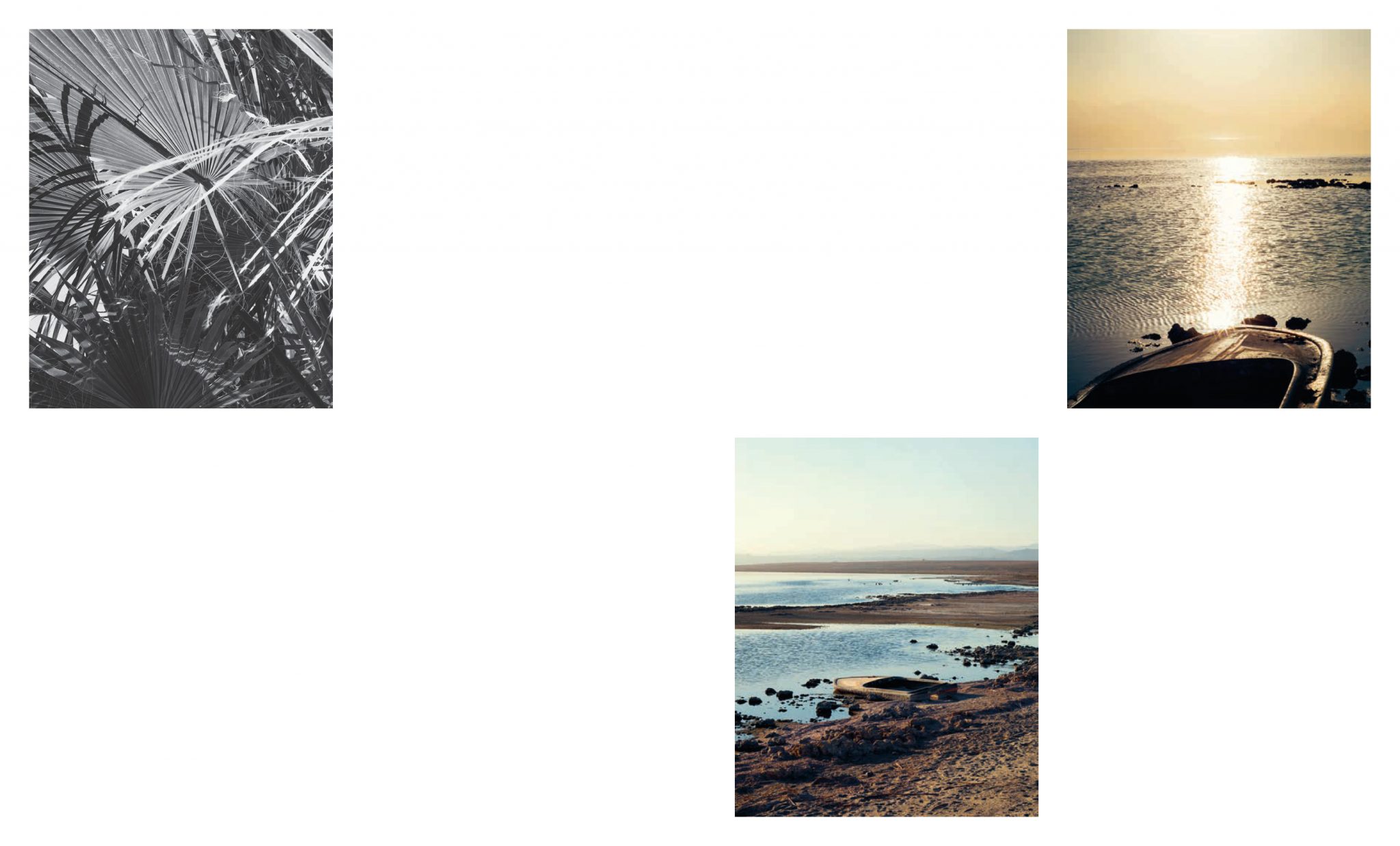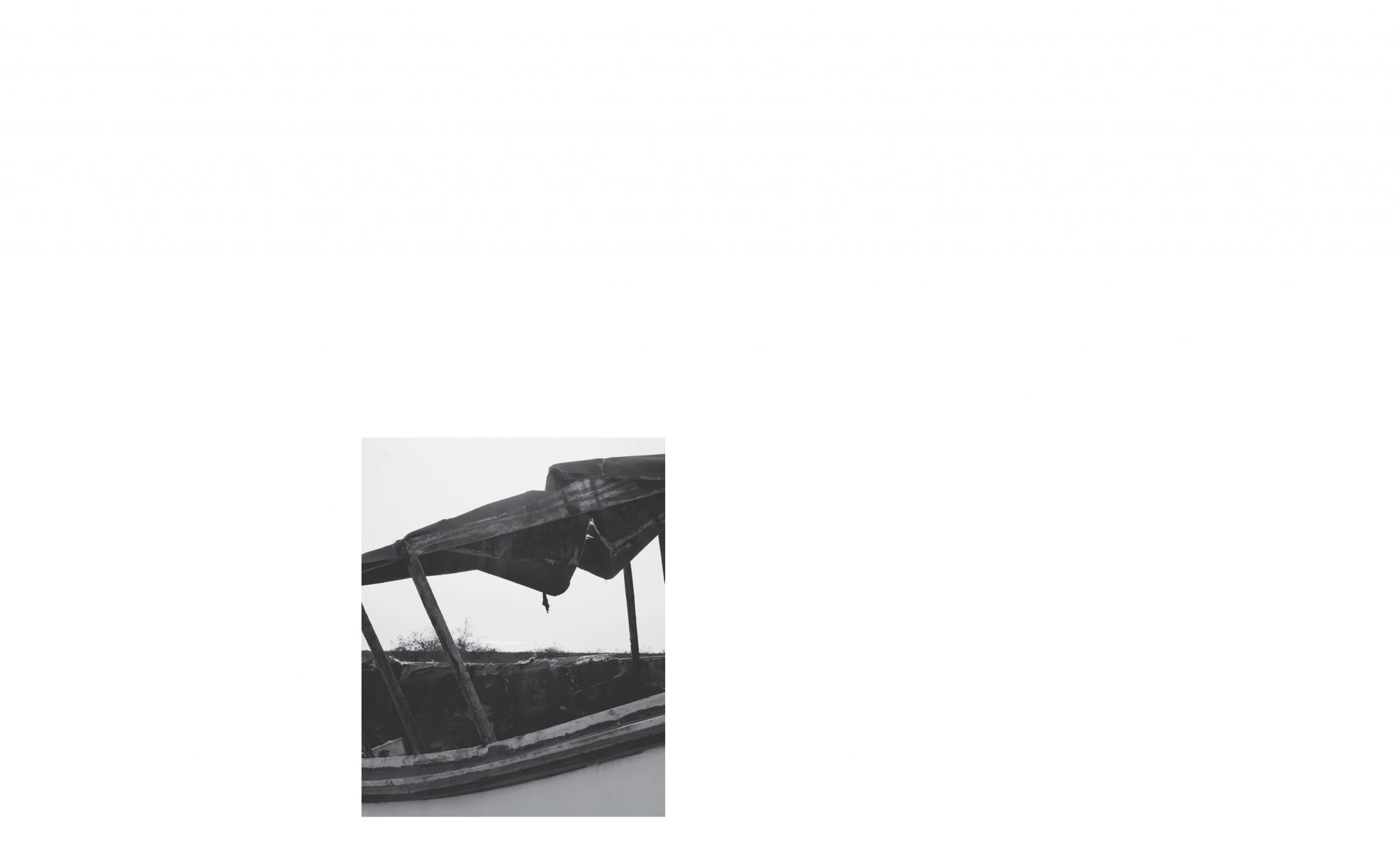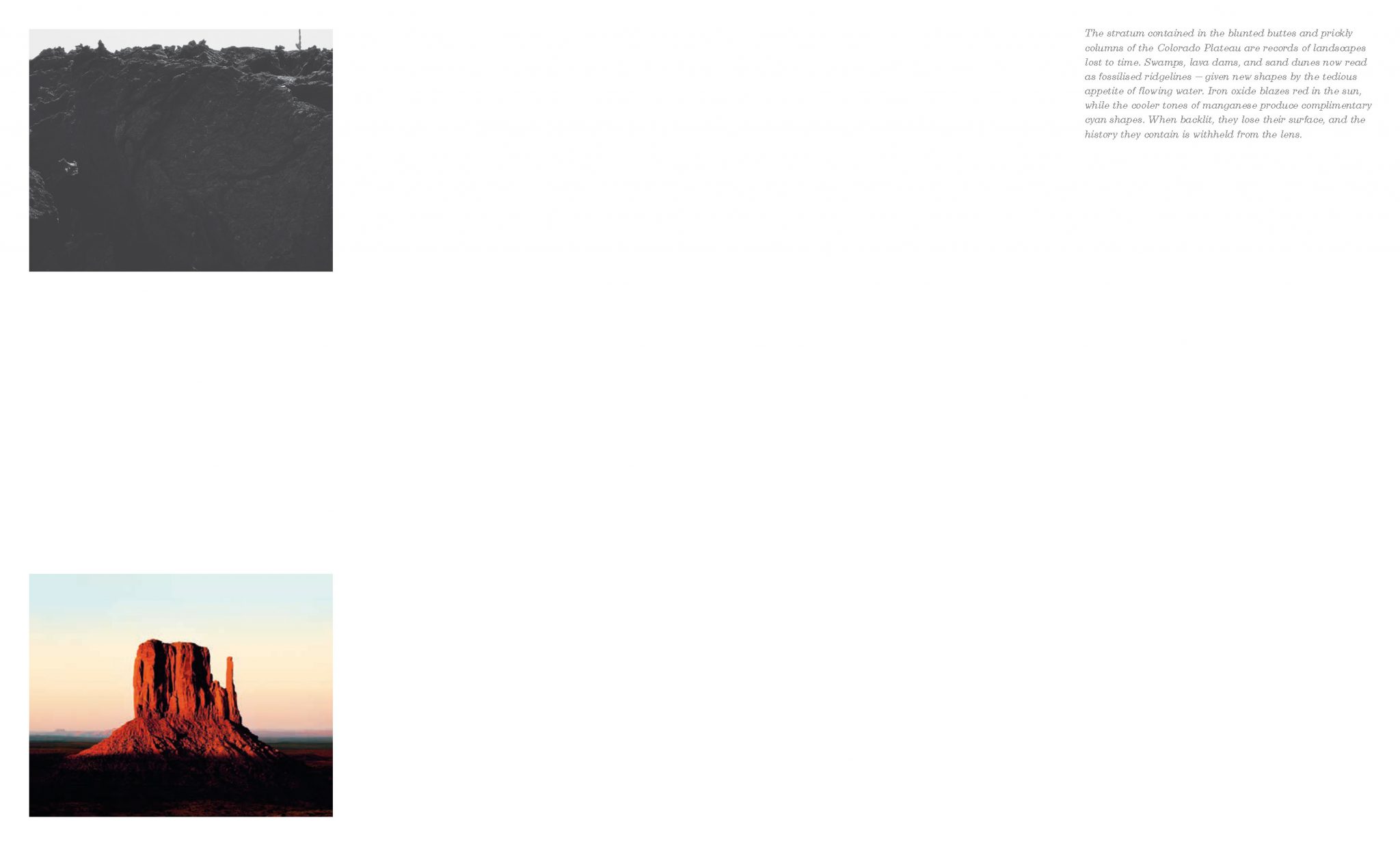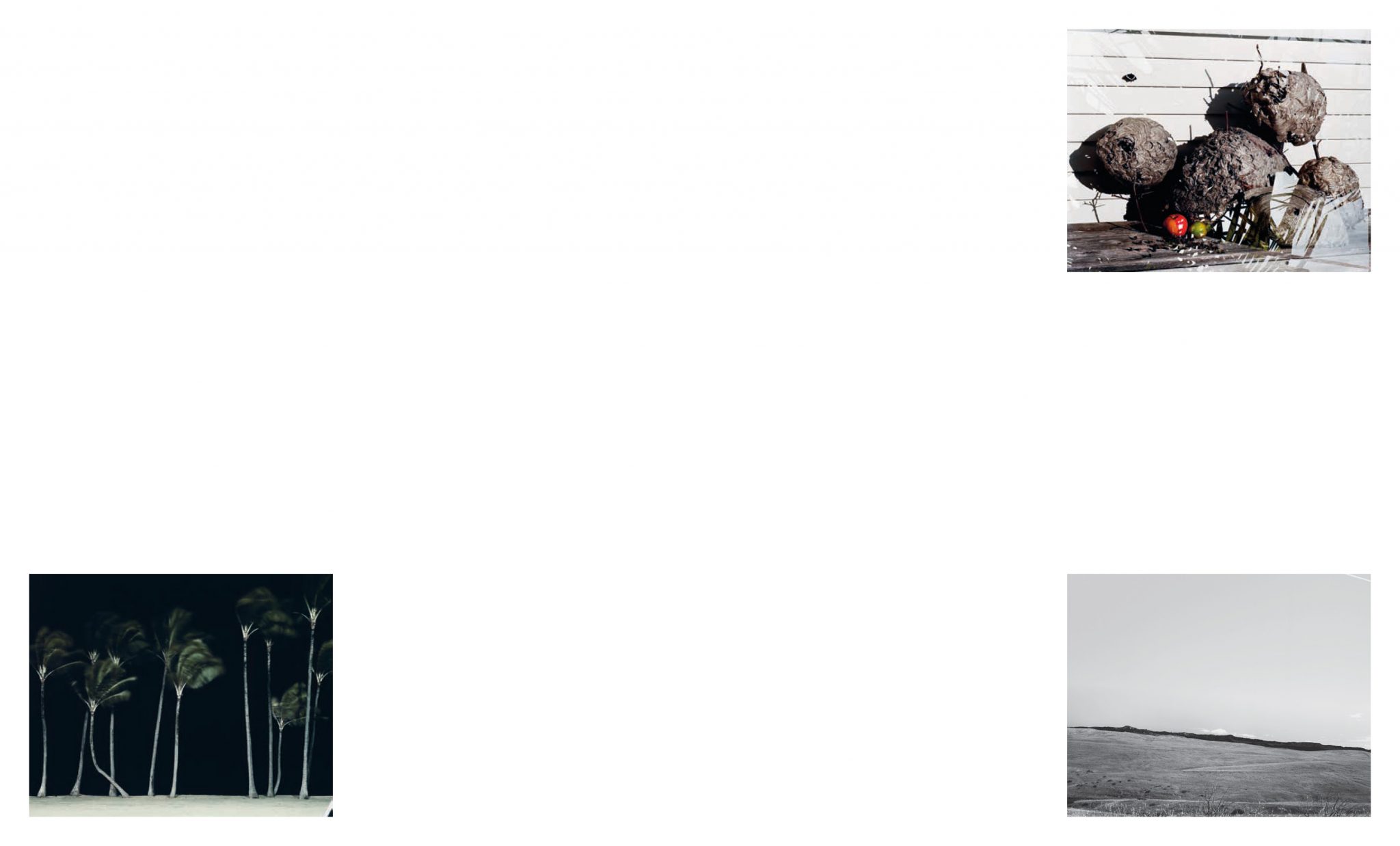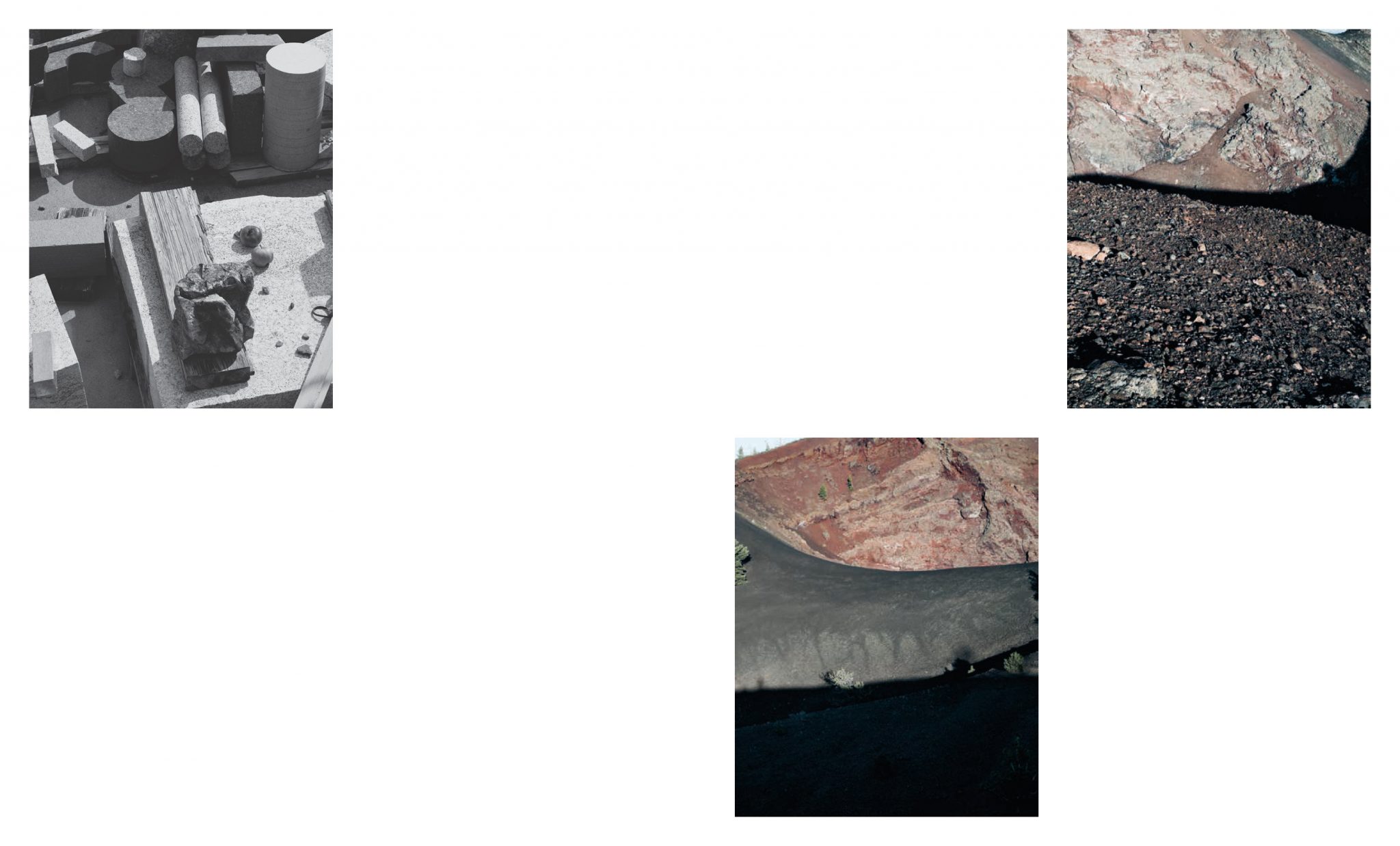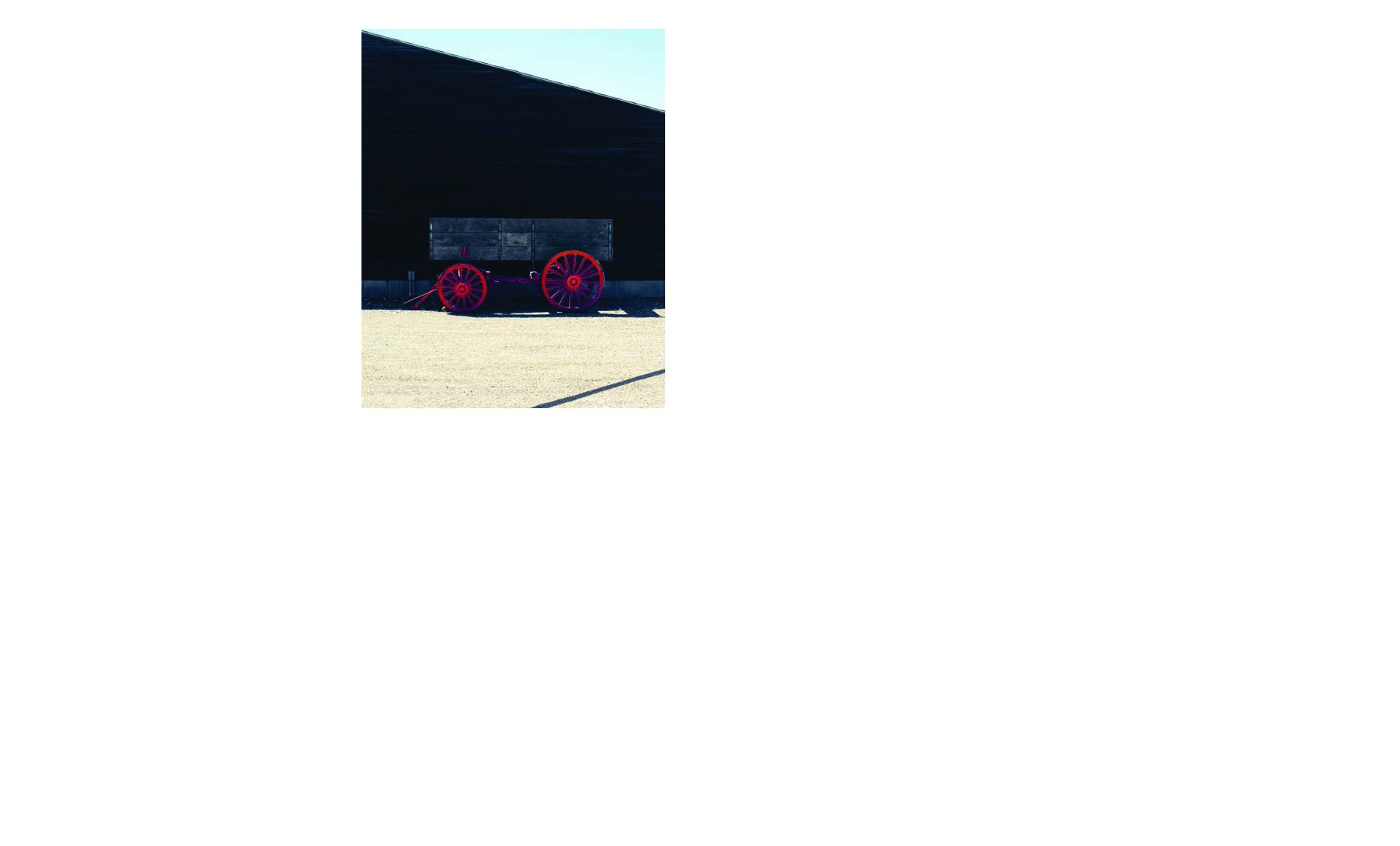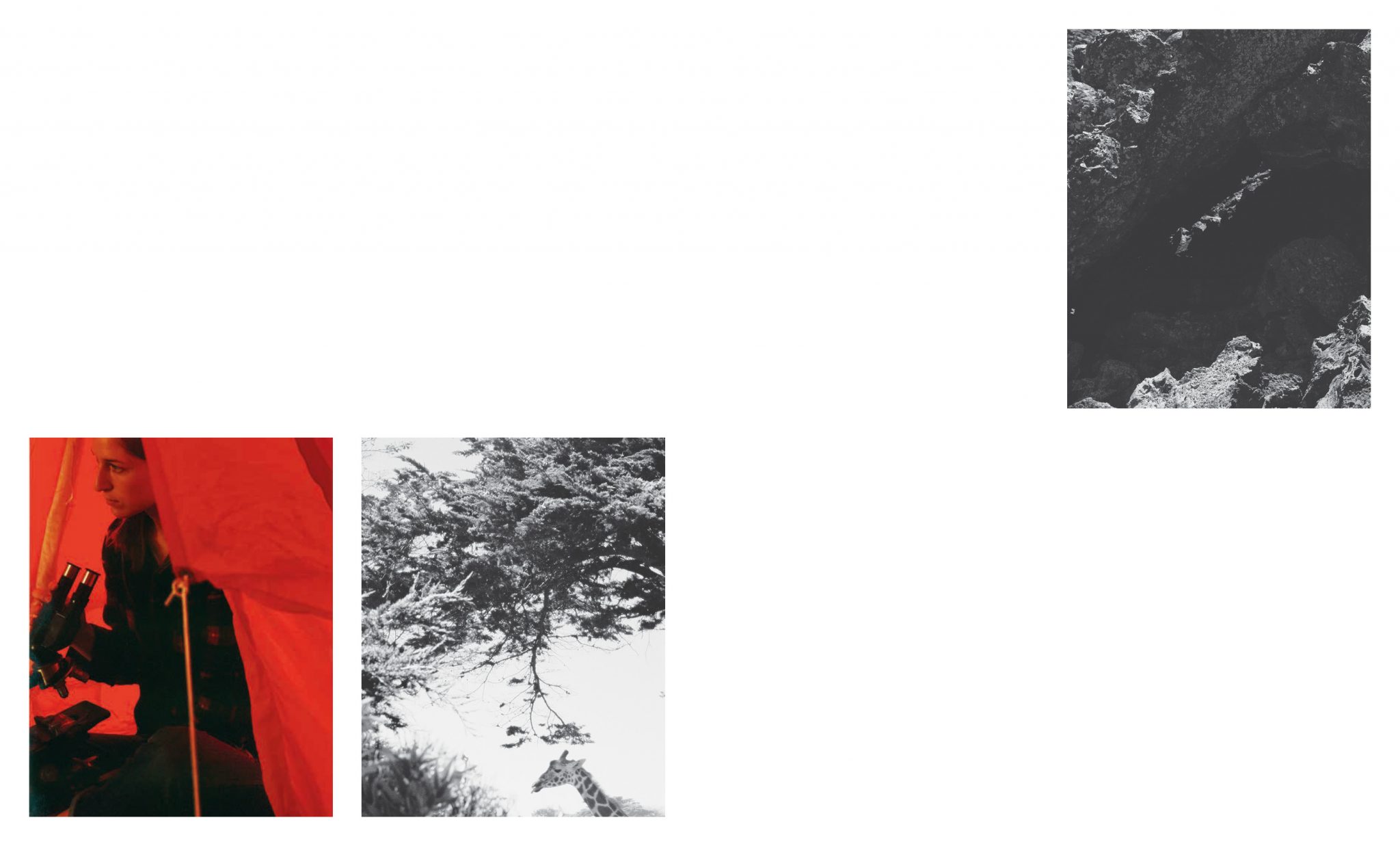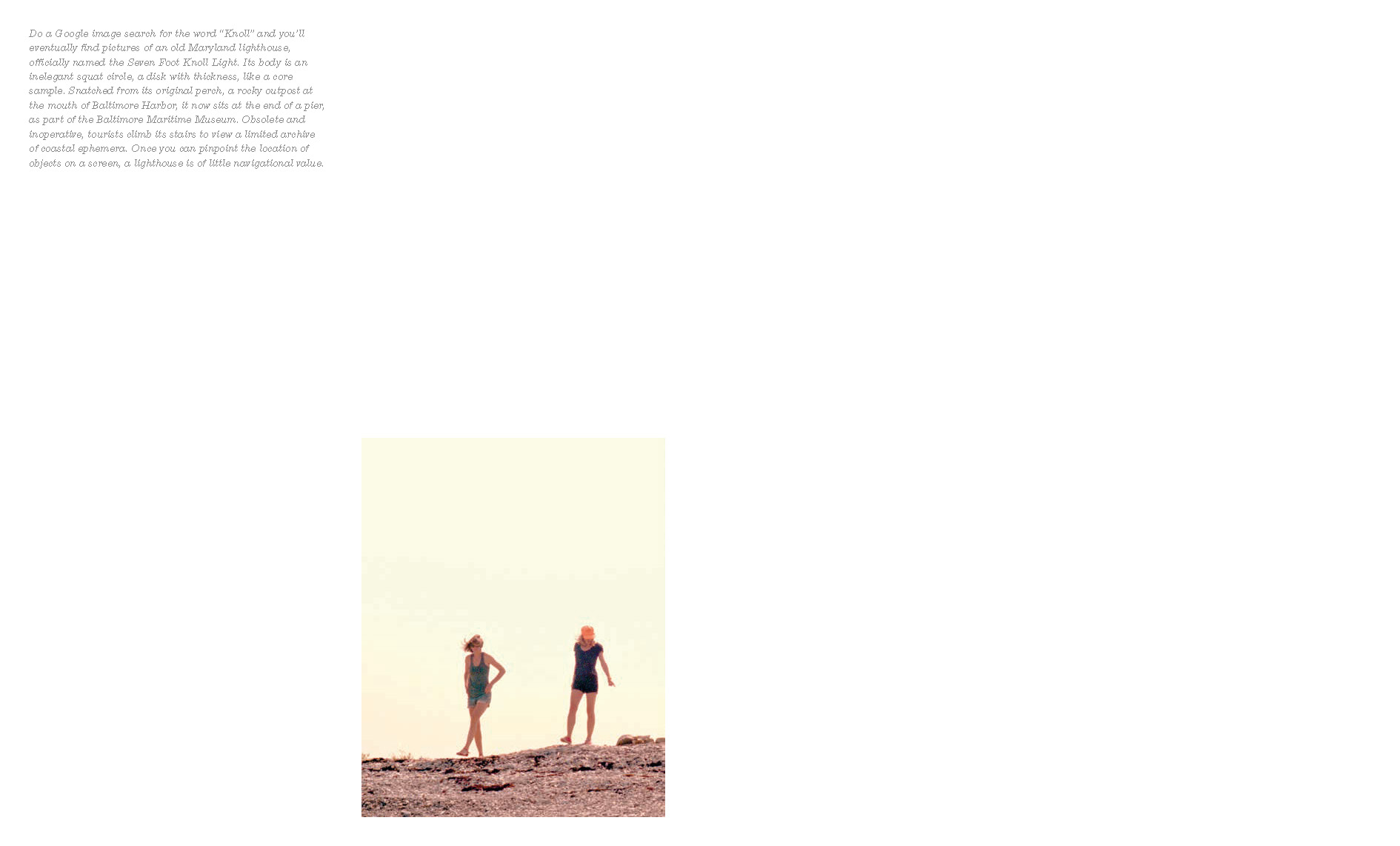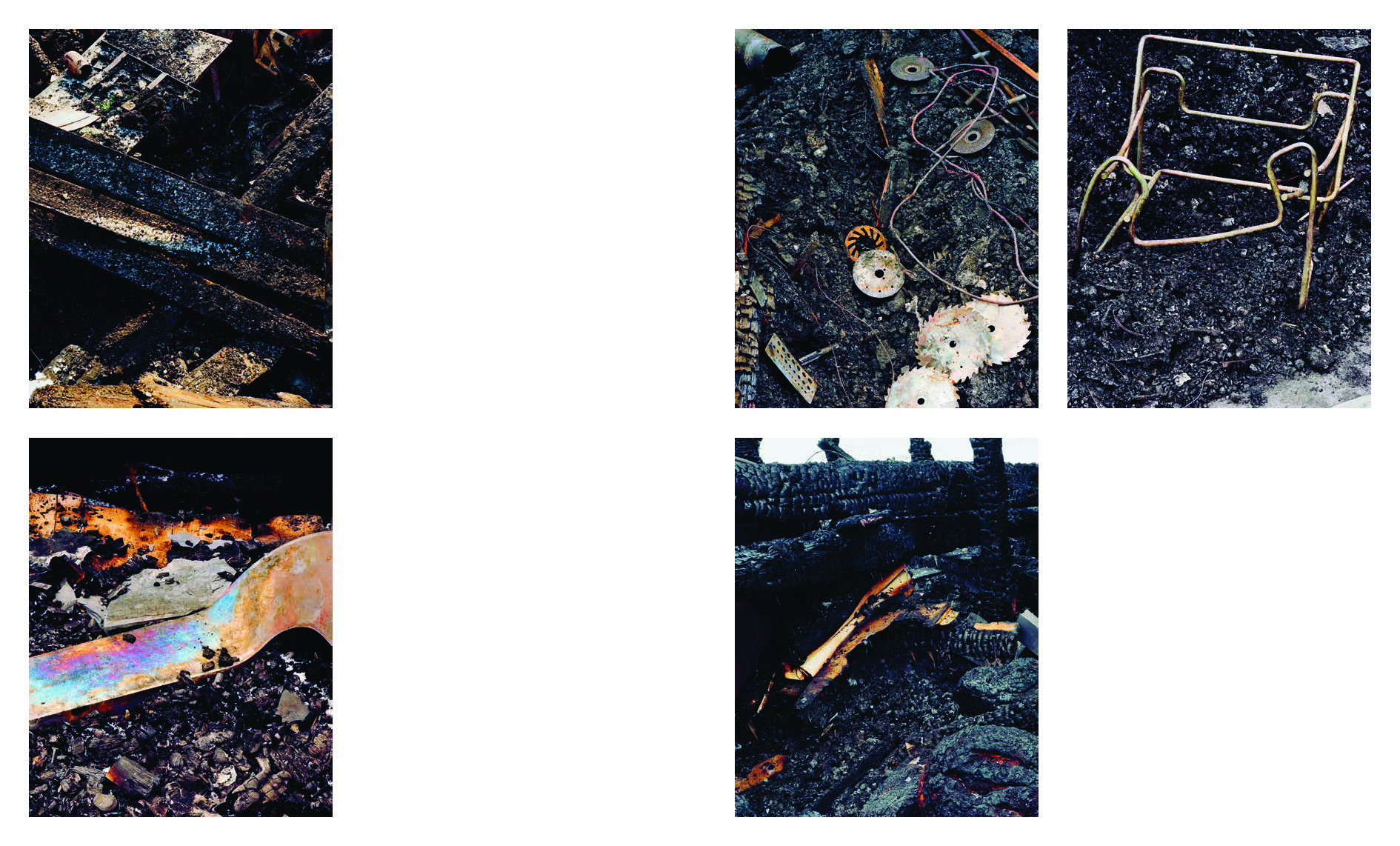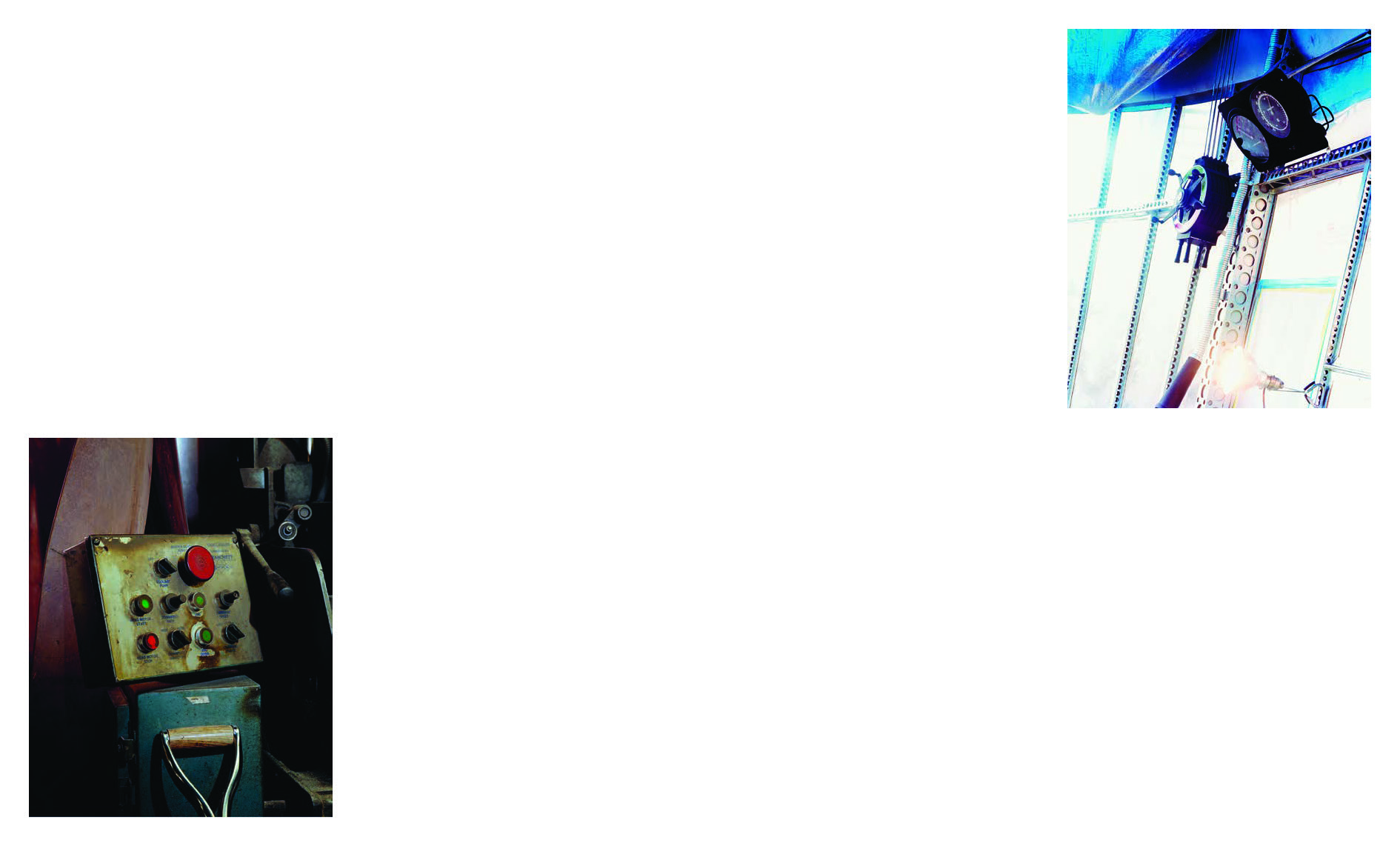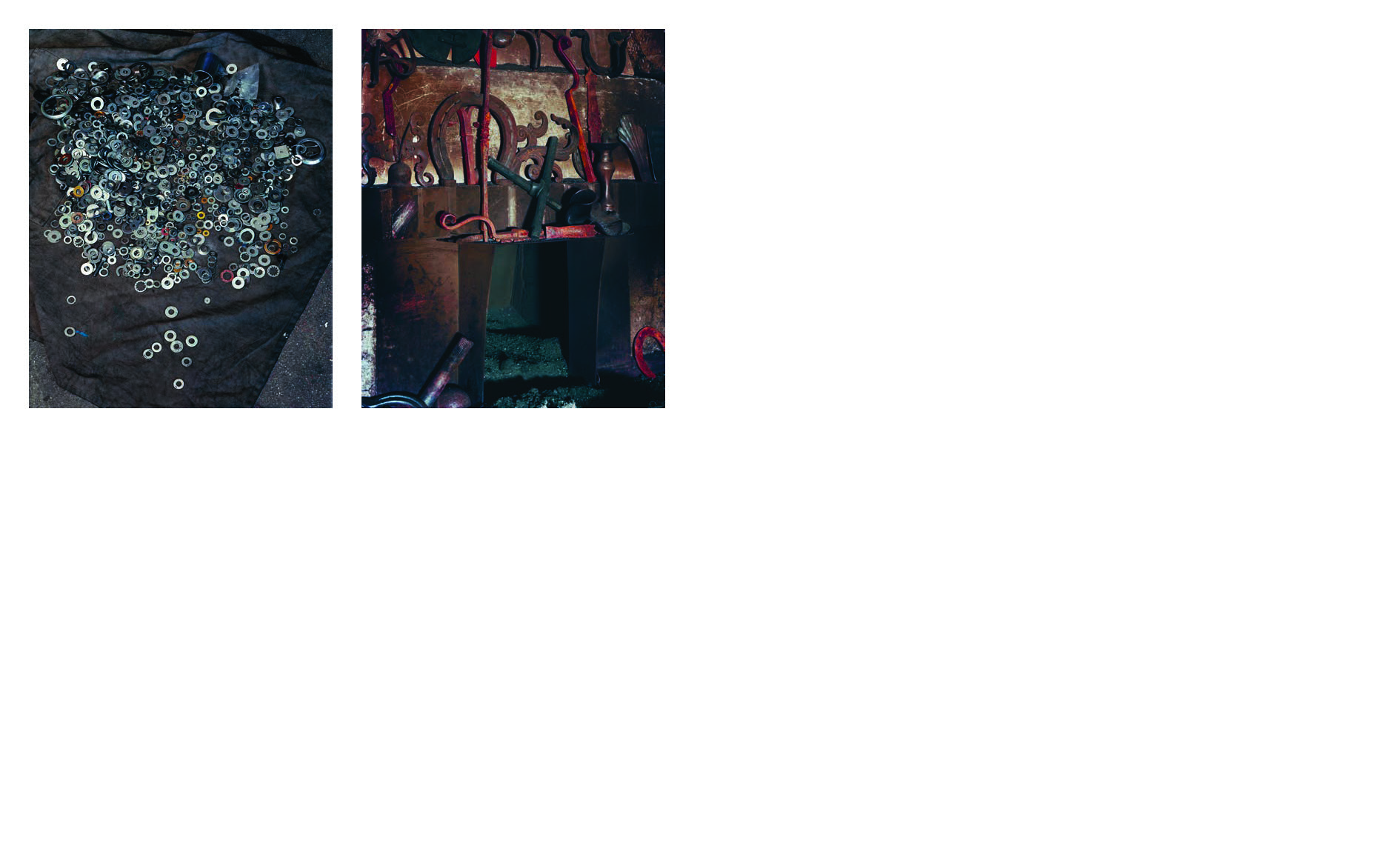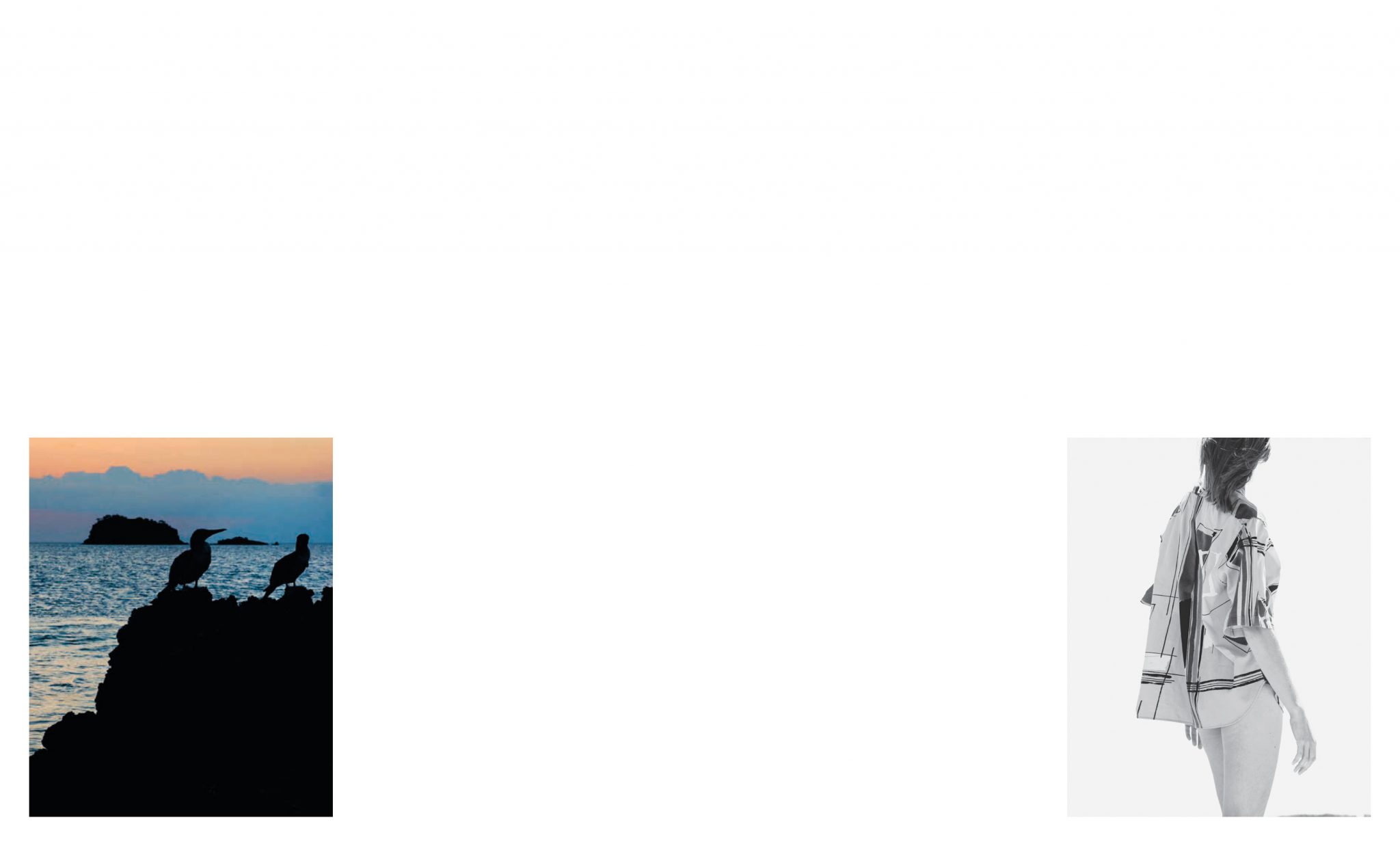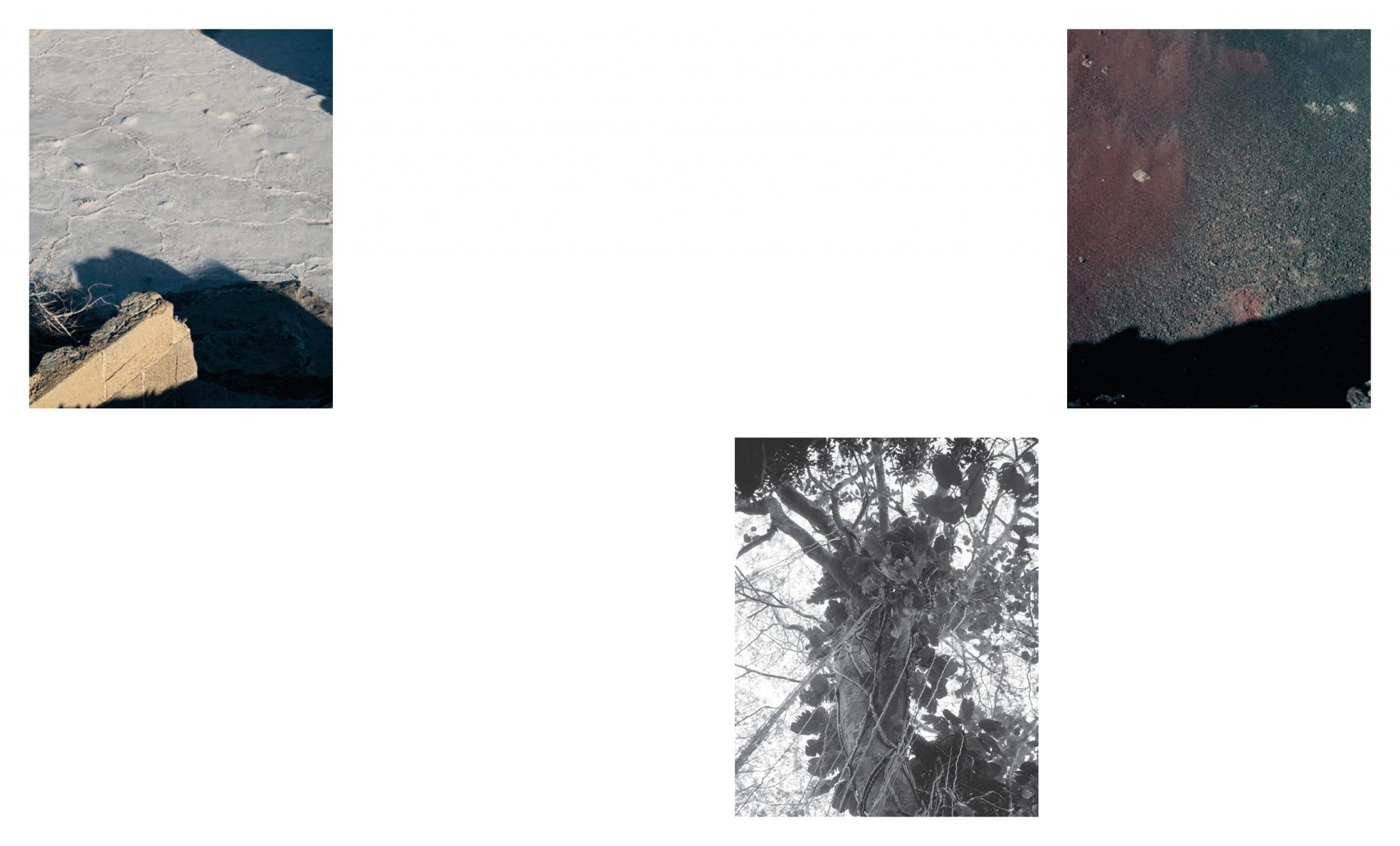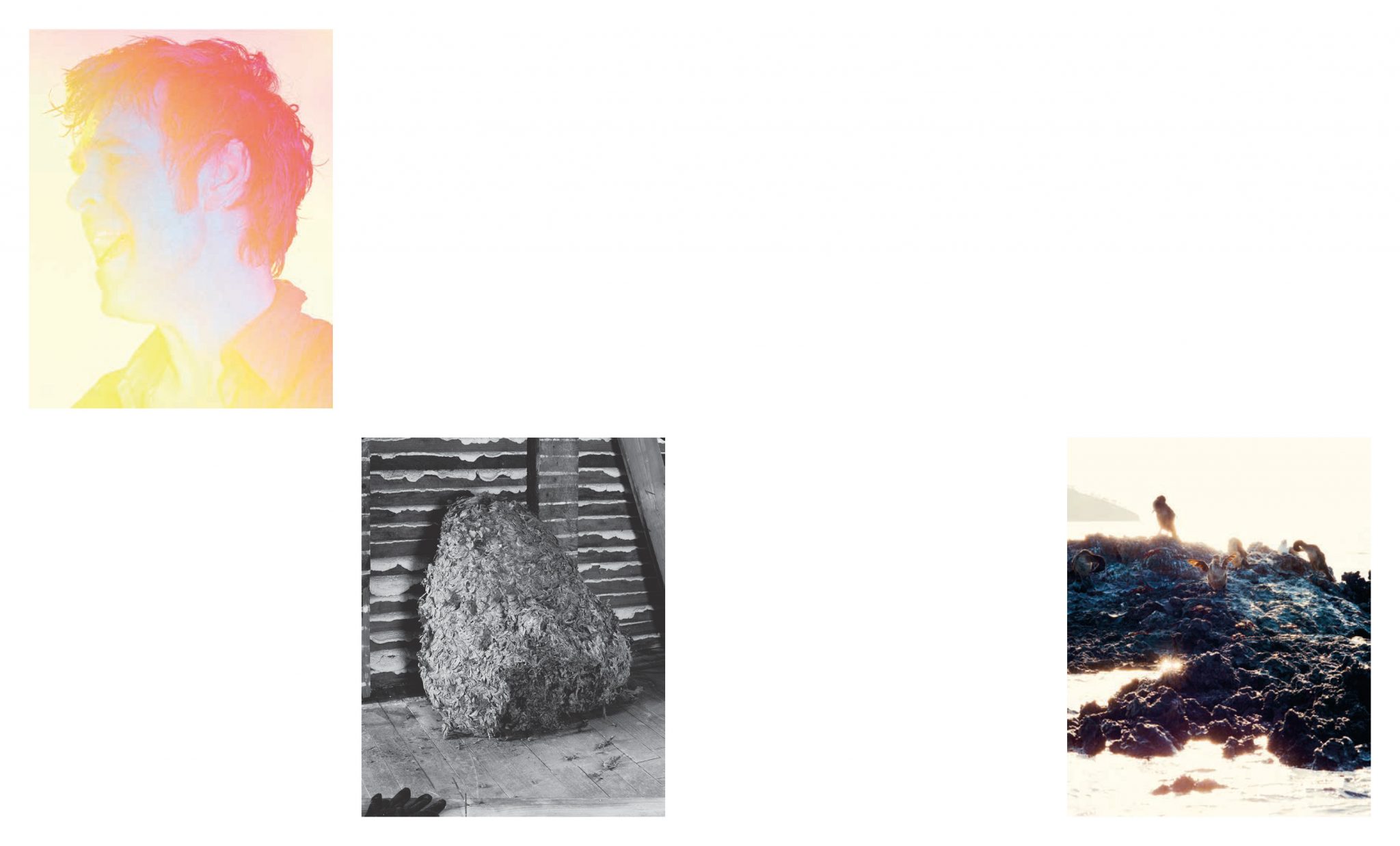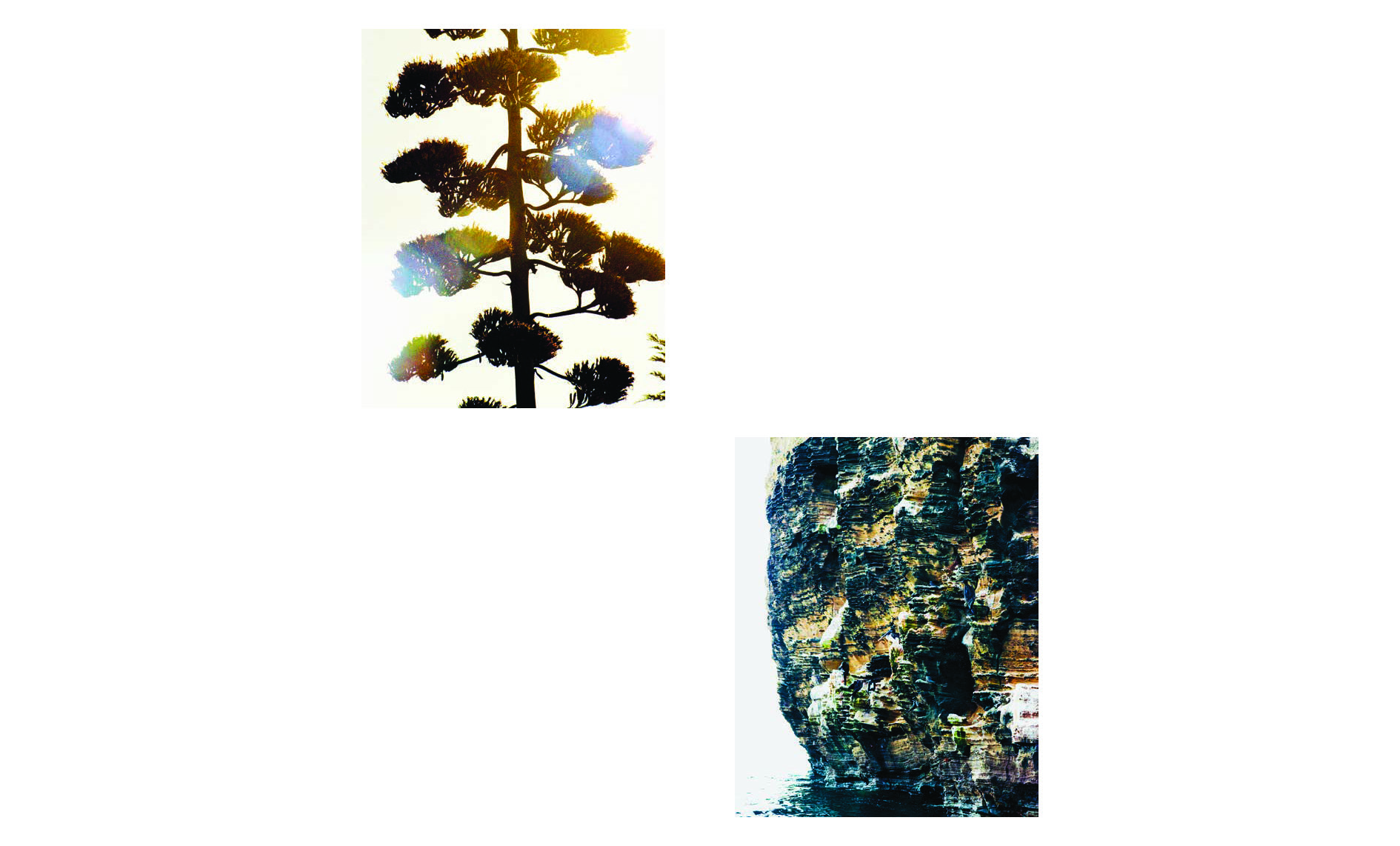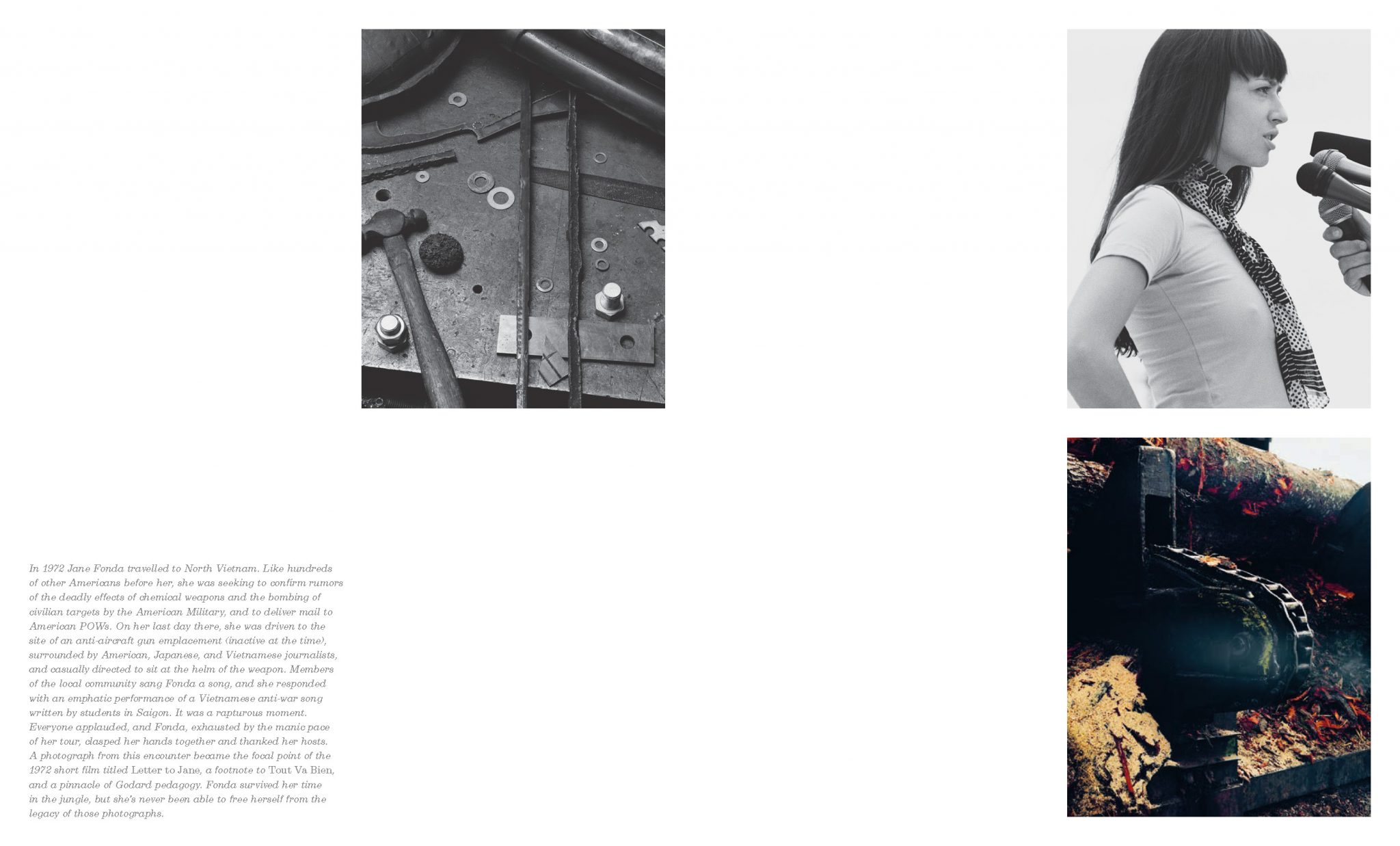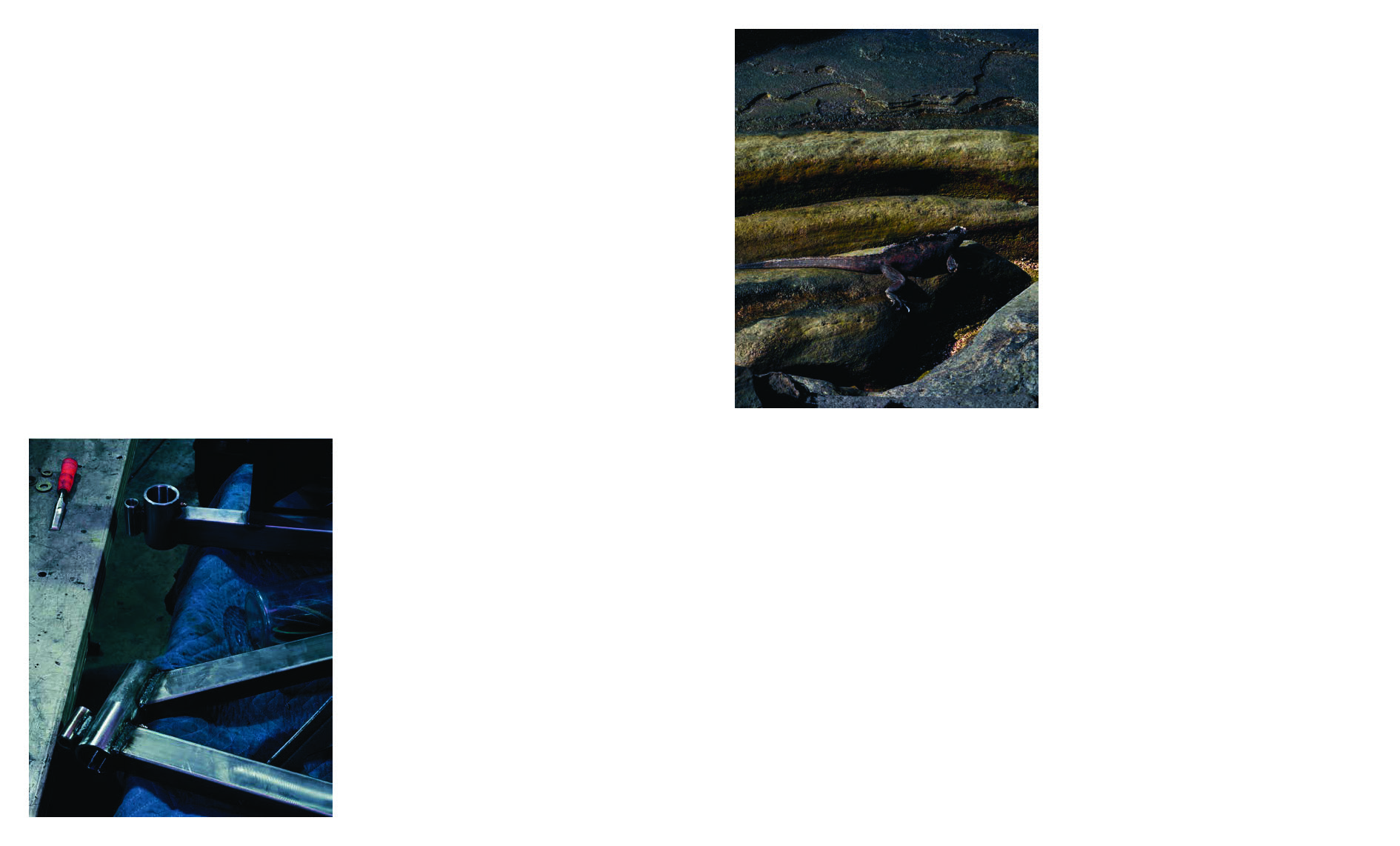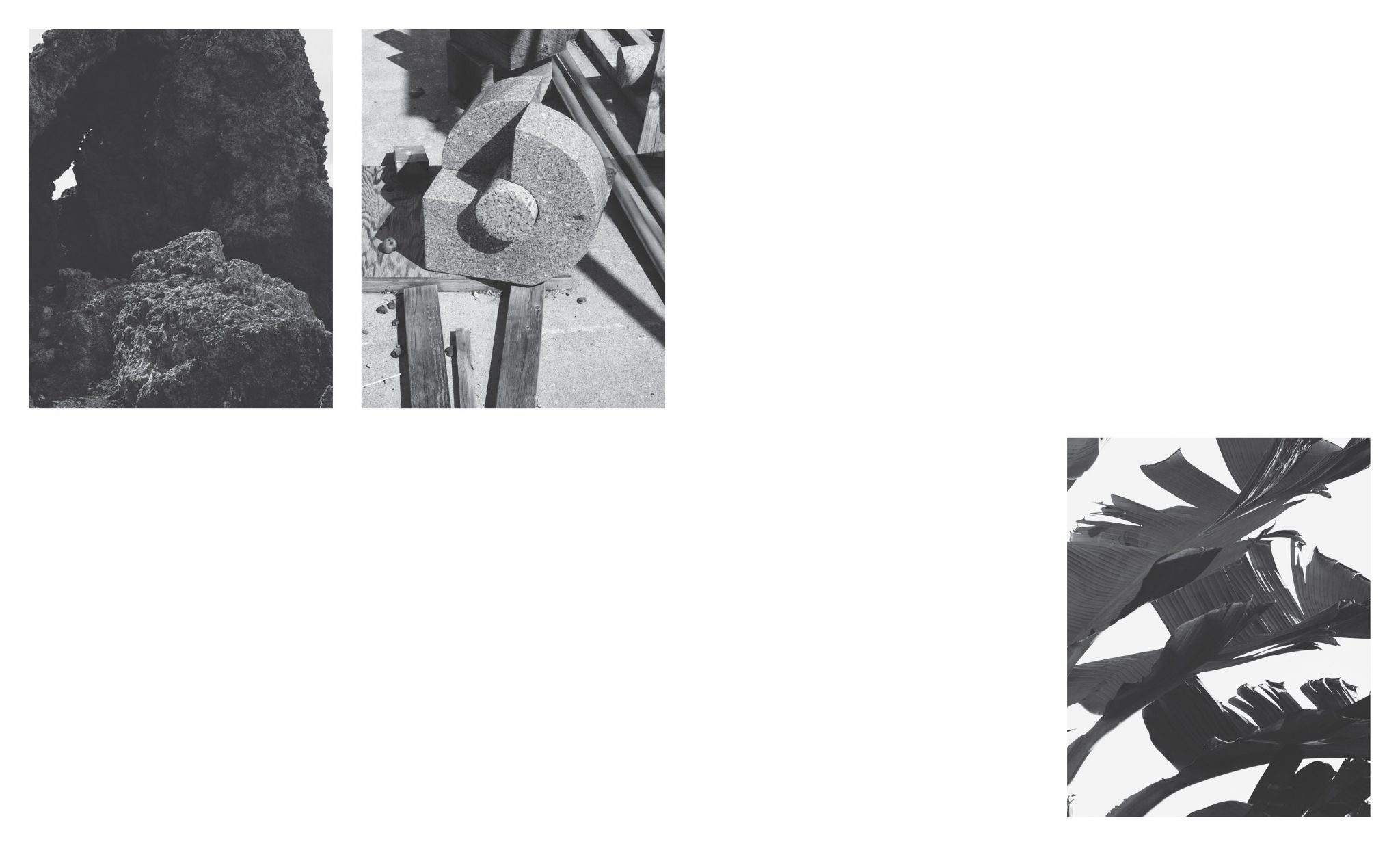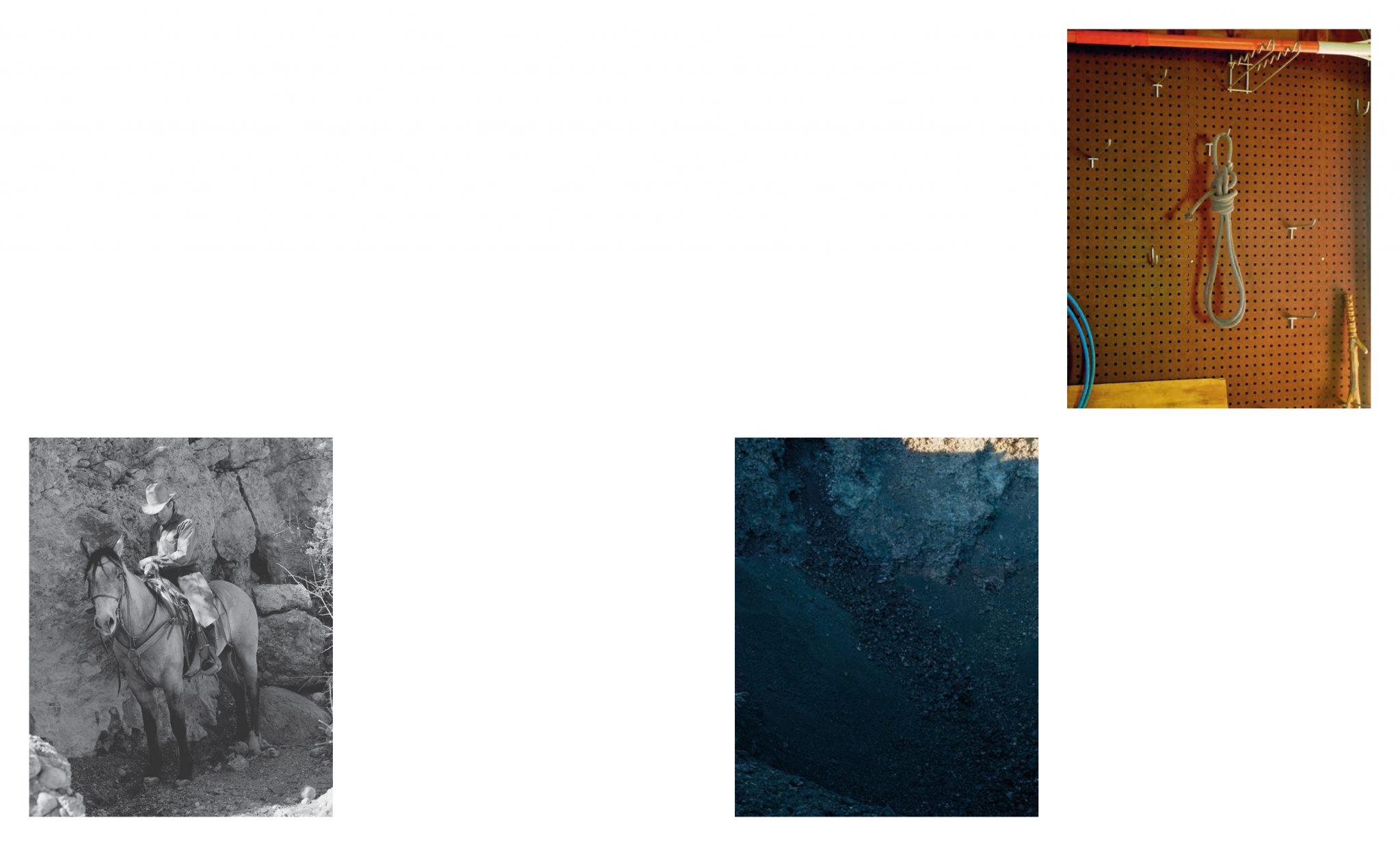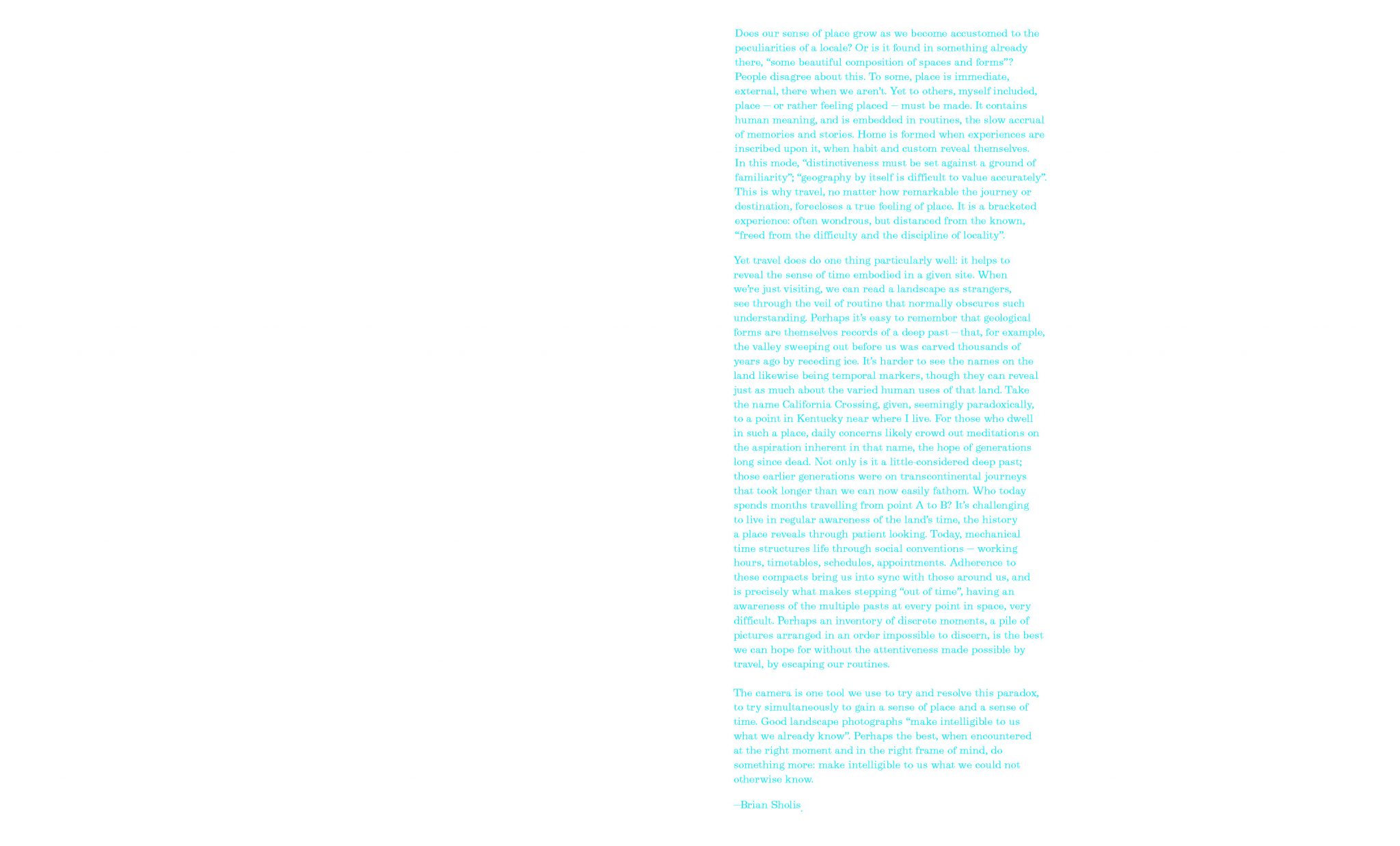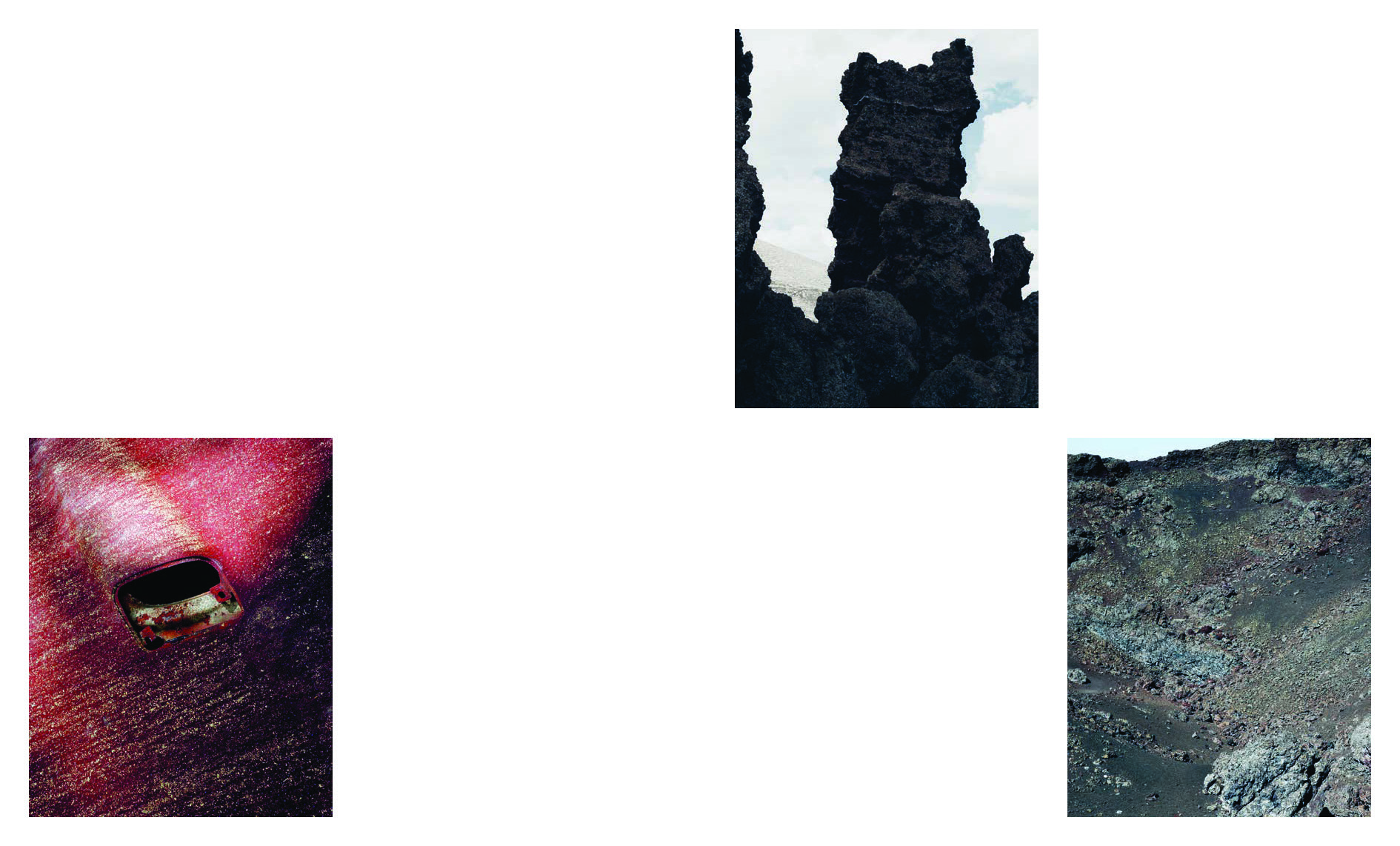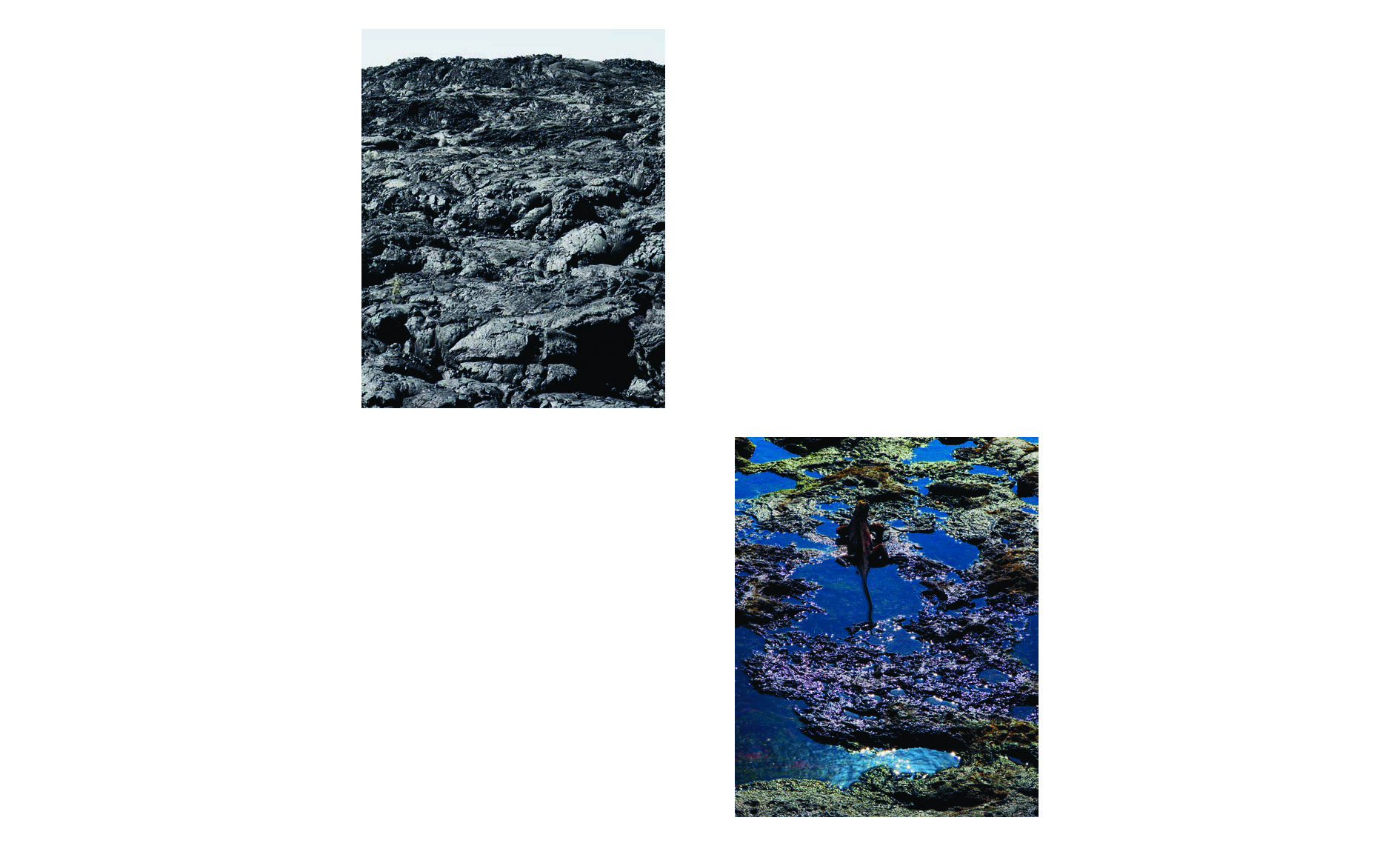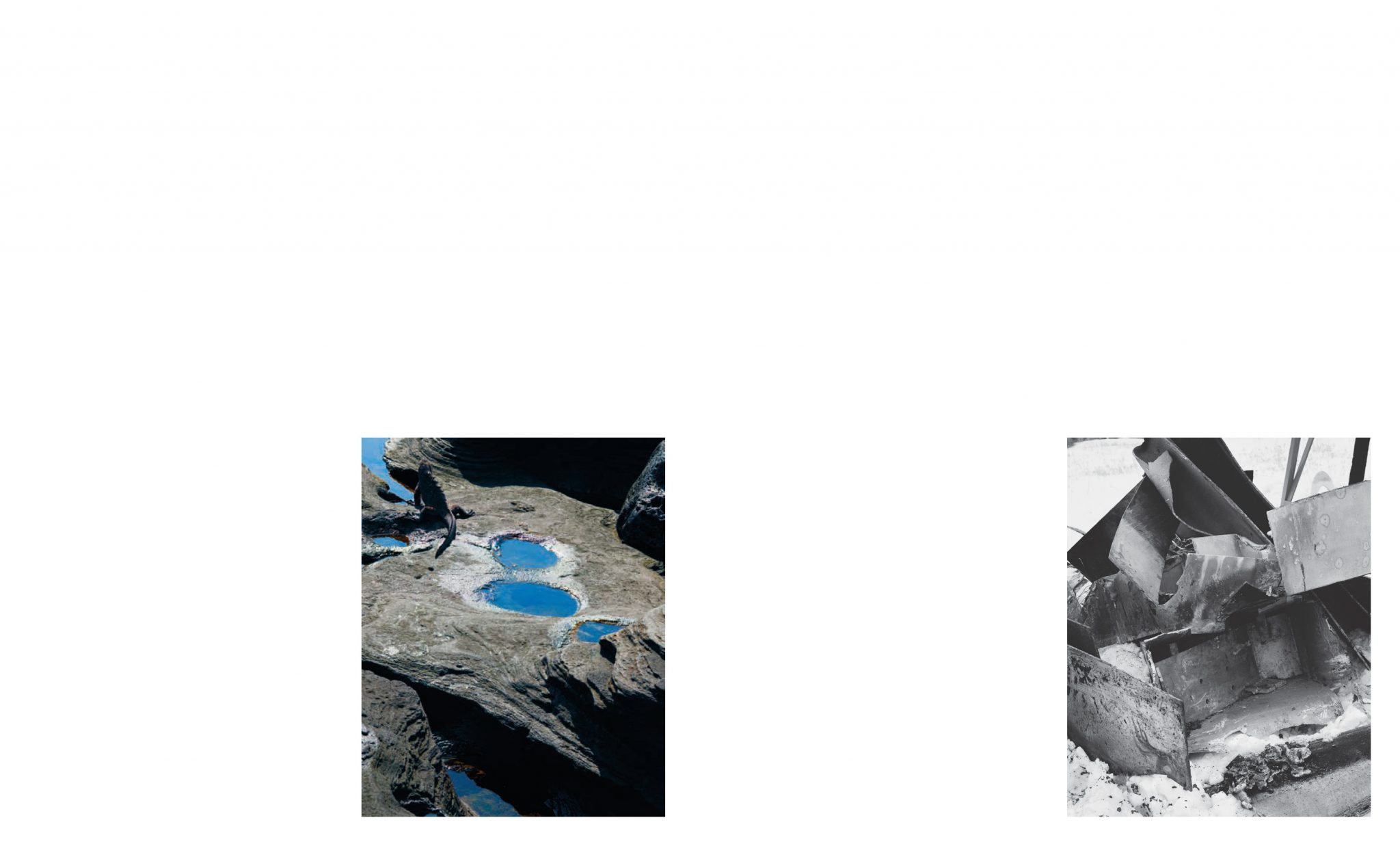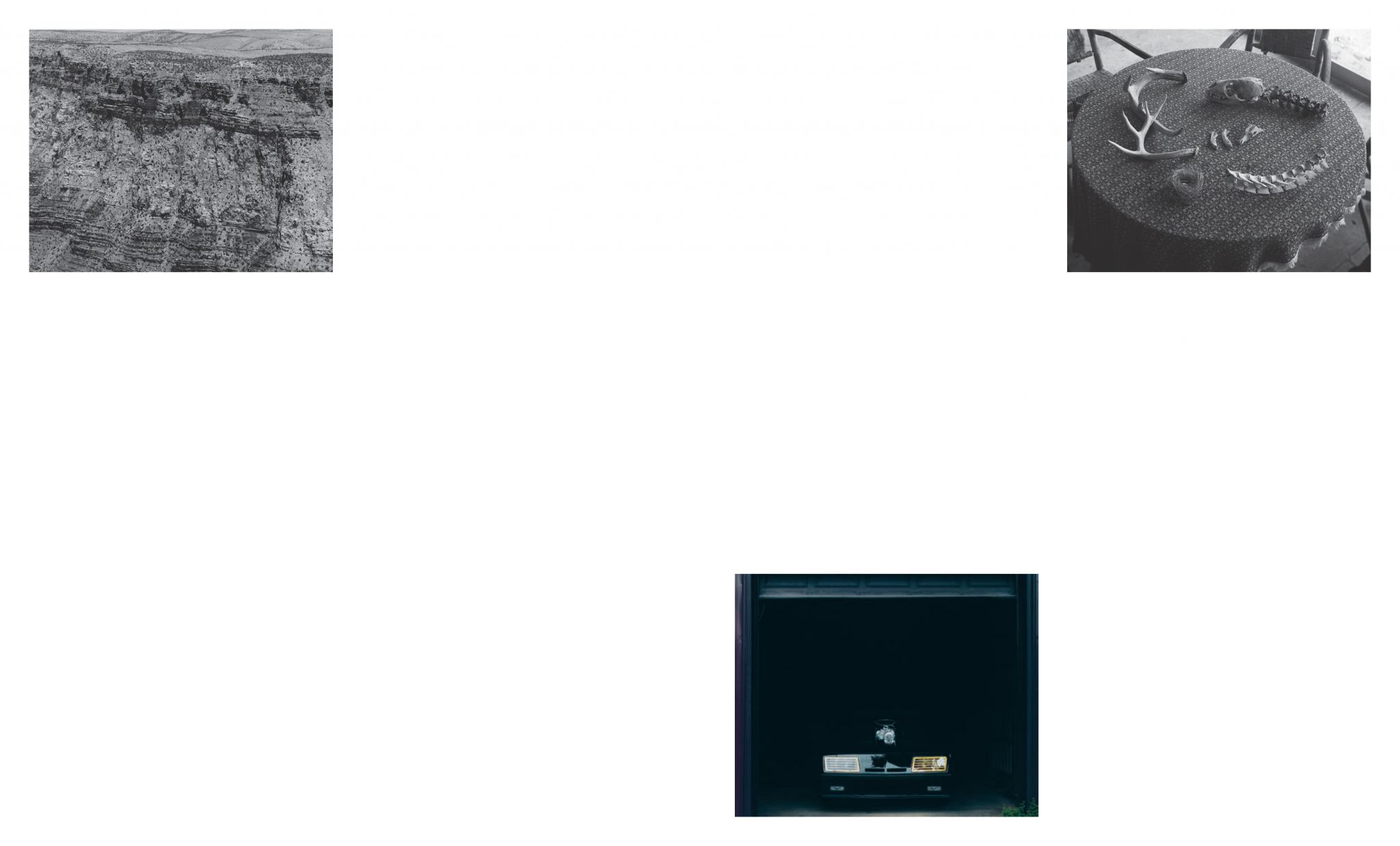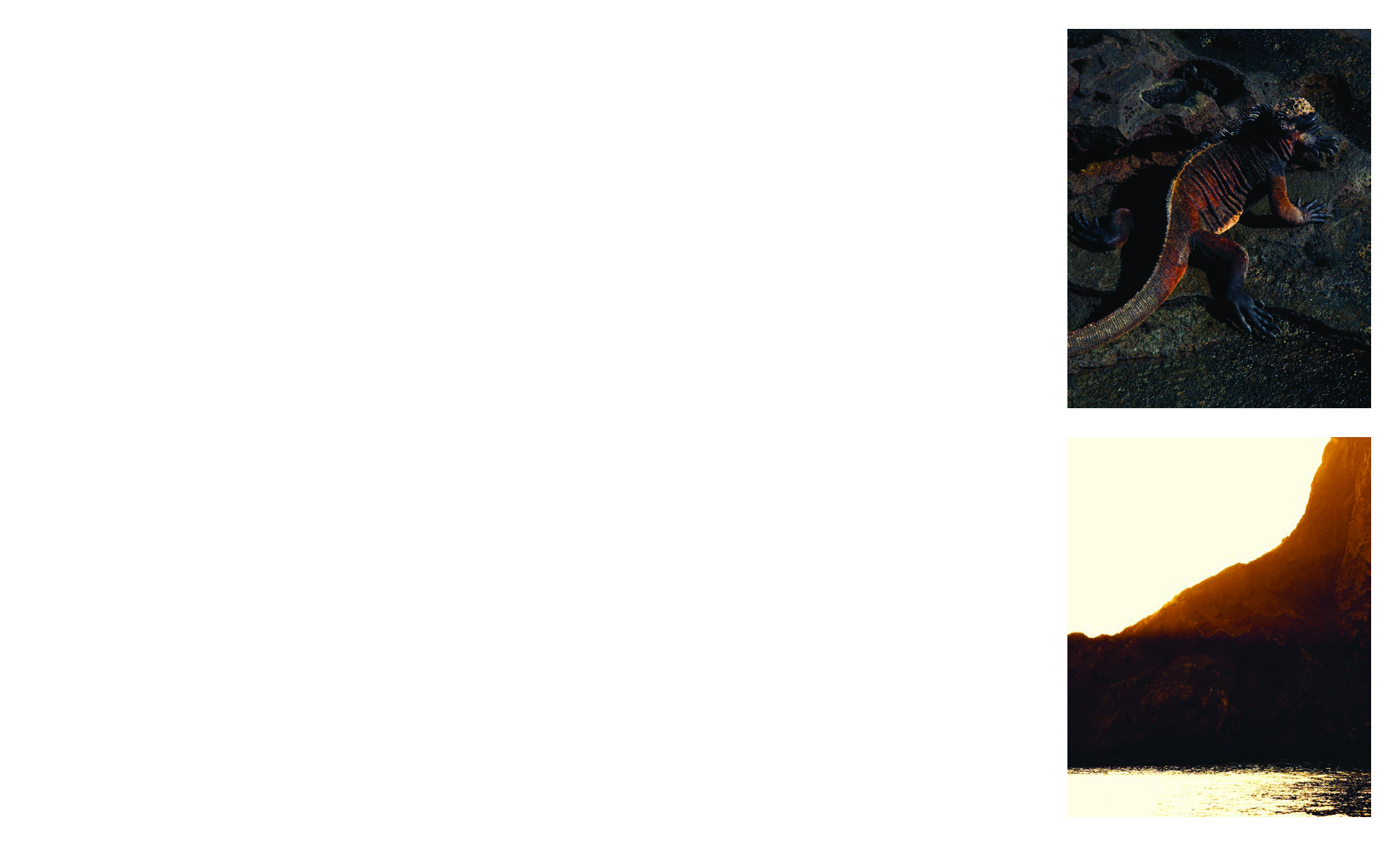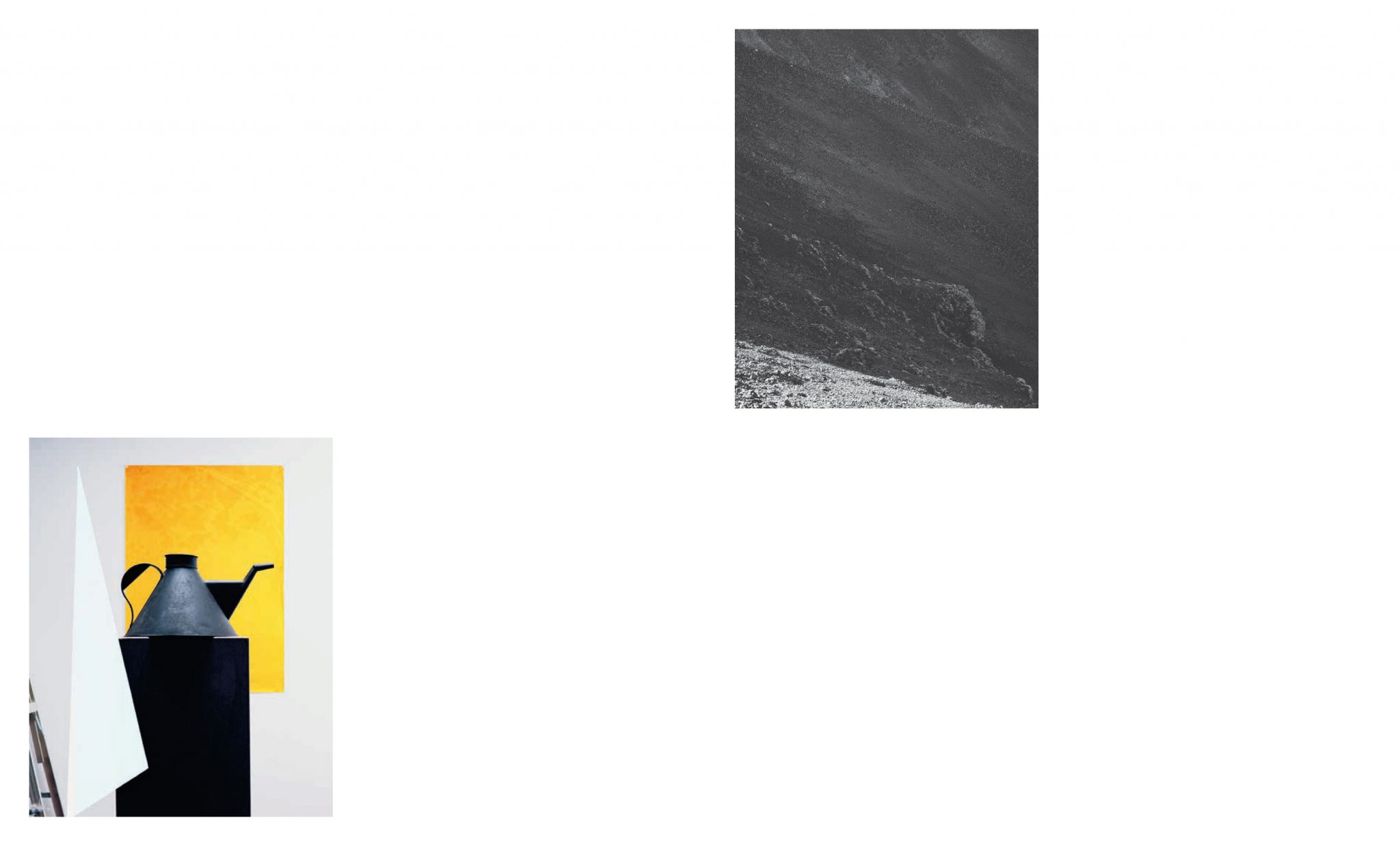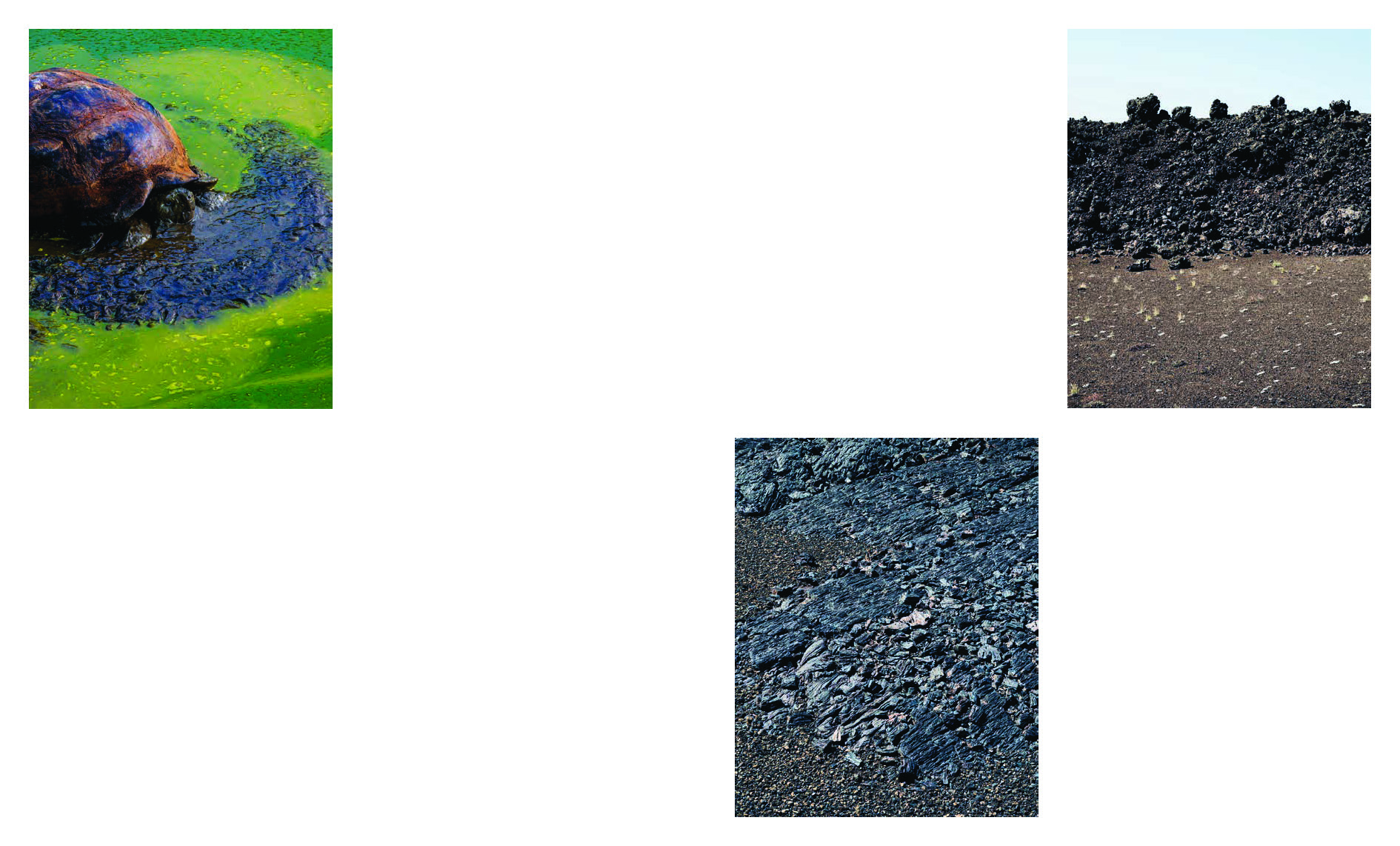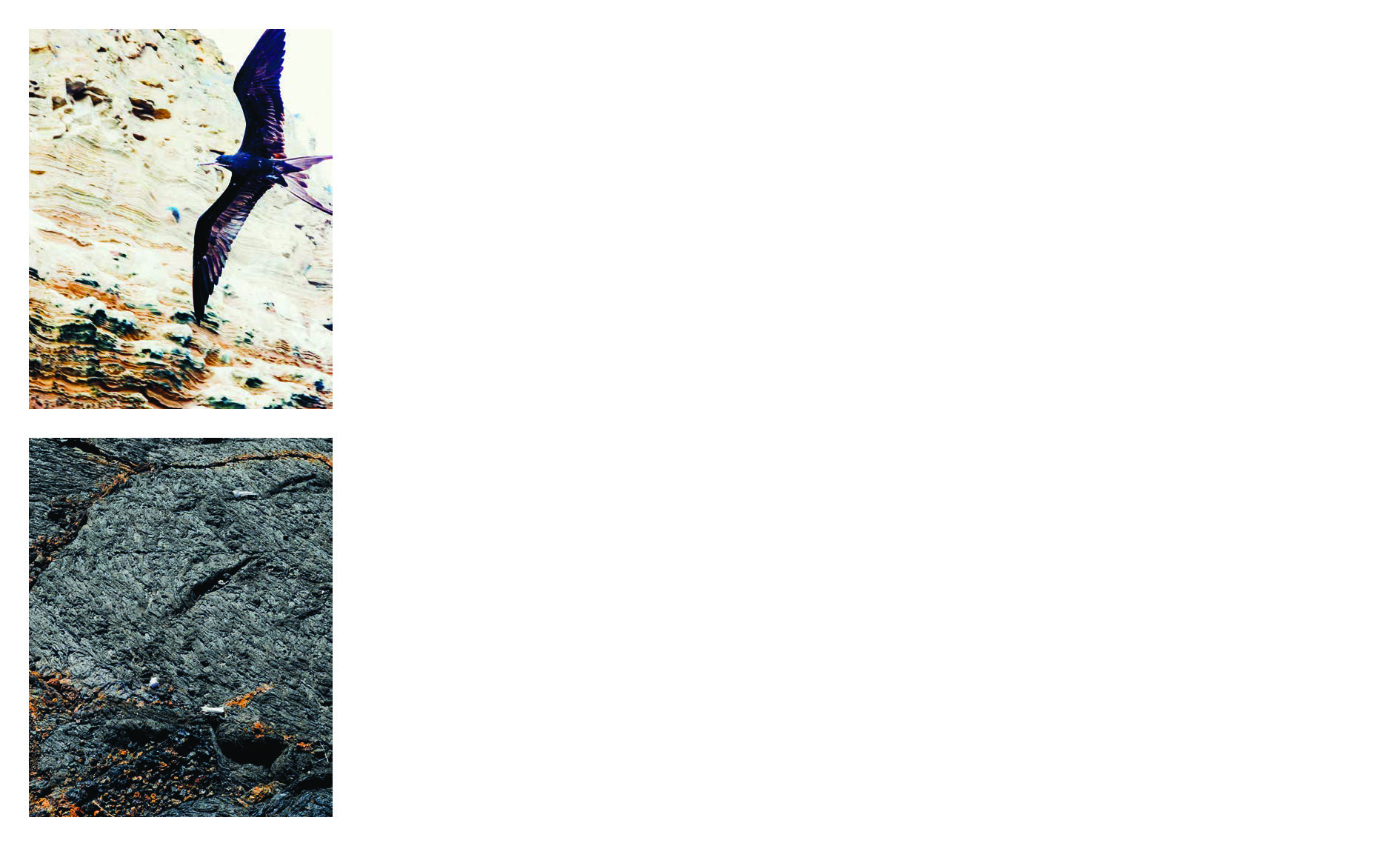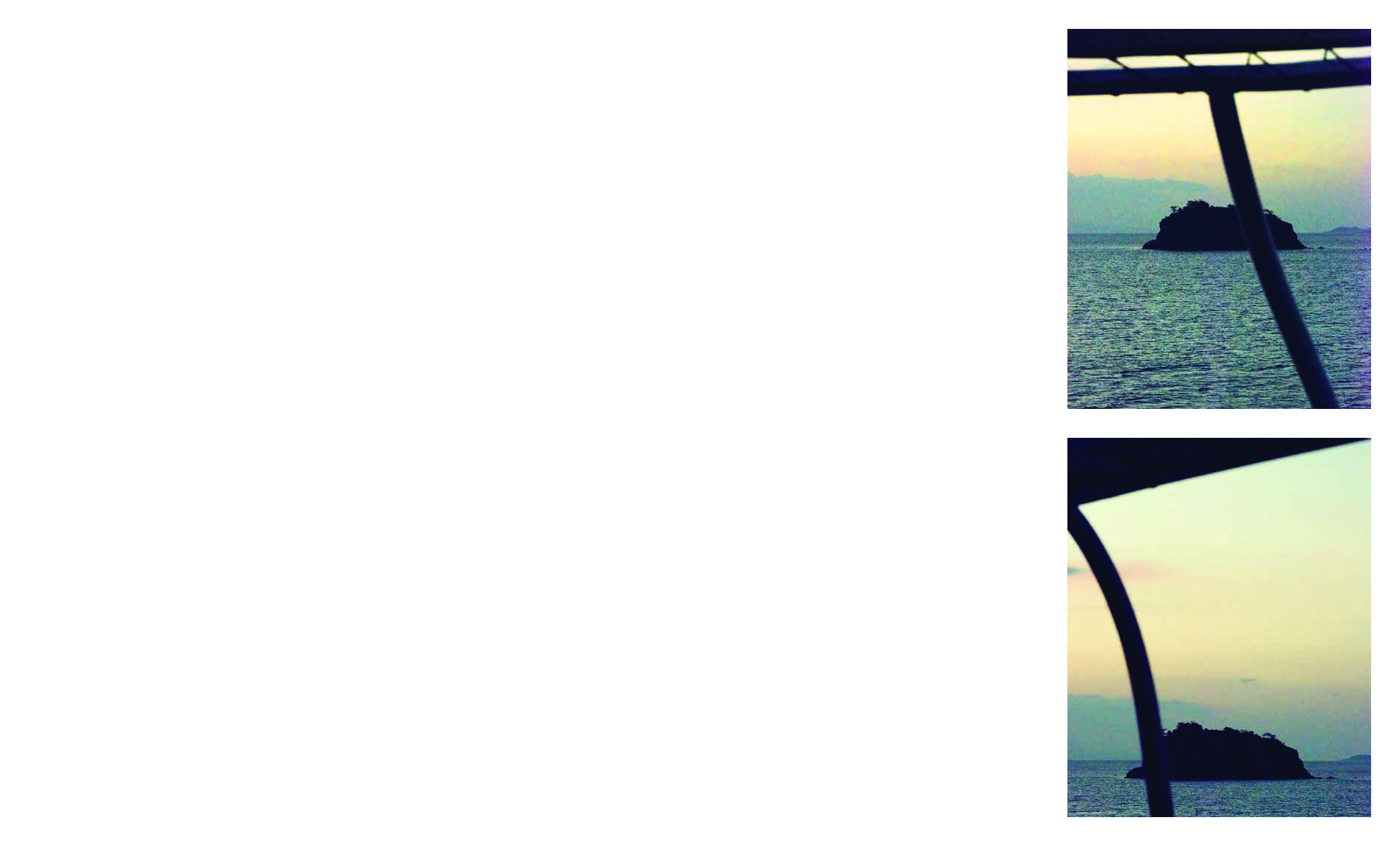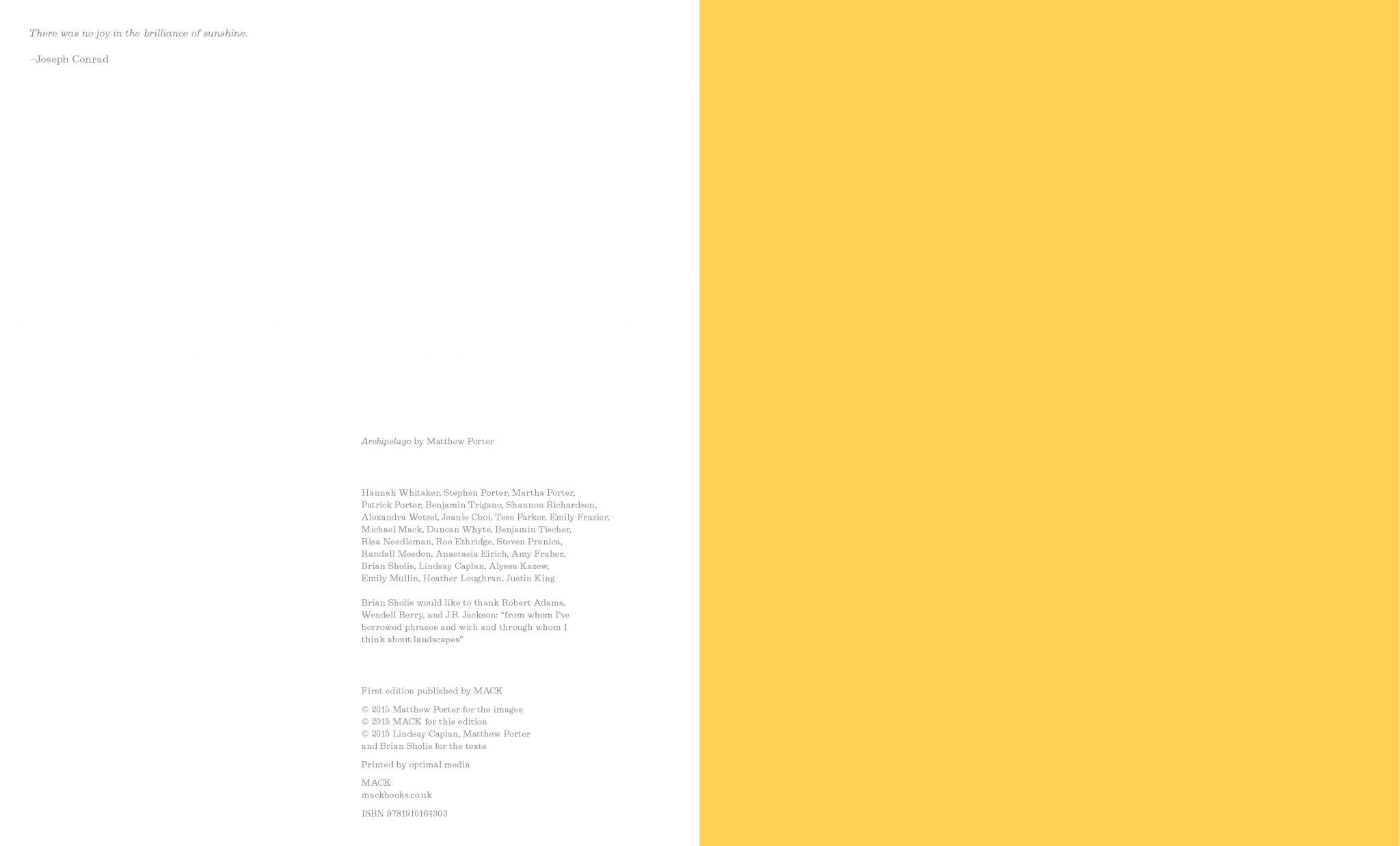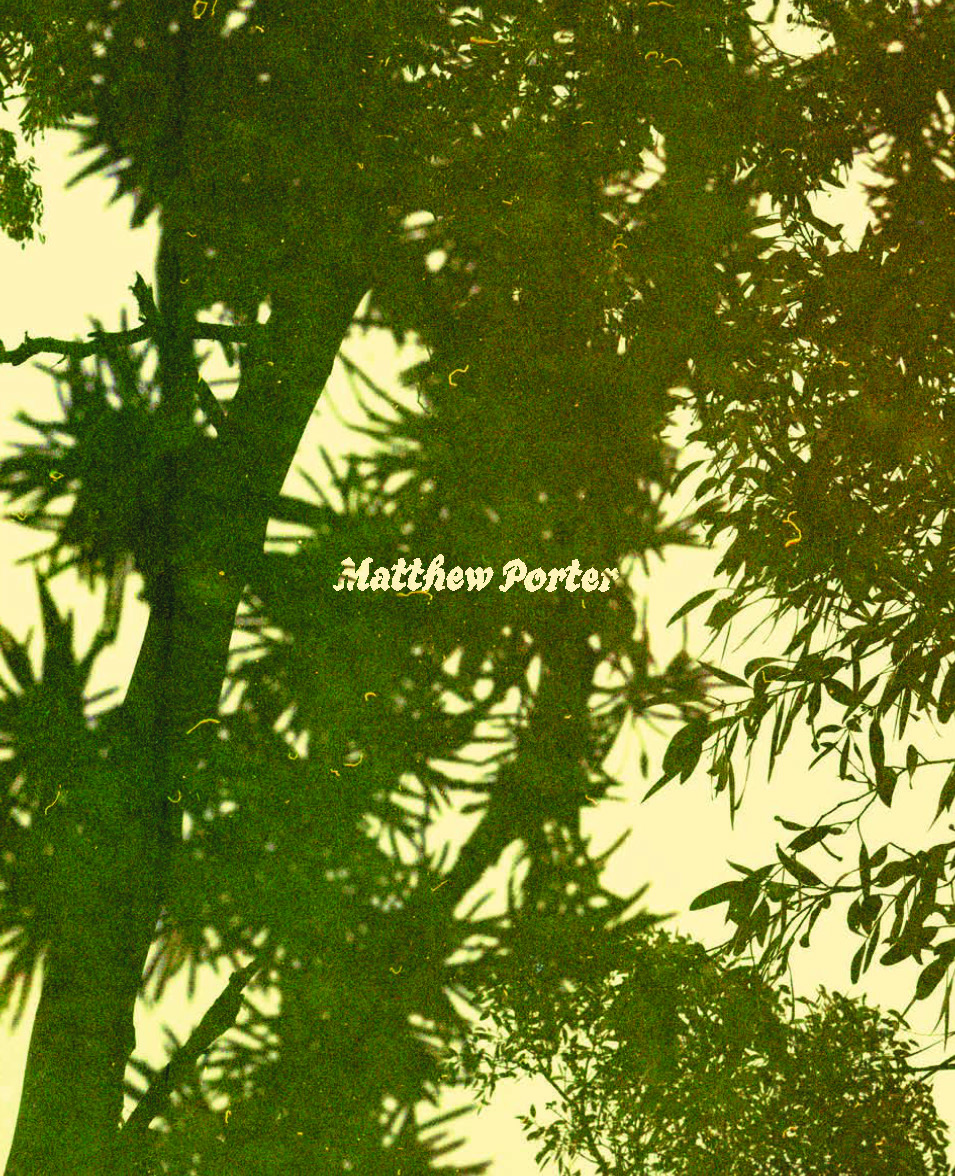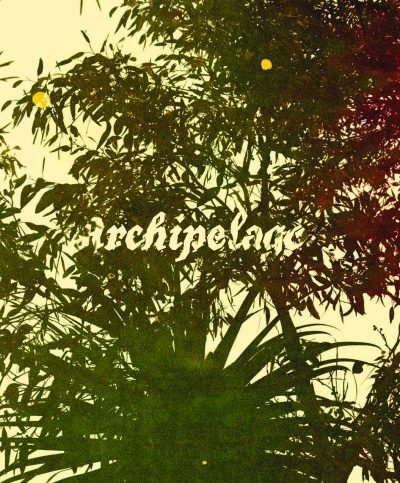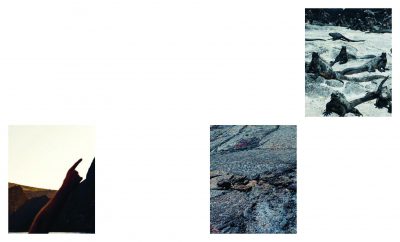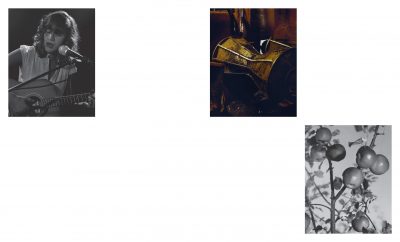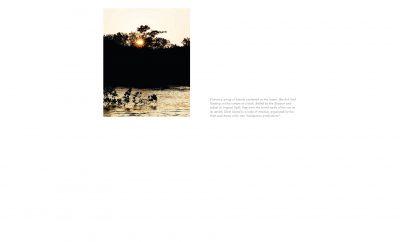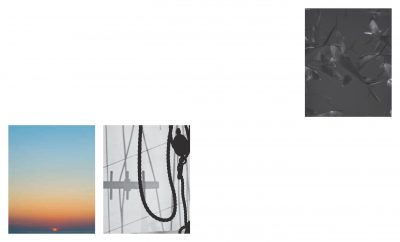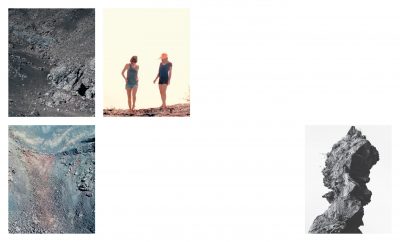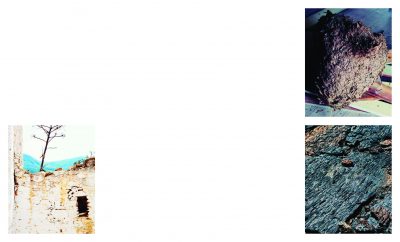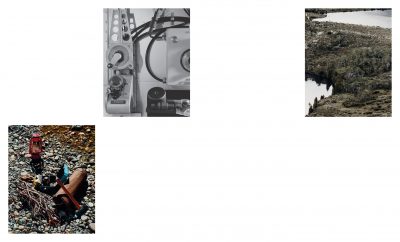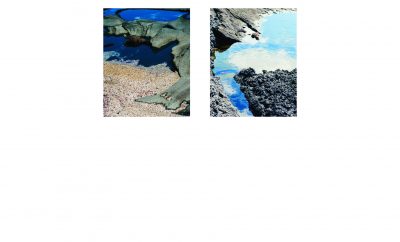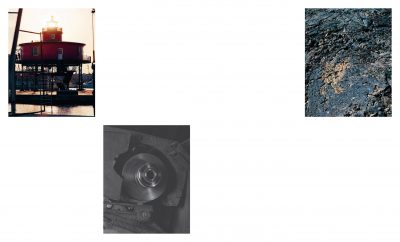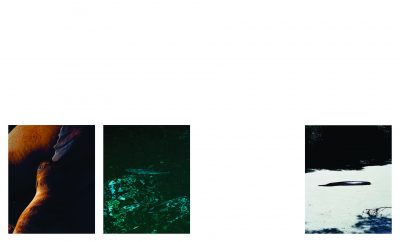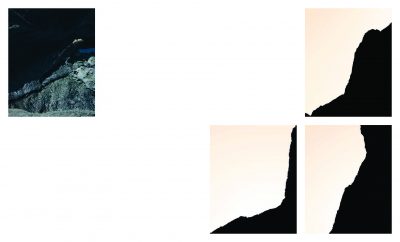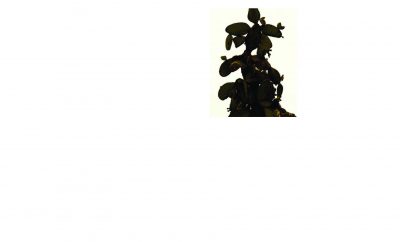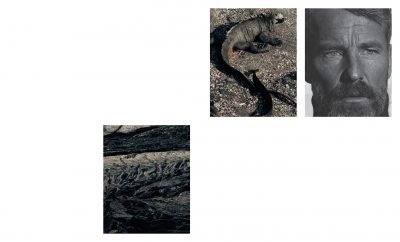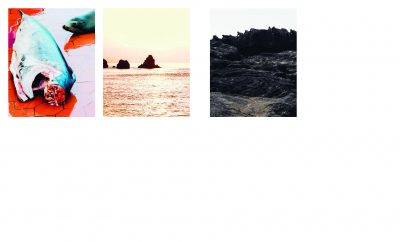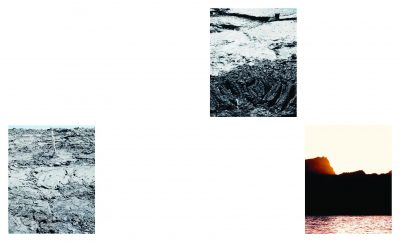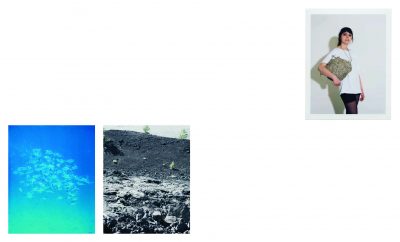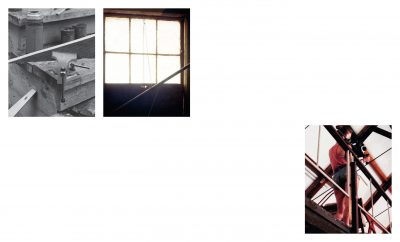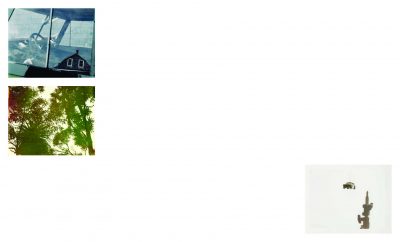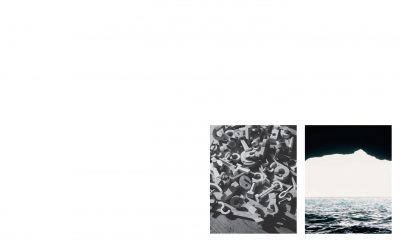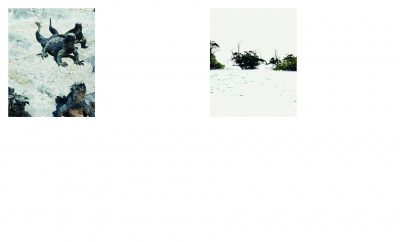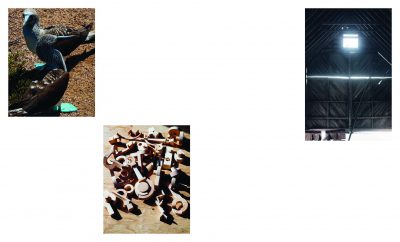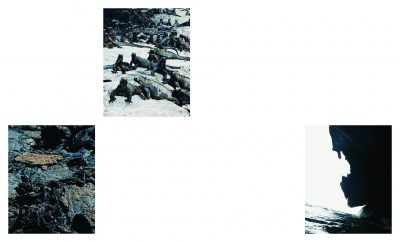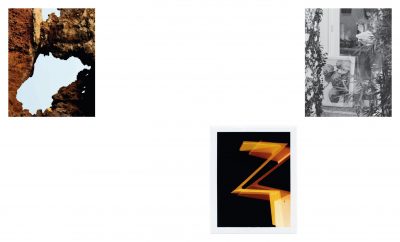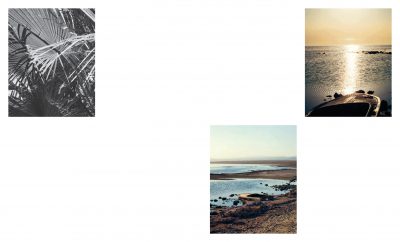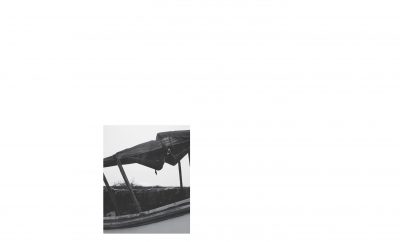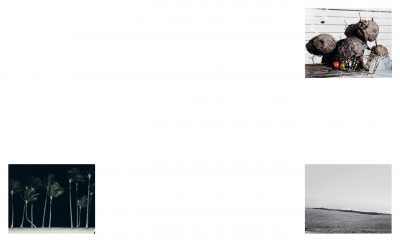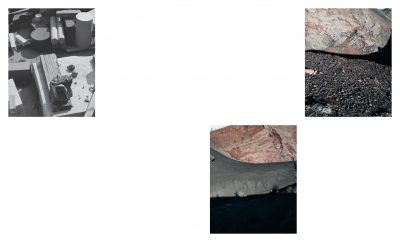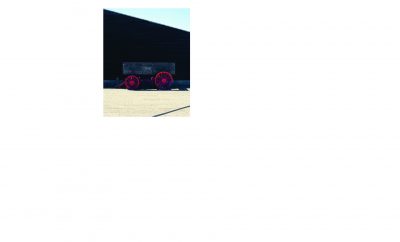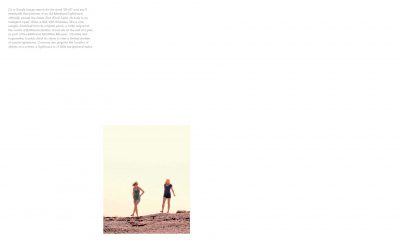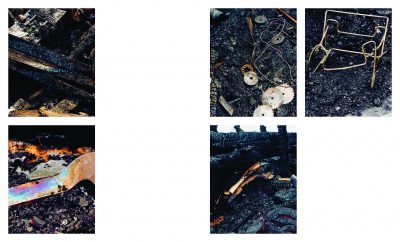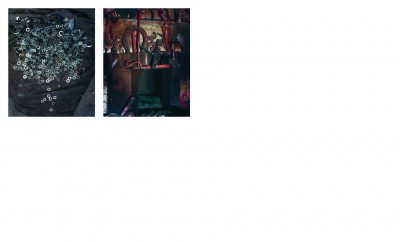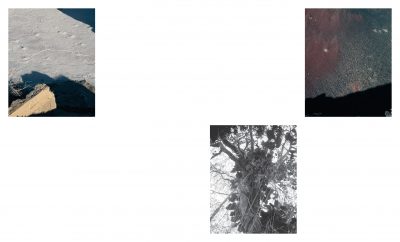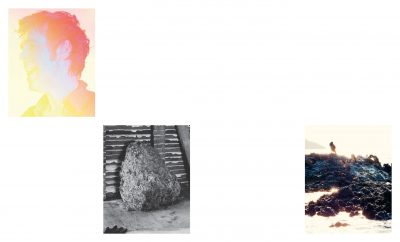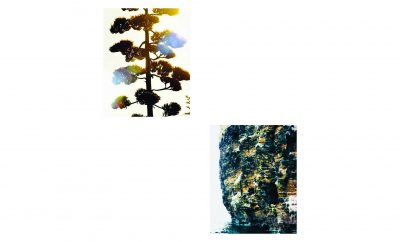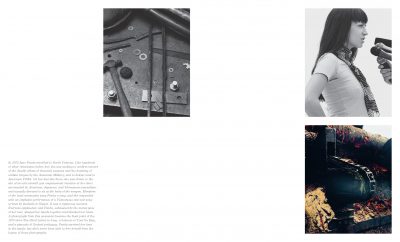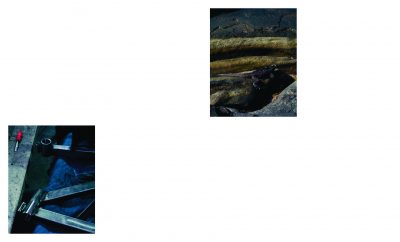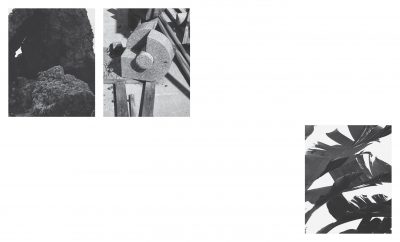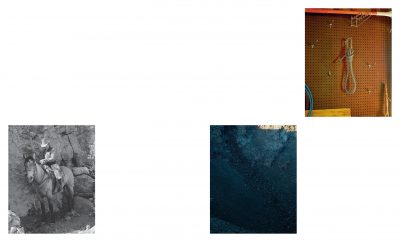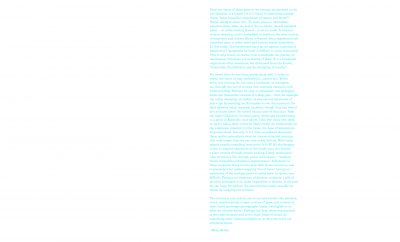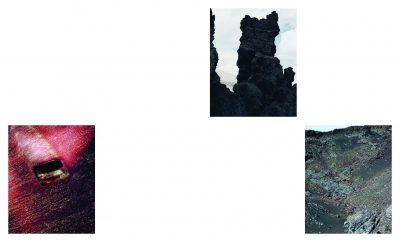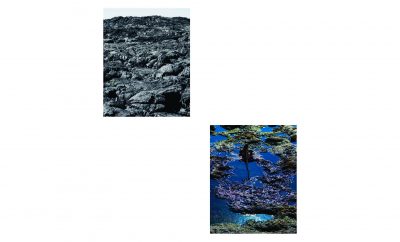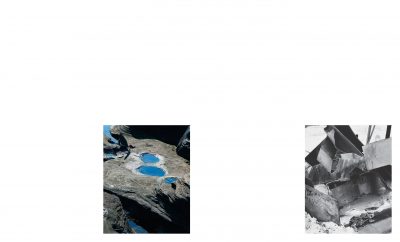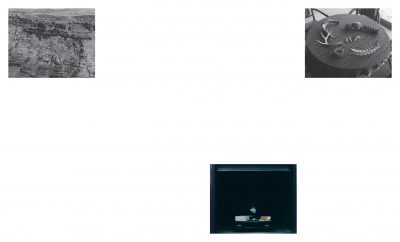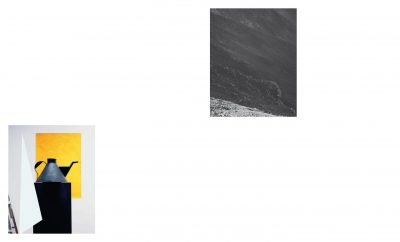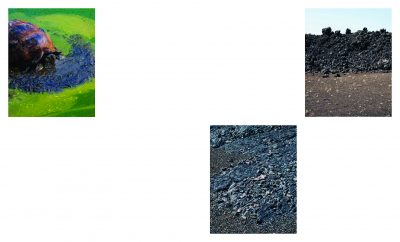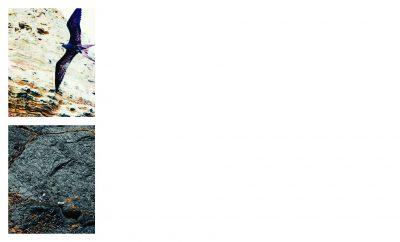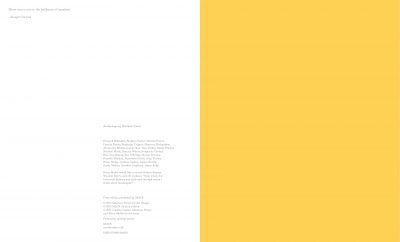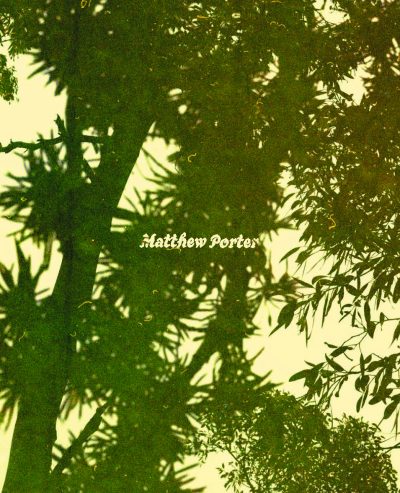Matthew Porter – Archipelago
Please update your browser to access Creative Exchange Agency.
Matthew Porter
Archipelago is a journey into an interior, upriver, towards an enigmatic hinterland. At any one instance, Matthew Porter sets up correlations between disparate images, configured on each page like islands in an archipelago, clusters which form their own, indigenous subjects. Short texts, placed at intervals, reveal the connective tissue binding varied subjects – Jane Fonda and the Vietnam War, the Hawaiian Island of Kaua'i and Hollywood. What interests Porter is the legacy of the photographic image, and its capacity to reach across history, to make intelligible to us what we already know, or, encountered at the right moment, that which we could not otherwise know. “Porter’s stills function like portals”, writes Lindsay Caplan, “obliquely suggestive of historical events, modernist styles, and codified genres, sometimes all at the same time… this very contemporary condition in which knowing too much and knowing too little invoke the same visceral state”. More
Matthew Porter
Archipelago is a journey into an interior, upriver, towards an enigmatic hinterland. At any one instance, Matthew Porter sets up correlations between disparate images, configured on each page like islands in an archipelago, clusters which form their own, indigenous subjects. Short texts, placed at intervals, reveal the connective tissue binding varied subjects – Jane Fonda and the Vietnam War, the Hawaiian Island of Kaua'i and Hollywood. What interests Porter is the legacy of the photographic image, and its capacity to reach across history, to make intelligible to us what we already know, or, encountered at the right moment, that which we could not otherwise know. “Porter’s stills function like portals”, writes Lindsay Caplan, “obliquely suggestive of historical events, modernist styles, and codified genres, sometimes all at the same time… this very contemporary condition in which knowing too much and knowing too little invoke the same visceral state”. More
Matthew Porter
Archipelago is a journey into an interior, upriver, towards an enigmatic hinterland. At any one instance, Matthew Porter sets up correlations between disparate images, configured on each page like islands in an archipelago, clusters which form their own, indigenous subjects. Short texts, placed at intervals, reveal the connective tissue binding varied subjects – Jane Fonda and the Vietnam War, the Hawaiian Island of Kaua'i and Hollywood. What interests Porter is the legacy of the photographic image, and its capacity to reach across history, to make intelligible to us what we already know, or, encountered at the right moment, that which we could not otherwise know. “Porter’s stills function like portals”, writes Lindsay Caplan, “obliquely suggestive of historical events, modernist styles, and codified genres, sometimes all at the same time… this very contemporary condition in which knowing too much and knowing too little invoke the same visceral state”. More
Matthew Porter
Archipelago is a journey into an interior, upriver, towards an enigmatic hinterland. At any one instance, Matthew Porter sets up correlations between disparate images, configured on each page like islands in an archipelago, clusters which form their own, indigenous subjects. Short texts, placed at intervals, reveal the connective tissue binding varied subjects – Jane Fonda and the Vietnam War, the Hawaiian Island of Kaua'i and Hollywood. What interests Porter is the legacy of the photographic image, and its capacity to reach across history, to make intelligible to us what we already know, or, encountered at the right moment, that which we could not otherwise know. “Porter’s stills function like portals”, writes Lindsay Caplan, “obliquely suggestive of historical events, modernist styles, and codified genres, sometimes all at the same time… this very contemporary condition in which knowing too much and knowing too little invoke the same visceral state”. More
Matthew Porter
Archipelago is a journey into an interior, upriver, towards an enigmatic hinterland. At any one instance, Matthew Porter sets up correlations between disparate images, configured on each page like islands in an archipelago, clusters which form their own, indigenous subjects. Short texts, placed at intervals, reveal the connective tissue binding varied subjects – Jane Fonda and the Vietnam War, the Hawaiian Island of Kaua'i and Hollywood. What interests Porter is the legacy of the photographic image, and its capacity to reach across history, to make intelligible to us what we already know, or, encountered at the right moment, that which we could not otherwise know. “Porter’s stills function like portals”, writes Lindsay Caplan, “obliquely suggestive of historical events, modernist styles, and codified genres, sometimes all at the same time… this very contemporary condition in which knowing too much and knowing too little invoke the same visceral state”. More
Matthew Porter
Archipelago is a journey into an interior, upriver, towards an enigmatic hinterland. At any one instance, Matthew Porter sets up correlations between disparate images, configured on each page like islands in an archipelago, clusters which form their own, indigenous subjects. Short texts, placed at intervals, reveal the connective tissue binding varied subjects – Jane Fonda and the Vietnam War, the Hawaiian Island of Kaua'i and Hollywood. What interests Porter is the legacy of the photographic image, and its capacity to reach across history, to make intelligible to us what we already know, or, encountered at the right moment, that which we could not otherwise know. “Porter’s stills function like portals”, writes Lindsay Caplan, “obliquely suggestive of historical events, modernist styles, and codified genres, sometimes all at the same time… this very contemporary condition in which knowing too much and knowing too little invoke the same visceral state”. More
Matthew Porter
Archipelago is a journey into an interior, upriver, towards an enigmatic hinterland. At any one instance, Matthew Porter sets up correlations between disparate images, configured on each page like islands in an archipelago, clusters which form their own, indigenous subjects. Short texts, placed at intervals, reveal the connective tissue binding varied subjects – Jane Fonda and the Vietnam War, the Hawaiian Island of Kaua'i and Hollywood. What interests Porter is the legacy of the photographic image, and its capacity to reach across history, to make intelligible to us what we already know, or, encountered at the right moment, that which we could not otherwise know. “Porter’s stills function like portals”, writes Lindsay Caplan, “obliquely suggestive of historical events, modernist styles, and codified genres, sometimes all at the same time… this very contemporary condition in which knowing too much and knowing too little invoke the same visceral state”. More
Matthew Porter
Archipelago is a journey into an interior, upriver, towards an enigmatic hinterland. At any one instance, Matthew Porter sets up correlations between disparate images, configured on each page like islands in an archipelago, clusters which form their own, indigenous subjects. Short texts, placed at intervals, reveal the connective tissue binding varied subjects – Jane Fonda and the Vietnam War, the Hawaiian Island of Kaua'i and Hollywood. What interests Porter is the legacy of the photographic image, and its capacity to reach across history, to make intelligible to us what we already know, or, encountered at the right moment, that which we could not otherwise know. “Porter’s stills function like portals”, writes Lindsay Caplan, “obliquely suggestive of historical events, modernist styles, and codified genres, sometimes all at the same time… this very contemporary condition in which knowing too much and knowing too little invoke the same visceral state”. More
Matthew Porter
Archipelago is a journey into an interior, upriver, towards an enigmatic hinterland. At any one instance, Matthew Porter sets up correlations between disparate images, configured on each page like islands in an archipelago, clusters which form their own, indigenous subjects. Short texts, placed at intervals, reveal the connective tissue binding varied subjects – Jane Fonda and the Vietnam War, the Hawaiian Island of Kaua'i and Hollywood. What interests Porter is the legacy of the photographic image, and its capacity to reach across history, to make intelligible to us what we already know, or, encountered at the right moment, that which we could not otherwise know. “Porter’s stills function like portals”, writes Lindsay Caplan, “obliquely suggestive of historical events, modernist styles, and codified genres, sometimes all at the same time… this very contemporary condition in which knowing too much and knowing too little invoke the same visceral state”. More
Matthew Porter
Archipelago is a journey into an interior, upriver, towards an enigmatic hinterland. At any one instance, Matthew Porter sets up correlations between disparate images, configured on each page like islands in an archipelago, clusters which form their own, indigenous subjects. Short texts, placed at intervals, reveal the connective tissue binding varied subjects – Jane Fonda and the Vietnam War, the Hawaiian Island of Kaua'i and Hollywood. What interests Porter is the legacy of the photographic image, and its capacity to reach across history, to make intelligible to us what we already know, or, encountered at the right moment, that which we could not otherwise know. “Porter’s stills function like portals”, writes Lindsay Caplan, “obliquely suggestive of historical events, modernist styles, and codified genres, sometimes all at the same time… this very contemporary condition in which knowing too much and knowing too little invoke the same visceral state”. More
Matthew Porter
Archipelago is a journey into an interior, upriver, towards an enigmatic hinterland. At any one instance, Matthew Porter sets up correlations between disparate images, configured on each page like islands in an archipelago, clusters which form their own, indigenous subjects. Short texts, placed at intervals, reveal the connective tissue binding varied subjects – Jane Fonda and the Vietnam War, the Hawaiian Island of Kaua'i and Hollywood. What interests Porter is the legacy of the photographic image, and its capacity to reach across history, to make intelligible to us what we already know, or, encountered at the right moment, that which we could not otherwise know. “Porter’s stills function like portals”, writes Lindsay Caplan, “obliquely suggestive of historical events, modernist styles, and codified genres, sometimes all at the same time… this very contemporary condition in which knowing too much and knowing too little invoke the same visceral state”. More
Matthew Porter
Archipelago is a journey into an interior, upriver, towards an enigmatic hinterland. At any one instance, Matthew Porter sets up correlations between disparate images, configured on each page like islands in an archipelago, clusters which form their own, indigenous subjects. Short texts, placed at intervals, reveal the connective tissue binding varied subjects – Jane Fonda and the Vietnam War, the Hawaiian Island of Kaua'i and Hollywood. What interests Porter is the legacy of the photographic image, and its capacity to reach across history, to make intelligible to us what we already know, or, encountered at the right moment, that which we could not otherwise know. “Porter’s stills function like portals”, writes Lindsay Caplan, “obliquely suggestive of historical events, modernist styles, and codified genres, sometimes all at the same time… this very contemporary condition in which knowing too much and knowing too little invoke the same visceral state”. More
Matthew Porter
Archipelago is a journey into an interior, upriver, towards an enigmatic hinterland. At any one instance, Matthew Porter sets up correlations between disparate images, configured on each page like islands in an archipelago, clusters which form their own, indigenous subjects. Short texts, placed at intervals, reveal the connective tissue binding varied subjects – Jane Fonda and the Vietnam War, the Hawaiian Island of Kaua'i and Hollywood. What interests Porter is the legacy of the photographic image, and its capacity to reach across history, to make intelligible to us what we already know, or, encountered at the right moment, that which we could not otherwise know. “Porter’s stills function like portals”, writes Lindsay Caplan, “obliquely suggestive of historical events, modernist styles, and codified genres, sometimes all at the same time… this very contemporary condition in which knowing too much and knowing too little invoke the same visceral state”. More
Matthew Porter
Archipelago is a journey into an interior, upriver, towards an enigmatic hinterland. At any one instance, Matthew Porter sets up correlations between disparate images, configured on each page like islands in an archipelago, clusters which form their own, indigenous subjects. Short texts, placed at intervals, reveal the connective tissue binding varied subjects – Jane Fonda and the Vietnam War, the Hawaiian Island of Kaua'i and Hollywood. What interests Porter is the legacy of the photographic image, and its capacity to reach across history, to make intelligible to us what we already know, or, encountered at the right moment, that which we could not otherwise know. “Porter’s stills function like portals”, writes Lindsay Caplan, “obliquely suggestive of historical events, modernist styles, and codified genres, sometimes all at the same time… this very contemporary condition in which knowing too much and knowing too little invoke the same visceral state”. More
Matthew Porter
Archipelago is a journey into an interior, upriver, towards an enigmatic hinterland. At any one instance, Matthew Porter sets up correlations between disparate images, configured on each page like islands in an archipelago, clusters which form their own, indigenous subjects. Short texts, placed at intervals, reveal the connective tissue binding varied subjects – Jane Fonda and the Vietnam War, the Hawaiian Island of Kaua'i and Hollywood. What interests Porter is the legacy of the photographic image, and its capacity to reach across history, to make intelligible to us what we already know, or, encountered at the right moment, that which we could not otherwise know. “Porter’s stills function like portals”, writes Lindsay Caplan, “obliquely suggestive of historical events, modernist styles, and codified genres, sometimes all at the same time… this very contemporary condition in which knowing too much and knowing too little invoke the same visceral state”. More
Matthew Porter
Archipelago is a journey into an interior, upriver, towards an enigmatic hinterland. At any one instance, Matthew Porter sets up correlations between disparate images, configured on each page like islands in an archipelago, clusters which form their own, indigenous subjects. Short texts, placed at intervals, reveal the connective tissue binding varied subjects – Jane Fonda and the Vietnam War, the Hawaiian Island of Kaua'i and Hollywood. What interests Porter is the legacy of the photographic image, and its capacity to reach across history, to make intelligible to us what we already know, or, encountered at the right moment, that which we could not otherwise know. “Porter’s stills function like portals”, writes Lindsay Caplan, “obliquely suggestive of historical events, modernist styles, and codified genres, sometimes all at the same time… this very contemporary condition in which knowing too much and knowing too little invoke the same visceral state”. More
Matthew Porter
Archipelago is a journey into an interior, upriver, towards an enigmatic hinterland. At any one instance, Matthew Porter sets up correlations between disparate images, configured on each page like islands in an archipelago, clusters which form their own, indigenous subjects. Short texts, placed at intervals, reveal the connective tissue binding varied subjects – Jane Fonda and the Vietnam War, the Hawaiian Island of Kaua'i and Hollywood. What interests Porter is the legacy of the photographic image, and its capacity to reach across history, to make intelligible to us what we already know, or, encountered at the right moment, that which we could not otherwise know. “Porter’s stills function like portals”, writes Lindsay Caplan, “obliquely suggestive of historical events, modernist styles, and codified genres, sometimes all at the same time… this very contemporary condition in which knowing too much and knowing too little invoke the same visceral state”. More
Matthew Porter
Archipelago is a journey into an interior, upriver, towards an enigmatic hinterland. At any one instance, Matthew Porter sets up correlations between disparate images, configured on each page like islands in an archipelago, clusters which form their own, indigenous subjects. Short texts, placed at intervals, reveal the connective tissue binding varied subjects – Jane Fonda and the Vietnam War, the Hawaiian Island of Kaua'i and Hollywood. What interests Porter is the legacy of the photographic image, and its capacity to reach across history, to make intelligible to us what we already know, or, encountered at the right moment, that which we could not otherwise know. “Porter’s stills function like portals”, writes Lindsay Caplan, “obliquely suggestive of historical events, modernist styles, and codified genres, sometimes all at the same time… this very contemporary condition in which knowing too much and knowing too little invoke the same visceral state”. More
Matthew Porter
Archipelago is a journey into an interior, upriver, towards an enigmatic hinterland. At any one instance, Matthew Porter sets up correlations between disparate images, configured on each page like islands in an archipelago, clusters which form their own, indigenous subjects. Short texts, placed at intervals, reveal the connective tissue binding varied subjects – Jane Fonda and the Vietnam War, the Hawaiian Island of Kaua'i and Hollywood. What interests Porter is the legacy of the photographic image, and its capacity to reach across history, to make intelligible to us what we already know, or, encountered at the right moment, that which we could not otherwise know. “Porter’s stills function like portals”, writes Lindsay Caplan, “obliquely suggestive of historical events, modernist styles, and codified genres, sometimes all at the same time… this very contemporary condition in which knowing too much and knowing too little invoke the same visceral state”. More
Matthew Porter
Archipelago is a journey into an interior, upriver, towards an enigmatic hinterland. At any one instance, Matthew Porter sets up correlations between disparate images, configured on each page like islands in an archipelago, clusters which form their own, indigenous subjects. Short texts, placed at intervals, reveal the connective tissue binding varied subjects – Jane Fonda and the Vietnam War, the Hawaiian Island of Kaua'i and Hollywood. What interests Porter is the legacy of the photographic image, and its capacity to reach across history, to make intelligible to us what we already know, or, encountered at the right moment, that which we could not otherwise know. “Porter’s stills function like portals”, writes Lindsay Caplan, “obliquely suggestive of historical events, modernist styles, and codified genres, sometimes all at the same time… this very contemporary condition in which knowing too much and knowing too little invoke the same visceral state”. More
Matthew Porter
Archipelago is a journey into an interior, upriver, towards an enigmatic hinterland. At any one instance, Matthew Porter sets up correlations between disparate images, configured on each page like islands in an archipelago, clusters which form their own, indigenous subjects. Short texts, placed at intervals, reveal the connective tissue binding varied subjects – Jane Fonda and the Vietnam War, the Hawaiian Island of Kaua'i and Hollywood. What interests Porter is the legacy of the photographic image, and its capacity to reach across history, to make intelligible to us what we already know, or, encountered at the right moment, that which we could not otherwise know. “Porter’s stills function like portals”, writes Lindsay Caplan, “obliquely suggestive of historical events, modernist styles, and codified genres, sometimes all at the same time… this very contemporary condition in which knowing too much and knowing too little invoke the same visceral state”. More
Matthew Porter
Archipelago is a journey into an interior, upriver, towards an enigmatic hinterland. At any one instance, Matthew Porter sets up correlations between disparate images, configured on each page like islands in an archipelago, clusters which form their own, indigenous subjects. Short texts, placed at intervals, reveal the connective tissue binding varied subjects – Jane Fonda and the Vietnam War, the Hawaiian Island of Kaua'i and Hollywood. What interests Porter is the legacy of the photographic image, and its capacity to reach across history, to make intelligible to us what we already know, or, encountered at the right moment, that which we could not otherwise know. “Porter’s stills function like portals”, writes Lindsay Caplan, “obliquely suggestive of historical events, modernist styles, and codified genres, sometimes all at the same time… this very contemporary condition in which knowing too much and knowing too little invoke the same visceral state”. More
Matthew Porter
Archipelago is a journey into an interior, upriver, towards an enigmatic hinterland. At any one instance, Matthew Porter sets up correlations between disparate images, configured on each page like islands in an archipelago, clusters which form their own, indigenous subjects. Short texts, placed at intervals, reveal the connective tissue binding varied subjects – Jane Fonda and the Vietnam War, the Hawaiian Island of Kaua'i and Hollywood. What interests Porter is the legacy of the photographic image, and its capacity to reach across history, to make intelligible to us what we already know, or, encountered at the right moment, that which we could not otherwise know. “Porter’s stills function like portals”, writes Lindsay Caplan, “obliquely suggestive of historical events, modernist styles, and codified genres, sometimes all at the same time… this very contemporary condition in which knowing too much and knowing too little invoke the same visceral state”. More
Matthew Porter
Archipelago is a journey into an interior, upriver, towards an enigmatic hinterland. At any one instance, Matthew Porter sets up correlations between disparate images, configured on each page like islands in an archipelago, clusters which form their own, indigenous subjects. Short texts, placed at intervals, reveal the connective tissue binding varied subjects – Jane Fonda and the Vietnam War, the Hawaiian Island of Kaua'i and Hollywood. What interests Porter is the legacy of the photographic image, and its capacity to reach across history, to make intelligible to us what we already know, or, encountered at the right moment, that which we could not otherwise know. “Porter’s stills function like portals”, writes Lindsay Caplan, “obliquely suggestive of historical events, modernist styles, and codified genres, sometimes all at the same time… this very contemporary condition in which knowing too much and knowing too little invoke the same visceral state”. More
Matthew Porter
Archipelago is a journey into an interior, upriver, towards an enigmatic hinterland. At any one instance, Matthew Porter sets up correlations between disparate images, configured on each page like islands in an archipelago, clusters which form their own, indigenous subjects. Short texts, placed at intervals, reveal the connective tissue binding varied subjects – Jane Fonda and the Vietnam War, the Hawaiian Island of Kaua'i and Hollywood. What interests Porter is the legacy of the photographic image, and its capacity to reach across history, to make intelligible to us what we already know, or, encountered at the right moment, that which we could not otherwise know. “Porter’s stills function like portals”, writes Lindsay Caplan, “obliquely suggestive of historical events, modernist styles, and codified genres, sometimes all at the same time… this very contemporary condition in which knowing too much and knowing too little invoke the same visceral state”. More
Matthew Porter
Archipelago is a journey into an interior, upriver, towards an enigmatic hinterland. At any one instance, Matthew Porter sets up correlations between disparate images, configured on each page like islands in an archipelago, clusters which form their own, indigenous subjects. Short texts, placed at intervals, reveal the connective tissue binding varied subjects – Jane Fonda and the Vietnam War, the Hawaiian Island of Kaua'i and Hollywood. What interests Porter is the legacy of the photographic image, and its capacity to reach across history, to make intelligible to us what we already know, or, encountered at the right moment, that which we could not otherwise know. “Porter’s stills function like portals”, writes Lindsay Caplan, “obliquely suggestive of historical events, modernist styles, and codified genres, sometimes all at the same time… this very contemporary condition in which knowing too much and knowing too little invoke the same visceral state”. More
Matthew Porter
Archipelago is a journey into an interior, upriver, towards an enigmatic hinterland. At any one instance, Matthew Porter sets up correlations between disparate images, configured on each page like islands in an archipelago, clusters which form their own, indigenous subjects. Short texts, placed at intervals, reveal the connective tissue binding varied subjects – Jane Fonda and the Vietnam War, the Hawaiian Island of Kaua'i and Hollywood. What interests Porter is the legacy of the photographic image, and its capacity to reach across history, to make intelligible to us what we already know, or, encountered at the right moment, that which we could not otherwise know. “Porter’s stills function like portals”, writes Lindsay Caplan, “obliquely suggestive of historical events, modernist styles, and codified genres, sometimes all at the same time… this very contemporary condition in which knowing too much and knowing too little invoke the same visceral state”. More
Matthew Porter
Archipelago is a journey into an interior, upriver, towards an enigmatic hinterland. At any one instance, Matthew Porter sets up correlations between disparate images, configured on each page like islands in an archipelago, clusters which form their own, indigenous subjects. Short texts, placed at intervals, reveal the connective tissue binding varied subjects – Jane Fonda and the Vietnam War, the Hawaiian Island of Kaua'i and Hollywood. What interests Porter is the legacy of the photographic image, and its capacity to reach across history, to make intelligible to us what we already know, or, encountered at the right moment, that which we could not otherwise know. “Porter’s stills function like portals”, writes Lindsay Caplan, “obliquely suggestive of historical events, modernist styles, and codified genres, sometimes all at the same time… this very contemporary condition in which knowing too much and knowing too little invoke the same visceral state”. More
Matthew Porter
Archipelago is a journey into an interior, upriver, towards an enigmatic hinterland. At any one instance, Matthew Porter sets up correlations between disparate images, configured on each page like islands in an archipelago, clusters which form their own, indigenous subjects. Short texts, placed at intervals, reveal the connective tissue binding varied subjects – Jane Fonda and the Vietnam War, the Hawaiian Island of Kaua'i and Hollywood. What interests Porter is the legacy of the photographic image, and its capacity to reach across history, to make intelligible to us what we already know, or, encountered at the right moment, that which we could not otherwise know. “Porter’s stills function like portals”, writes Lindsay Caplan, “obliquely suggestive of historical events, modernist styles, and codified genres, sometimes all at the same time… this very contemporary condition in which knowing too much and knowing too little invoke the same visceral state”. More
Matthew Porter
Archipelago is a journey into an interior, upriver, towards an enigmatic hinterland. At any one instance, Matthew Porter sets up correlations between disparate images, configured on each page like islands in an archipelago, clusters which form their own, indigenous subjects. Short texts, placed at intervals, reveal the connective tissue binding varied subjects – Jane Fonda and the Vietnam War, the Hawaiian Island of Kaua'i and Hollywood. What interests Porter is the legacy of the photographic image, and its capacity to reach across history, to make intelligible to us what we already know, or, encountered at the right moment, that which we could not otherwise know. “Porter’s stills function like portals”, writes Lindsay Caplan, “obliquely suggestive of historical events, modernist styles, and codified genres, sometimes all at the same time… this very contemporary condition in which knowing too much and knowing too little invoke the same visceral state”. More
Matthew Porter
Archipelago is a journey into an interior, upriver, towards an enigmatic hinterland. At any one instance, Matthew Porter sets up correlations between disparate images, configured on each page like islands in an archipelago, clusters which form their own, indigenous subjects. Short texts, placed at intervals, reveal the connective tissue binding varied subjects – Jane Fonda and the Vietnam War, the Hawaiian Island of Kaua'i and Hollywood. What interests Porter is the legacy of the photographic image, and its capacity to reach across history, to make intelligible to us what we already know, or, encountered at the right moment, that which we could not otherwise know. “Porter’s stills function like portals”, writes Lindsay Caplan, “obliquely suggestive of historical events, modernist styles, and codified genres, sometimes all at the same time… this very contemporary condition in which knowing too much and knowing too little invoke the same visceral state”. More
Matthew Porter
Archipelago is a journey into an interior, upriver, towards an enigmatic hinterland. At any one instance, Matthew Porter sets up correlations between disparate images, configured on each page like islands in an archipelago, clusters which form their own, indigenous subjects. Short texts, placed at intervals, reveal the connective tissue binding varied subjects – Jane Fonda and the Vietnam War, the Hawaiian Island of Kaua'i and Hollywood. What interests Porter is the legacy of the photographic image, and its capacity to reach across history, to make intelligible to us what we already know, or, encountered at the right moment, that which we could not otherwise know. “Porter’s stills function like portals”, writes Lindsay Caplan, “obliquely suggestive of historical events, modernist styles, and codified genres, sometimes all at the same time… this very contemporary condition in which knowing too much and knowing too little invoke the same visceral state”. More
Matthew Porter
Archipelago is a journey into an interior, upriver, towards an enigmatic hinterland. At any one instance, Matthew Porter sets up correlations between disparate images, configured on each page like islands in an archipelago, clusters which form their own, indigenous subjects. Short texts, placed at intervals, reveal the connective tissue binding varied subjects – Jane Fonda and the Vietnam War, the Hawaiian Island of Kaua'i and Hollywood. What interests Porter is the legacy of the photographic image, and its capacity to reach across history, to make intelligible to us what we already know, or, encountered at the right moment, that which we could not otherwise know. “Porter’s stills function like portals”, writes Lindsay Caplan, “obliquely suggestive of historical events, modernist styles, and codified genres, sometimes all at the same time… this very contemporary condition in which knowing too much and knowing too little invoke the same visceral state”. More
Matthew Porter
Archipelago is a journey into an interior, upriver, towards an enigmatic hinterland. At any one instance, Matthew Porter sets up correlations between disparate images, configured on each page like islands in an archipelago, clusters which form their own, indigenous subjects. Short texts, placed at intervals, reveal the connective tissue binding varied subjects – Jane Fonda and the Vietnam War, the Hawaiian Island of Kaua'i and Hollywood. What interests Porter is the legacy of the photographic image, and its capacity to reach across history, to make intelligible to us what we already know, or, encountered at the right moment, that which we could not otherwise know. “Porter’s stills function like portals”, writes Lindsay Caplan, “obliquely suggestive of historical events, modernist styles, and codified genres, sometimes all at the same time… this very contemporary condition in which knowing too much and knowing too little invoke the same visceral state”. More
Matthew Porter
Archipelago is a journey into an interior, upriver, towards an enigmatic hinterland. At any one instance, Matthew Porter sets up correlations between disparate images, configured on each page like islands in an archipelago, clusters which form their own, indigenous subjects. Short texts, placed at intervals, reveal the connective tissue binding varied subjects – Jane Fonda and the Vietnam War, the Hawaiian Island of Kaua'i and Hollywood. What interests Porter is the legacy of the photographic image, and its capacity to reach across history, to make intelligible to us what we already know, or, encountered at the right moment, that which we could not otherwise know. “Porter’s stills function like portals”, writes Lindsay Caplan, “obliquely suggestive of historical events, modernist styles, and codified genres, sometimes all at the same time… this very contemporary condition in which knowing too much and knowing too little invoke the same visceral state”. More
Matthew Porter
Archipelago is a journey into an interior, upriver, towards an enigmatic hinterland. At any one instance, Matthew Porter sets up correlations between disparate images, configured on each page like islands in an archipelago, clusters which form their own, indigenous subjects. Short texts, placed at intervals, reveal the connective tissue binding varied subjects – Jane Fonda and the Vietnam War, the Hawaiian Island of Kaua'i and Hollywood. What interests Porter is the legacy of the photographic image, and its capacity to reach across history, to make intelligible to us what we already know, or, encountered at the right moment, that which we could not otherwise know. “Porter’s stills function like portals”, writes Lindsay Caplan, “obliquely suggestive of historical events, modernist styles, and codified genres, sometimes all at the same time… this very contemporary condition in which knowing too much and knowing too little invoke the same visceral state”. More
Matthew Porter
Archipelago is a journey into an interior, upriver, towards an enigmatic hinterland. At any one instance, Matthew Porter sets up correlations between disparate images, configured on each page like islands in an archipelago, clusters which form their own, indigenous subjects. Short texts, placed at intervals, reveal the connective tissue binding varied subjects – Jane Fonda and the Vietnam War, the Hawaiian Island of Kaua'i and Hollywood. What interests Porter is the legacy of the photographic image, and its capacity to reach across history, to make intelligible to us what we already know, or, encountered at the right moment, that which we could not otherwise know. “Porter’s stills function like portals”, writes Lindsay Caplan, “obliquely suggestive of historical events, modernist styles, and codified genres, sometimes all at the same time… this very contemporary condition in which knowing too much and knowing too little invoke the same visceral state”. More
Matthew Porter
Archipelago is a journey into an interior, upriver, towards an enigmatic hinterland. At any one instance, Matthew Porter sets up correlations between disparate images, configured on each page like islands in an archipelago, clusters which form their own, indigenous subjects. Short texts, placed at intervals, reveal the connective tissue binding varied subjects – Jane Fonda and the Vietnam War, the Hawaiian Island of Kaua'i and Hollywood. What interests Porter is the legacy of the photographic image, and its capacity to reach across history, to make intelligible to us what we already know, or, encountered at the right moment, that which we could not otherwise know. “Porter’s stills function like portals”, writes Lindsay Caplan, “obliquely suggestive of historical events, modernist styles, and codified genres, sometimes all at the same time… this very contemporary condition in which knowing too much and knowing too little invoke the same visceral state”. More
Matthew Porter
Archipelago is a journey into an interior, upriver, towards an enigmatic hinterland. At any one instance, Matthew Porter sets up correlations between disparate images, configured on each page like islands in an archipelago, clusters which form their own, indigenous subjects. Short texts, placed at intervals, reveal the connective tissue binding varied subjects – Jane Fonda and the Vietnam War, the Hawaiian Island of Kaua'i and Hollywood. What interests Porter is the legacy of the photographic image, and its capacity to reach across history, to make intelligible to us what we already know, or, encountered at the right moment, that which we could not otherwise know. “Porter’s stills function like portals”, writes Lindsay Caplan, “obliquely suggestive of historical events, modernist styles, and codified genres, sometimes all at the same time… this very contemporary condition in which knowing too much and knowing too little invoke the same visceral state”. More
Matthew Porter
Archipelago is a journey into an interior, upriver, towards an enigmatic hinterland. At any one instance, Matthew Porter sets up correlations between disparate images, configured on each page like islands in an archipelago, clusters which form their own, indigenous subjects. Short texts, placed at intervals, reveal the connective tissue binding varied subjects – Jane Fonda and the Vietnam War, the Hawaiian Island of Kaua'i and Hollywood. What interests Porter is the legacy of the photographic image, and its capacity to reach across history, to make intelligible to us what we already know, or, encountered at the right moment, that which we could not otherwise know. “Porter’s stills function like portals”, writes Lindsay Caplan, “obliquely suggestive of historical events, modernist styles, and codified genres, sometimes all at the same time… this very contemporary condition in which knowing too much and knowing too little invoke the same visceral state”. More
Matthew Porter
Archipelago is a journey into an interior, upriver, towards an enigmatic hinterland. At any one instance, Matthew Porter sets up correlations between disparate images, configured on each page like islands in an archipelago, clusters which form their own, indigenous subjects. Short texts, placed at intervals, reveal the connective tissue binding varied subjects – Jane Fonda and the Vietnam War, the Hawaiian Island of Kaua'i and Hollywood. What interests Porter is the legacy of the photographic image, and its capacity to reach across history, to make intelligible to us what we already know, or, encountered at the right moment, that which we could not otherwise know. “Porter’s stills function like portals”, writes Lindsay Caplan, “obliquely suggestive of historical events, modernist styles, and codified genres, sometimes all at the same time… this very contemporary condition in which knowing too much and knowing too little invoke the same visceral state”. More
Matthew Porter
Archipelago is a journey into an interior, upriver, towards an enigmatic hinterland. At any one instance, Matthew Porter sets up correlations between disparate images, configured on each page like islands in an archipelago, clusters which form their own, indigenous subjects. Short texts, placed at intervals, reveal the connective tissue binding varied subjects – Jane Fonda and the Vietnam War, the Hawaiian Island of Kaua'i and Hollywood. What interests Porter is the legacy of the photographic image, and its capacity to reach across history, to make intelligible to us what we already know, or, encountered at the right moment, that which we could not otherwise know. “Porter’s stills function like portals”, writes Lindsay Caplan, “obliquely suggestive of historical events, modernist styles, and codified genres, sometimes all at the same time… this very contemporary condition in which knowing too much and knowing too little invoke the same visceral state”. More
Matthew Porter
Archipelago is a journey into an interior, upriver, towards an enigmatic hinterland. At any one instance, Matthew Porter sets up correlations between disparate images, configured on each page like islands in an archipelago, clusters which form their own, indigenous subjects. Short texts, placed at intervals, reveal the connective tissue binding varied subjects – Jane Fonda and the Vietnam War, the Hawaiian Island of Kaua'i and Hollywood. What interests Porter is the legacy of the photographic image, and its capacity to reach across history, to make intelligible to us what we already know, or, encountered at the right moment, that which we could not otherwise know. “Porter’s stills function like portals”, writes Lindsay Caplan, “obliquely suggestive of historical events, modernist styles, and codified genres, sometimes all at the same time… this very contemporary condition in which knowing too much and knowing too little invoke the same visceral state”. More
Matthew Porter
Archipelago is a journey into an interior, upriver, towards an enigmatic hinterland. At any one instance, Matthew Porter sets up correlations between disparate images, configured on each page like islands in an archipelago, clusters which form their own, indigenous subjects. Short texts, placed at intervals, reveal the connective tissue binding varied subjects – Jane Fonda and the Vietnam War, the Hawaiian Island of Kaua'i and Hollywood. What interests Porter is the legacy of the photographic image, and its capacity to reach across history, to make intelligible to us what we already know, or, encountered at the right moment, that which we could not otherwise know. “Porter’s stills function like portals”, writes Lindsay Caplan, “obliquely suggestive of historical events, modernist styles, and codified genres, sometimes all at the same time… this very contemporary condition in which knowing too much and knowing too little invoke the same visceral state”. More
Matthew Porter
Archipelago is a journey into an interior, upriver, towards an enigmatic hinterland. At any one instance, Matthew Porter sets up correlations between disparate images, configured on each page like islands in an archipelago, clusters which form their own, indigenous subjects. Short texts, placed at intervals, reveal the connective tissue binding varied subjects – Jane Fonda and the Vietnam War, the Hawaiian Island of Kaua'i and Hollywood. What interests Porter is the legacy of the photographic image, and its capacity to reach across history, to make intelligible to us what we already know, or, encountered at the right moment, that which we could not otherwise know. “Porter’s stills function like portals”, writes Lindsay Caplan, “obliquely suggestive of historical events, modernist styles, and codified genres, sometimes all at the same time… this very contemporary condition in which knowing too much and knowing too little invoke the same visceral state”. More
Matthew Porter
Archipelago is a journey into an interior, upriver, towards an enigmatic hinterland. At any one instance, Matthew Porter sets up correlations between disparate images, configured on each page like islands in an archipelago, clusters which form their own, indigenous subjects. Short texts, placed at intervals, reveal the connective tissue binding varied subjects – Jane Fonda and the Vietnam War, the Hawaiian Island of Kaua'i and Hollywood. What interests Porter is the legacy of the photographic image, and its capacity to reach across history, to make intelligible to us what we already know, or, encountered at the right moment, that which we could not otherwise know. “Porter’s stills function like portals”, writes Lindsay Caplan, “obliquely suggestive of historical events, modernist styles, and codified genres, sometimes all at the same time… this very contemporary condition in which knowing too much and knowing too little invoke the same visceral state”. More
Matthew Porter
Archipelago is a journey into an interior, upriver, towards an enigmatic hinterland. At any one instance, Matthew Porter sets up correlations between disparate images, configured on each page like islands in an archipelago, clusters which form their own, indigenous subjects. Short texts, placed at intervals, reveal the connective tissue binding varied subjects – Jane Fonda and the Vietnam War, the Hawaiian Island of Kaua'i and Hollywood. What interests Porter is the legacy of the photographic image, and its capacity to reach across history, to make intelligible to us what we already know, or, encountered at the right moment, that which we could not otherwise know. “Porter’s stills function like portals”, writes Lindsay Caplan, “obliquely suggestive of historical events, modernist styles, and codified genres, sometimes all at the same time… this very contemporary condition in which knowing too much and knowing too little invoke the same visceral state”. More
Matthew Porter
Archipelago is a journey into an interior, upriver, towards an enigmatic hinterland. At any one instance, Matthew Porter sets up correlations between disparate images, configured on each page like islands in an archipelago, clusters which form their own, indigenous subjects. Short texts, placed at intervals, reveal the connective tissue binding varied subjects – Jane Fonda and the Vietnam War, the Hawaiian Island of Kaua'i and Hollywood. What interests Porter is the legacy of the photographic image, and its capacity to reach across history, to make intelligible to us what we already know, or, encountered at the right moment, that which we could not otherwise know. “Porter’s stills function like portals”, writes Lindsay Caplan, “obliquely suggestive of historical events, modernist styles, and codified genres, sometimes all at the same time… this very contemporary condition in which knowing too much and knowing too little invoke the same visceral state”. More
Matthew Porter
Archipelago is a journey into an interior, upriver, towards an enigmatic hinterland. At any one instance, Matthew Porter sets up correlations between disparate images, configured on each page like islands in an archipelago, clusters which form their own, indigenous subjects. Short texts, placed at intervals, reveal the connective tissue binding varied subjects – Jane Fonda and the Vietnam War, the Hawaiian Island of Kaua'i and Hollywood. What interests Porter is the legacy of the photographic image, and its capacity to reach across history, to make intelligible to us what we already know, or, encountered at the right moment, that which we could not otherwise know. “Porter’s stills function like portals”, writes Lindsay Caplan, “obliquely suggestive of historical events, modernist styles, and codified genres, sometimes all at the same time… this very contemporary condition in which knowing too much and knowing too little invoke the same visceral state”. More
Matthew Porter
Archipelago is a journey into an interior, upriver, towards an enigmatic hinterland. At any one instance, Matthew Porter sets up correlations between disparate images, configured on each page like islands in an archipelago, clusters which form their own, indigenous subjects. Short texts, placed at intervals, reveal the connective tissue binding varied subjects – Jane Fonda and the Vietnam War, the Hawaiian Island of Kaua'i and Hollywood. What interests Porter is the legacy of the photographic image, and its capacity to reach across history, to make intelligible to us what we already know, or, encountered at the right moment, that which we could not otherwise know. “Porter’s stills function like portals”, writes Lindsay Caplan, “obliquely suggestive of historical events, modernist styles, and codified genres, sometimes all at the same time… this very contemporary condition in which knowing too much and knowing too little invoke the same visceral state”. More
Matthew Porter
Archipelago is a journey into an interior, upriver, towards an enigmatic hinterland. At any one instance, Matthew Porter sets up correlations between disparate images, configured on each page like islands in an archipelago, clusters which form their own, indigenous subjects. Short texts, placed at intervals, reveal the connective tissue binding varied subjects – Jane Fonda and the Vietnam War, the Hawaiian Island of Kaua'i and Hollywood. What interests Porter is the legacy of the photographic image, and its capacity to reach across history, to make intelligible to us what we already know, or, encountered at the right moment, that which we could not otherwise know. “Porter’s stills function like portals”, writes Lindsay Caplan, “obliquely suggestive of historical events, modernist styles, and codified genres, sometimes all at the same time… this very contemporary condition in which knowing too much and knowing too little invoke the same visceral state”. More
Matthew Porter
Archipelago is a journey into an interior, upriver, towards an enigmatic hinterland. At any one instance, Matthew Porter sets up correlations between disparate images, configured on each page like islands in an archipelago, clusters which form their own, indigenous subjects. Short texts, placed at intervals, reveal the connective tissue binding varied subjects – Jane Fonda and the Vietnam War, the Hawaiian Island of Kaua'i and Hollywood. What interests Porter is the legacy of the photographic image, and its capacity to reach across history, to make intelligible to us what we already know, or, encountered at the right moment, that which we could not otherwise know. “Porter’s stills function like portals”, writes Lindsay Caplan, “obliquely suggestive of historical events, modernist styles, and codified genres, sometimes all at the same time… this very contemporary condition in which knowing too much and knowing too little invoke the same visceral state”. More
Matthew Porter
Archipelago is a journey into an interior, upriver, towards an enigmatic hinterland. At any one instance, Matthew Porter sets up correlations between disparate images, configured on each page like islands in an archipelago, clusters which form their own, indigenous subjects. Short texts, placed at intervals, reveal the connective tissue binding varied subjects – Jane Fonda and the Vietnam War, the Hawaiian Island of Kaua'i and Hollywood. What interests Porter is the legacy of the photographic image, and its capacity to reach across history, to make intelligible to us what we already know, or, encountered at the right moment, that which we could not otherwise know. “Porter’s stills function like portals”, writes Lindsay Caplan, “obliquely suggestive of historical events, modernist styles, and codified genres, sometimes all at the same time… this very contemporary condition in which knowing too much and knowing too little invoke the same visceral state”. More
Matthew Porter
Archipelago is a journey into an interior, upriver, towards an enigmatic hinterland. At any one instance, Matthew Porter sets up correlations between disparate images, configured on each page like islands in an archipelago, clusters which form their own, indigenous subjects. Short texts, placed at intervals, reveal the connective tissue binding varied subjects – Jane Fonda and the Vietnam War, the Hawaiian Island of Kaua'i and Hollywood. What interests Porter is the legacy of the photographic image, and its capacity to reach across history, to make intelligible to us what we already know, or, encountered at the right moment, that which we could not otherwise know. “Porter’s stills function like portals”, writes Lindsay Caplan, “obliquely suggestive of historical events, modernist styles, and codified genres, sometimes all at the same time… this very contemporary condition in which knowing too much and knowing too little invoke the same visceral state”. More
Matthew Porter
Archipelago is a journey into an interior, upriver, towards an enigmatic hinterland. At any one instance, Matthew Porter sets up correlations between disparate images, configured on each page like islands in an archipelago, clusters which form their own, indigenous subjects. Short texts, placed at intervals, reveal the connective tissue binding varied subjects – Jane Fonda and the Vietnam War, the Hawaiian Island of Kaua'i and Hollywood. What interests Porter is the legacy of the photographic image, and its capacity to reach across history, to make intelligible to us what we already know, or, encountered at the right moment, that which we could not otherwise know. “Porter’s stills function like portals”, writes Lindsay Caplan, “obliquely suggestive of historical events, modernist styles, and codified genres, sometimes all at the same time… this very contemporary condition in which knowing too much and knowing too little invoke the same visceral state”. More
Matthew Porter
Archipelago is a journey into an interior, upriver, towards an enigmatic hinterland. At any one instance, Matthew Porter sets up correlations between disparate images, configured on each page like islands in an archipelago, clusters which form their own, indigenous subjects. Short texts, placed at intervals, reveal the connective tissue binding varied subjects – Jane Fonda and the Vietnam War, the Hawaiian Island of Kaua'i and Hollywood. What interests Porter is the legacy of the photographic image, and its capacity to reach across history, to make intelligible to us what we already know, or, encountered at the right moment, that which we could not otherwise know. “Porter’s stills function like portals”, writes Lindsay Caplan, “obliquely suggestive of historical events, modernist styles, and codified genres, sometimes all at the same time… this very contemporary condition in which knowing too much and knowing too little invoke the same visceral state”. More
Matthew Porter
Archipelago is a journey into an interior, upriver, towards an enigmatic hinterland. At any one instance, Matthew Porter sets up correlations between disparate images, configured on each page like islands in an archipelago, clusters which form their own, indigenous subjects. Short texts, placed at intervals, reveal the connective tissue binding varied subjects – Jane Fonda and the Vietnam War, the Hawaiian Island of Kaua'i and Hollywood. What interests Porter is the legacy of the photographic image, and its capacity to reach across history, to make intelligible to us what we already know, or, encountered at the right moment, that which we could not otherwise know. “Porter’s stills function like portals”, writes Lindsay Caplan, “obliquely suggestive of historical events, modernist styles, and codified genres, sometimes all at the same time… this very contemporary condition in which knowing too much and knowing too little invoke the same visceral state”. More
Matthew Porter
Archipelago is a journey into an interior, upriver, towards an enigmatic hinterland. At any one instance, Matthew Porter sets up correlations between disparate images, configured on each page like islands in an archipelago, clusters which form their own, indigenous subjects. Short texts, placed at intervals, reveal the connective tissue binding varied subjects – Jane Fonda and the Vietnam War, the Hawaiian Island of Kaua'i and Hollywood. What interests Porter is the legacy of the photographic image, and its capacity to reach across history, to make intelligible to us what we already know, or, encountered at the right moment, that which we could not otherwise know. “Porter’s stills function like portals”, writes Lindsay Caplan, “obliquely suggestive of historical events, modernist styles, and codified genres, sometimes all at the same time… this very contemporary condition in which knowing too much and knowing too little invoke the same visceral state”. More
Matthew Porter
Archipelago is a journey into an interior, upriver, towards an enigmatic hinterland. At any one instance, Matthew Porter sets up correlations between disparate images, configured on each page like islands in an archipelago, clusters which form their own, indigenous subjects. Short texts, placed at intervals, reveal the connective tissue binding varied subjects – Jane Fonda and the Vietnam War, the Hawaiian Island of Kaua'i and Hollywood. What interests Porter is the legacy of the photographic image, and its capacity to reach across history, to make intelligible to us what we already know, or, encountered at the right moment, that which we could not otherwise know. “Porter’s stills function like portals”, writes Lindsay Caplan, “obliquely suggestive of historical events, modernist styles, and codified genres, sometimes all at the same time… this very contemporary condition in which knowing too much and knowing too little invoke the same visceral state”. More
Matthew Porter
Archipelago is a journey into an interior, upriver, towards an enigmatic hinterland. At any one instance, Matthew Porter sets up correlations between disparate images, configured on each page like islands in an archipelago, clusters which form their own, indigenous subjects. Short texts, placed at intervals, reveal the connective tissue binding varied subjects – Jane Fonda and the Vietnam War, the Hawaiian Island of Kaua'i and Hollywood. What interests Porter is the legacy of the photographic image, and its capacity to reach across history, to make intelligible to us what we already know, or, encountered at the right moment, that which we could not otherwise know. “Porter’s stills function like portals”, writes Lindsay Caplan, “obliquely suggestive of historical events, modernist styles, and codified genres, sometimes all at the same time… this very contemporary condition in which knowing too much and knowing too little invoke the same visceral state”. More
Matthew Porter
Archipelago is a journey into an interior, upriver, towards an enigmatic hinterland. At any one instance, Matthew Porter sets up correlations between disparate images, configured on each page like islands in an archipelago, clusters which form their own, indigenous subjects. Short texts, placed at intervals, reveal the connective tissue binding varied subjects – Jane Fonda and the Vietnam War, the Hawaiian Island of Kaua'i and Hollywood. What interests Porter is the legacy of the photographic image, and its capacity to reach across history, to make intelligible to us what we already know, or, encountered at the right moment, that which we could not otherwise know. “Porter’s stills function like portals”, writes Lindsay Caplan, “obliquely suggestive of historical events, modernist styles, and codified genres, sometimes all at the same time… this very contemporary condition in which knowing too much and knowing too little invoke the same visceral state”. More
Matthew Porter
Archipelago is a journey into an interior, upriver, towards an enigmatic hinterland. At any one instance, Matthew Porter sets up correlations between disparate images, configured on each page like islands in an archipelago, clusters which form their own, indigenous subjects. Short texts, placed at intervals, reveal the connective tissue binding varied subjects – Jane Fonda and the Vietnam War, the Hawaiian Island of Kaua'i and Hollywood. What interests Porter is the legacy of the photographic image, and its capacity to reach across history, to make intelligible to us what we already know, or, encountered at the right moment, that which we could not otherwise know. “Porter’s stills function like portals”, writes Lindsay Caplan, “obliquely suggestive of historical events, modernist styles, and codified genres, sometimes all at the same time… this very contemporary condition in which knowing too much and knowing too little invoke the same visceral state”. More
Matthew Porter
Archipelago is a journey into an interior, upriver, towards an enigmatic hinterland. At any one instance, Matthew Porter sets up correlations between disparate images, configured on each page like islands in an archipelago, clusters which form their own, indigenous subjects. Short texts, placed at intervals, reveal the connective tissue binding varied subjects – Jane Fonda and the Vietnam War, the Hawaiian Island of Kaua'i and Hollywood. What interests Porter is the legacy of the photographic image, and its capacity to reach across history, to make intelligible to us what we already know, or, encountered at the right moment, that which we could not otherwise know. “Porter’s stills function like portals”, writes Lindsay Caplan, “obliquely suggestive of historical events, modernist styles, and codified genres, sometimes all at the same time… this very contemporary condition in which knowing too much and knowing too little invoke the same visceral state”. More
Matthew Porter
Archipelago is a journey into an interior, upriver, towards an enigmatic hinterland. At any one instance, Matthew Porter sets up correlations between disparate images, configured on each page like islands in an archipelago, clusters which form their own, indigenous subjects. Short texts, placed at intervals, reveal the connective tissue binding varied subjects – Jane Fonda and the Vietnam War, the Hawaiian Island of Kaua'i and Hollywood. What interests Porter is the legacy of the photographic image, and its capacity to reach across history, to make intelligible to us what we already know, or, encountered at the right moment, that which we could not otherwise know. “Porter’s stills function like portals”, writes Lindsay Caplan, “obliquely suggestive of historical events, modernist styles, and codified genres, sometimes all at the same time… this very contemporary condition in which knowing too much and knowing too little invoke the same visceral state”. More
Matthew Porter
Archipelago is a journey into an interior, upriver, towards an enigmatic hinterland. At any one instance, Matthew Porter sets up correlations between disparate images, configured on each page like islands in an archipelago, clusters which form their own, indigenous subjects. Short texts, placed at intervals, reveal the connective tissue binding varied subjects – Jane Fonda and the Vietnam War, the Hawaiian Island of Kaua'i and Hollywood. What interests Porter is the legacy of the photographic image, and its capacity to reach across history, to make intelligible to us what we already know, or, encountered at the right moment, that which we could not otherwise know. “Porter’s stills function like portals”, writes Lindsay Caplan, “obliquely suggestive of historical events, modernist styles, and codified genres, sometimes all at the same time… this very contemporary condition in which knowing too much and knowing too little invoke the same visceral state”. More
Matthew Porter
Archipelago is a journey into an interior, upriver, towards an enigmatic hinterland. At any one instance, Matthew Porter sets up correlations between disparate images, configured on each page like islands in an archipelago, clusters which form their own, indigenous subjects. Short texts, placed at intervals, reveal the connective tissue binding varied subjects – Jane Fonda and the Vietnam War, the Hawaiian Island of Kaua'i and Hollywood. What interests Porter is the legacy of the photographic image, and its capacity to reach across history, to make intelligible to us what we already know, or, encountered at the right moment, that which we could not otherwise know. “Porter’s stills function like portals”, writes Lindsay Caplan, “obliquely suggestive of historical events, modernist styles, and codified genres, sometimes all at the same time… this very contemporary condition in which knowing too much and knowing too little invoke the same visceral state”. More
Matthew Porter
Archipelago is a journey into an interior, upriver, towards an enigmatic hinterland. At any one instance, Matthew Porter sets up correlations between disparate images, configured on each page like islands in an archipelago, clusters which form their own, indigenous subjects. Short texts, placed at intervals, reveal the connective tissue binding varied subjects – Jane Fonda and the Vietnam War, the Hawaiian Island of Kaua'i and Hollywood. What interests Porter is the legacy of the photographic image, and its capacity to reach across history, to make intelligible to us what we already know, or, encountered at the right moment, that which we could not otherwise know. “Porter’s stills function like portals”, writes Lindsay Caplan, “obliquely suggestive of historical events, modernist styles, and codified genres, sometimes all at the same time… this very contemporary condition in which knowing too much and knowing too little invoke the same visceral state”. More
